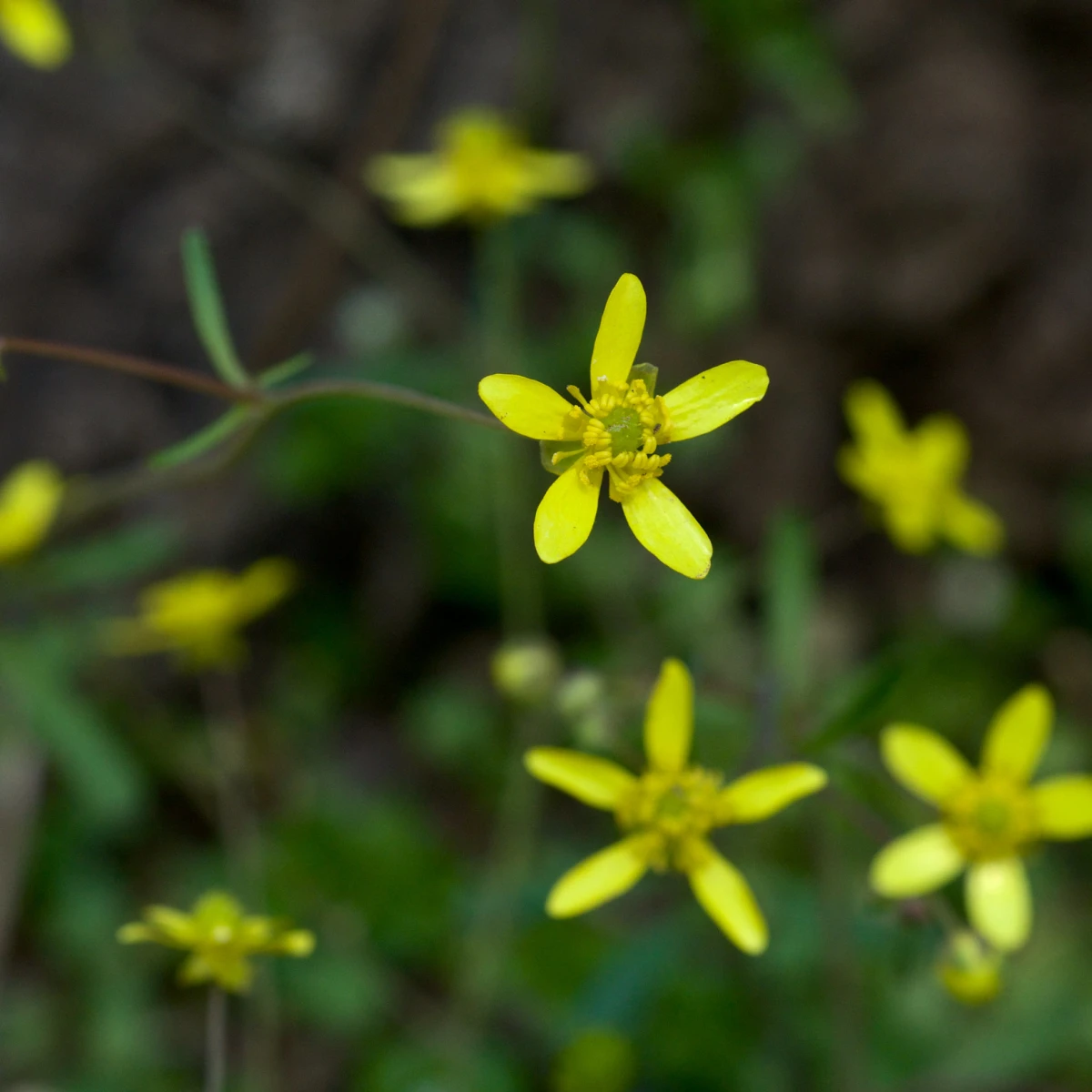
Know Your Natives – Harvey’s Buttercup
Harvey’s Buttercup (Ranunculus harveyi var. harveyi*) of the Buttercup (Ranunculaceae) family has an open structure and a succulent appearance. The genus name, based on Latin words for “frog” (rana) and “little” (unculus) relates to the occurrence of many buttercups in moist habitats. The specific epithet honors Francis LeRoy Harvey, faculty member of the Arkansas Industrial…
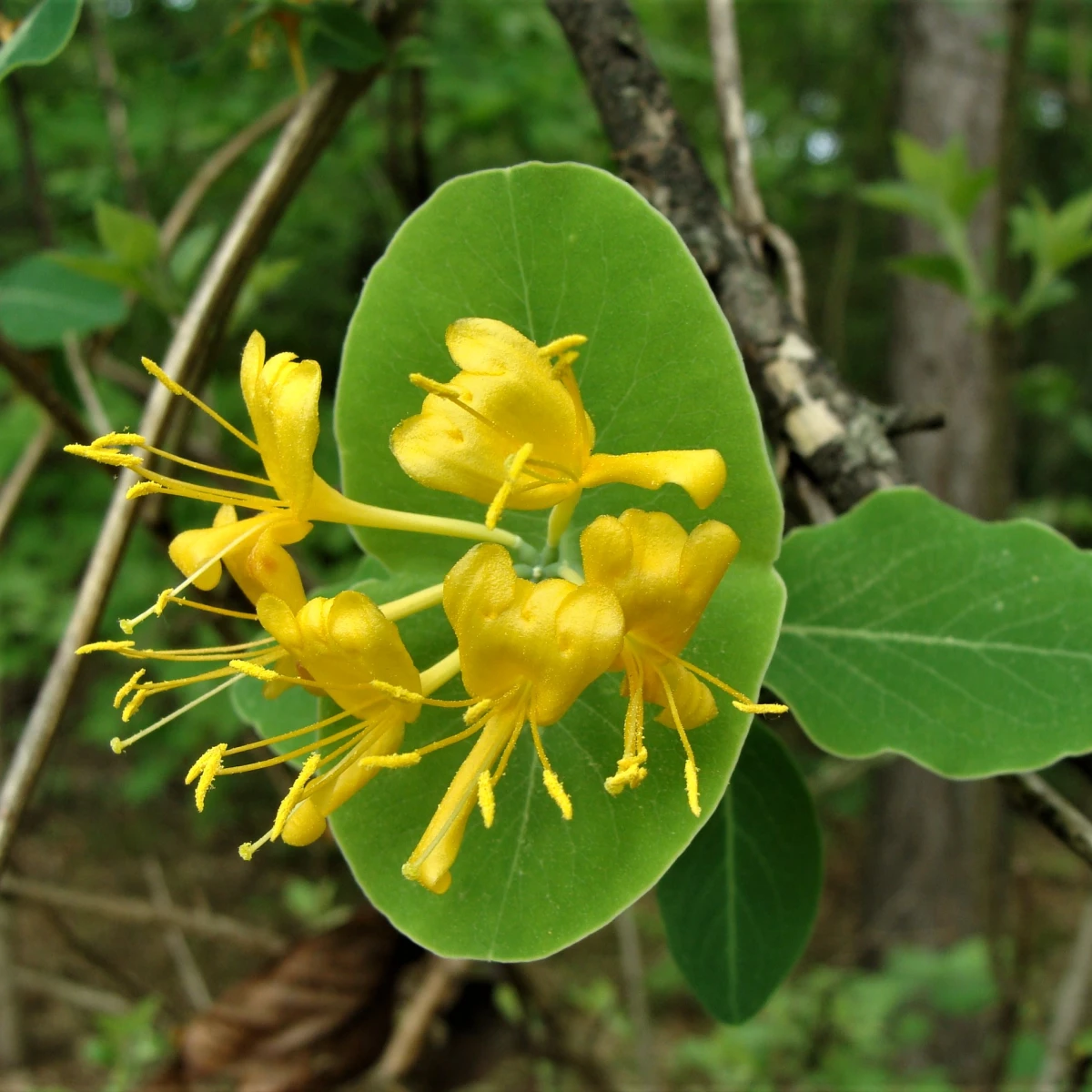
Know Your Natives – Yellow Honeysuckle
Yellow Honeysuckle (Lonicera flava) of the Honeysuckle (Caprifoliaceae) family is a twining vine with terminal clusters of yellow tubular flowers favored by swallowtail butterflies. The genus name honors Adam Lonicer* a German physician, botanist, and herbalist of the 16th Century. The specific epithet is Latin for “yellow”. In the U.S., principal areas of occurrence are…
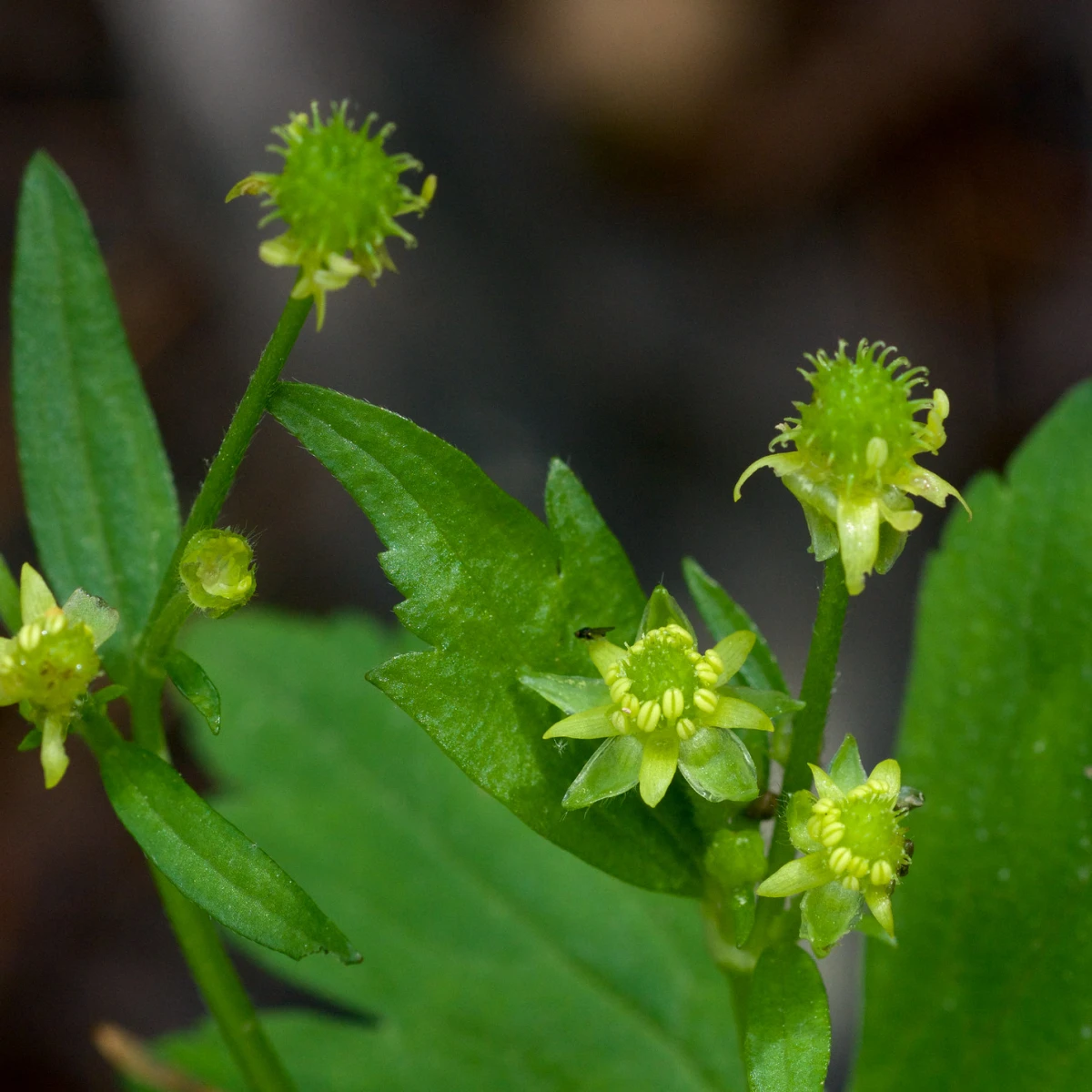
Know Your Natives – Hooked Buttercup
Hooked Buttercup (Ranunculus recurvatus var. recurvatus*) of the Buttercup (Ranunculaceae) family, one of 17 yellow-flowered (sometimes white) buttercups in Arkansas, has achenes (fruits) with prominently hooked beaks. The genus name is based on Latin words “rana” meaning frog and “unculus” meaning little and relates to the occurrence of many buttercups in moist habitats. The specific…
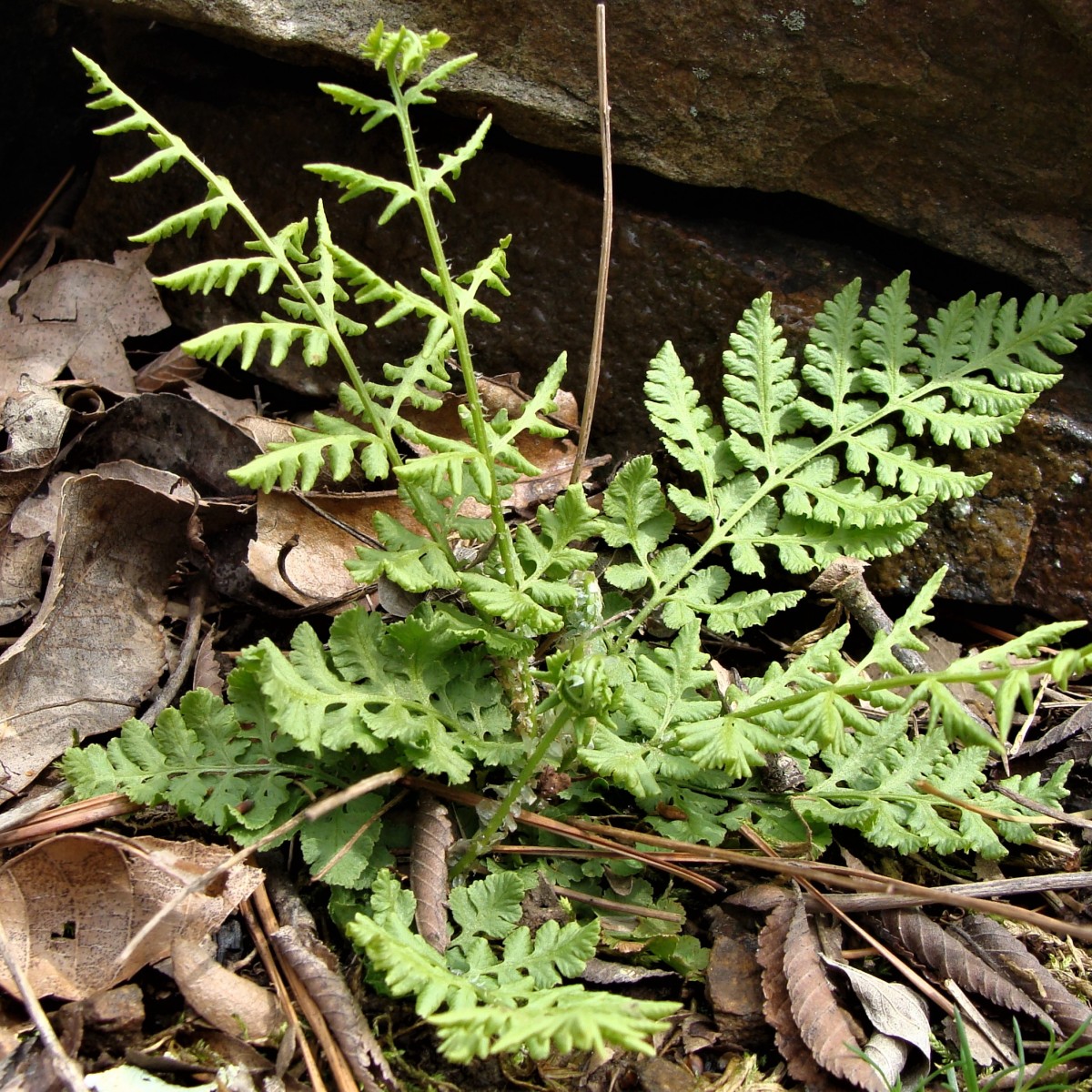
Know Your Natives – Blunt Lobed Woodsia
Blunt Lobed Woodsia (Woodsia obtusa subsp. obutsa*) of the Lady Fern (Woodsiaceae) family is a small to medium size, evergreen fern with thin leaves (fronds). The genus name recognizes Joseph Woods (1776-1864), an English Quaker architect who authored several books on plants of Europe and the British Isles. The specific epithet is Latin for “blunt”,…
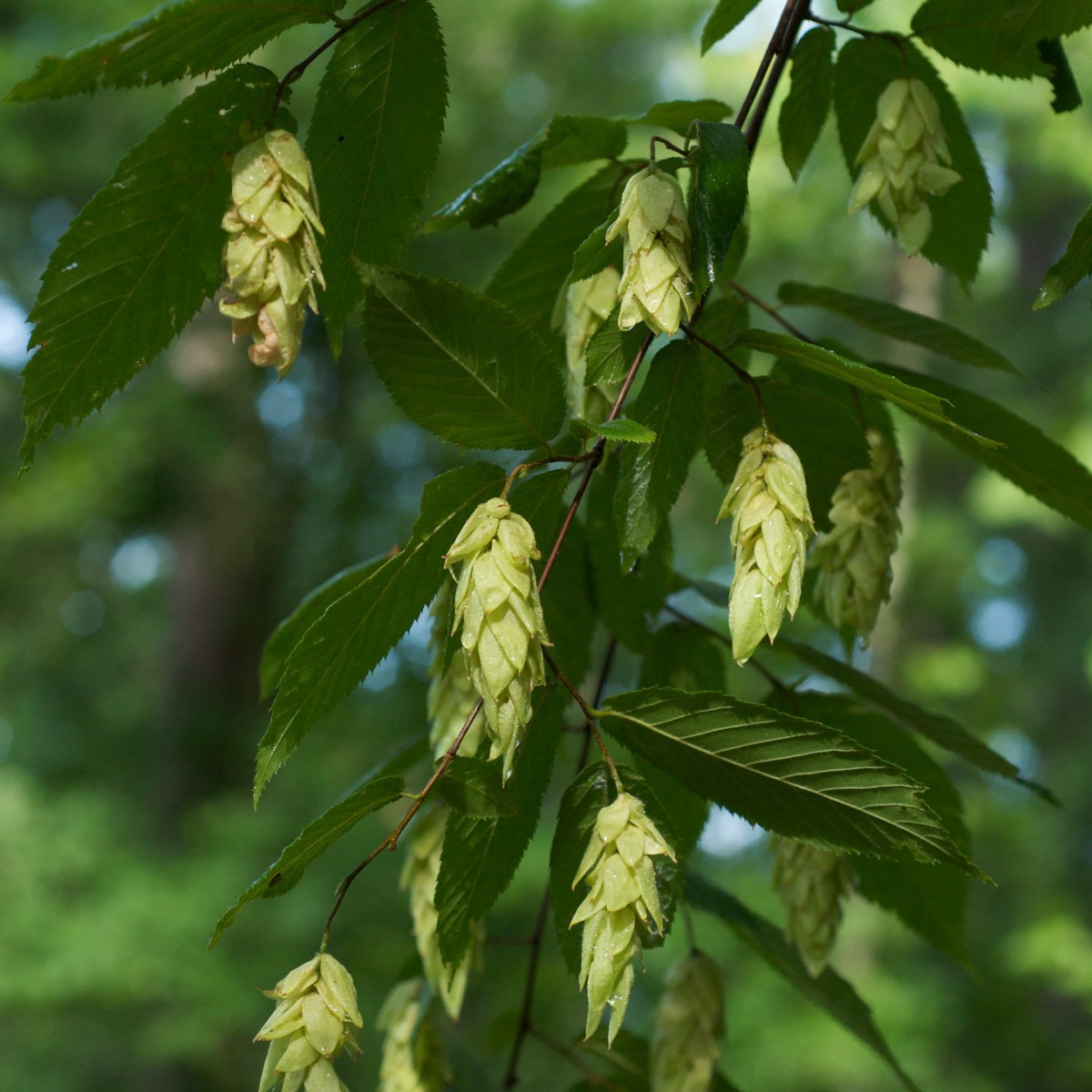
Know Your Natives – Hop Hornbeam
Hop Hornbeam (Ostrya virginiana) of the Birch (Betulaceae) family is a woodland to woodland-margin tree with staminate (male) and pistillate (female) catkins on the same tree (a monoecious species). The genus name is based on Latin and Greek words for “scale” in reference to prominent scale-like bracts on early catkins. The specific epithet is in…

Know Your Natives – Ozark Sunflower
Ozark Sunflower (Helianthus silphioides) is a tall herbaceous perennial with large simple leaves and composite flowers with a purplish brown central disk and bright yellow ligules. The genus name is based on Greek words for sun (helios) and flower (anthos). The specific epithet notes that appearance of flowers and involucre are similar to those of…
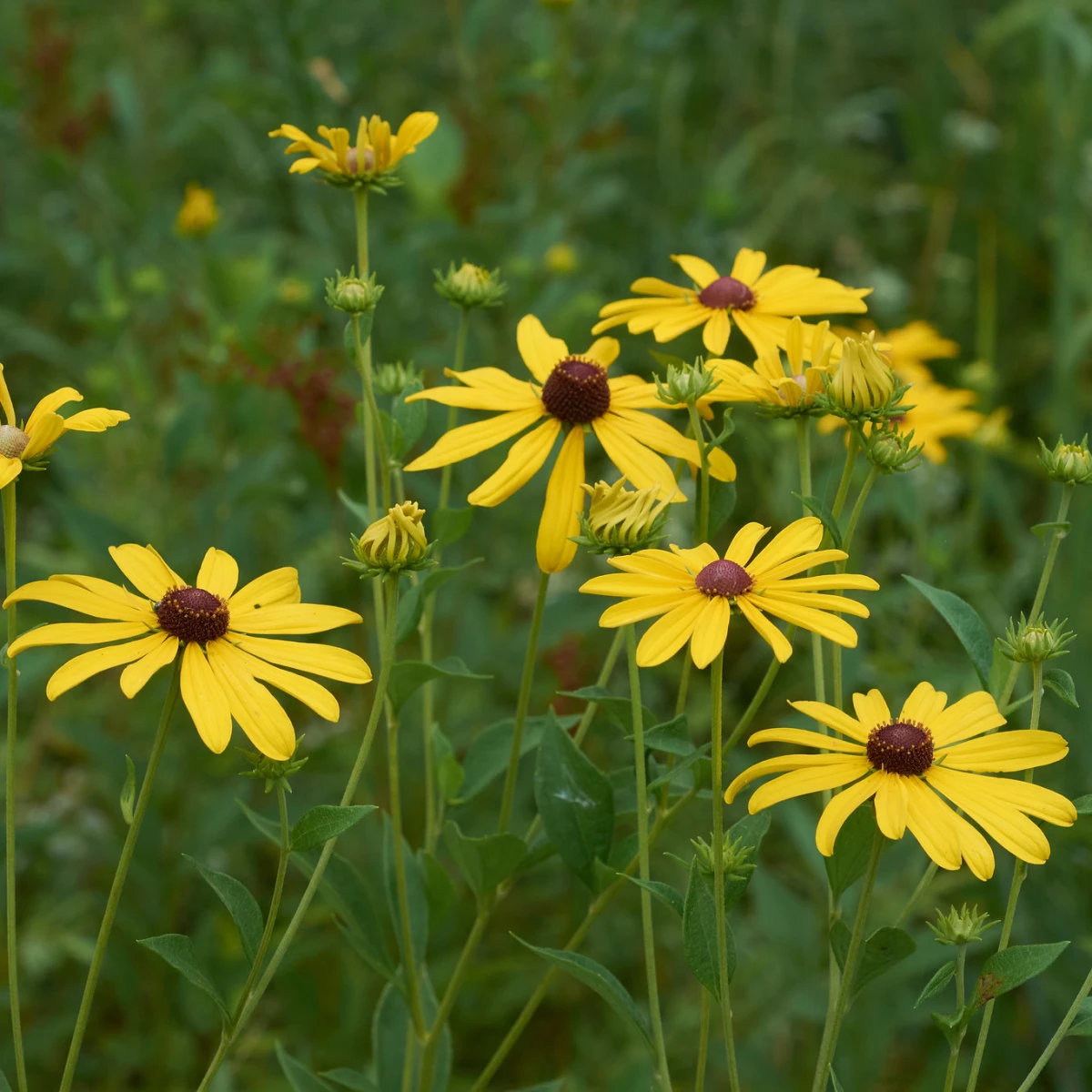
Know Your Natives – Sweet Coneflower
Sweet Coneflower (Rudbeckia subtomentosa) of the Aster family (Asteraceae) grows to 3-5 feet tall and has entire to lobed leaves. The genus name honors “Olof Rudbeck the Younger”, a Swedish botanist*. The specific epithet is Latin for “somewhat hairy” to denote its leaf pubescence. Sweet Coneflower occurs in a broad area extending from western Louisiana…
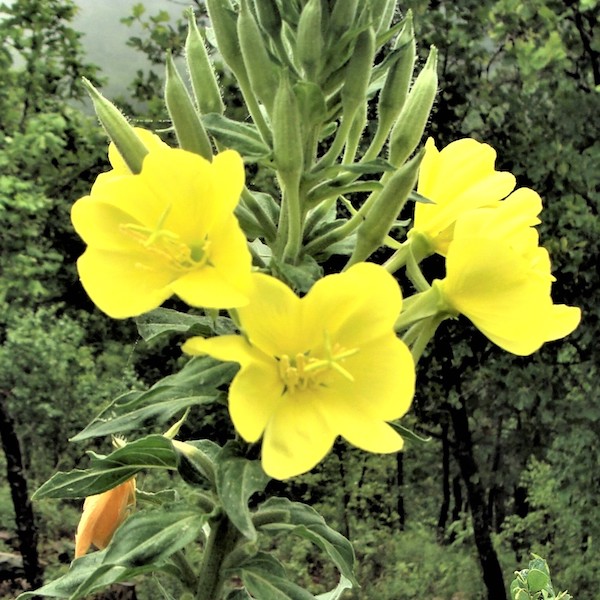
Know Your Natives – Common Evening Primrose
Common Evening Primrose (Oenothera biennis) of the Evening Primrose (Onagraceae) family is a large edible plant noted for its historic and current-day medicinal uses. The genus name is believed to be based on Greek words for “wine” (oinos) and “seeker” (thera). The specific epithet refers to the plant’s typical biennial life cycle, but plants may…
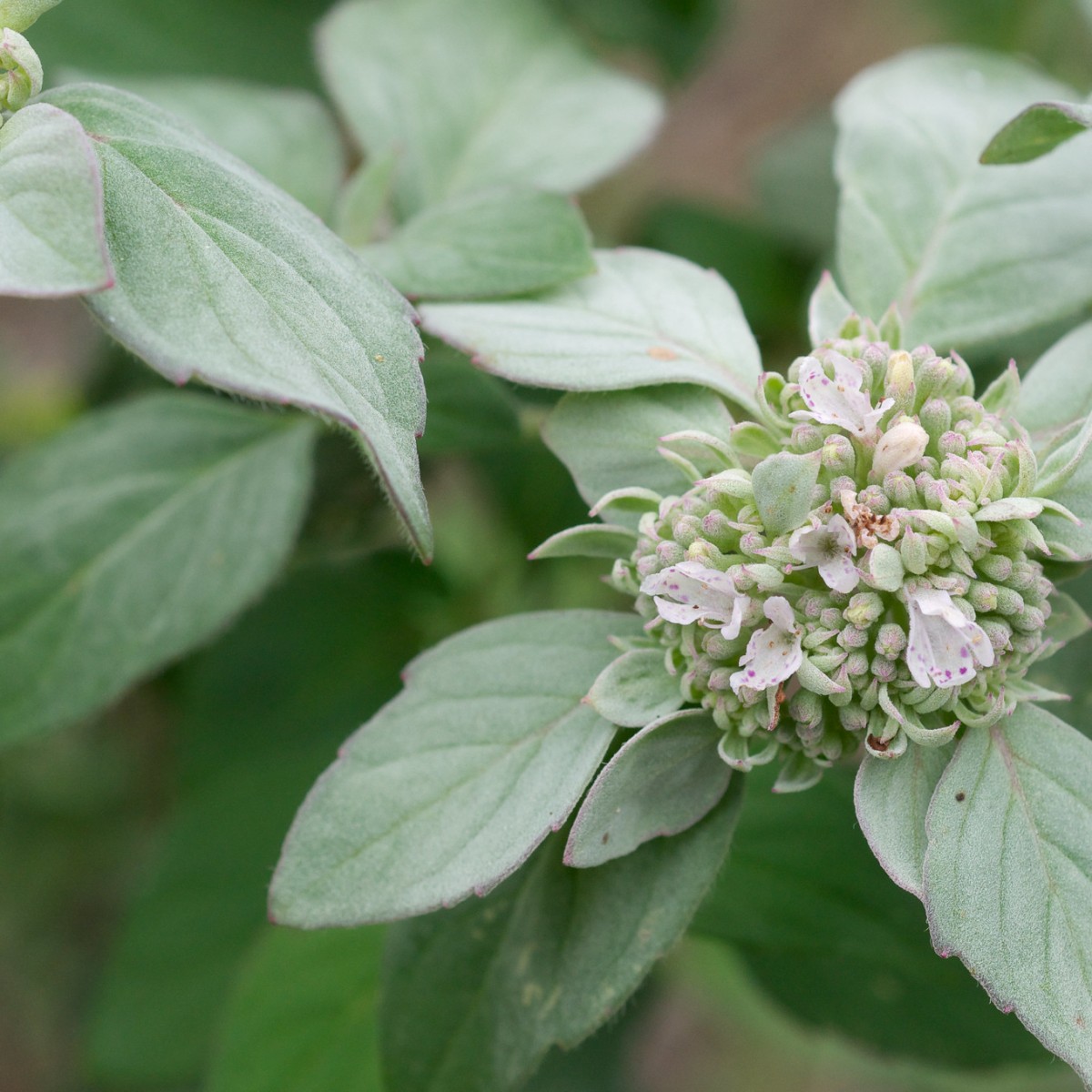
Know Your Natives – White-Leaf Mountain Mint
White-Leaf Mountain Mint (Pycnanthemum albescens) of the Mint (Lamiaceae) family is a tall, upright perennial forb with a strong minty scent and has an open, gangly structure. The genus name is based on Greek words for dense (pyknos) and flower (anthos) in reference to its flower clusters. The specific epithet is from a Latin word…
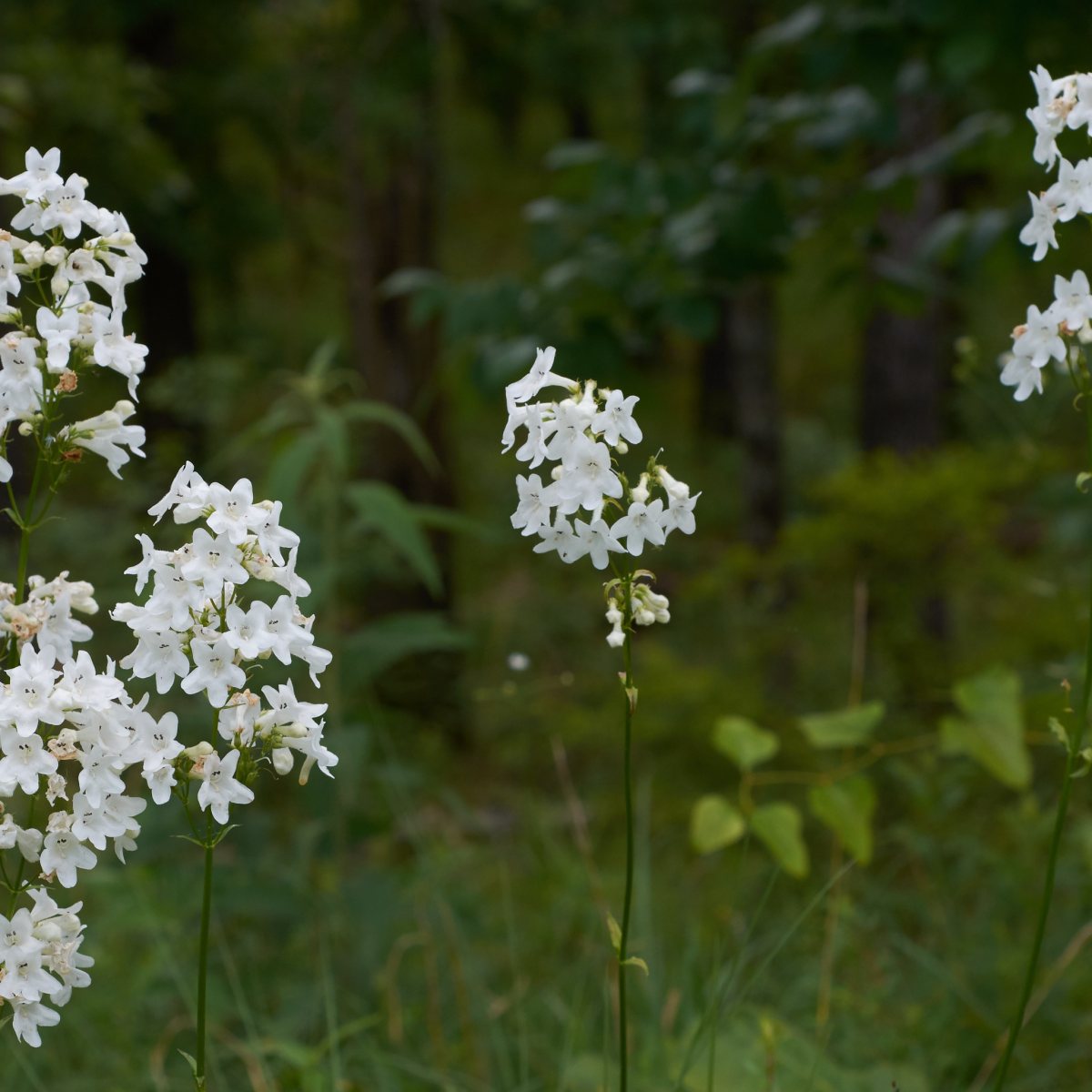
Know Your Natives – White Wand Beardtongue
White Wand Beardtongue (Penstemon tubiflorus; also sometimes spelled P. tubaeflorus) of the Plantain (Plantaginaceae) family, formerly of the Figwort (Scrophulariaceae) family, has sparsely leafed, erect stems bearing an elongate inflorescence of white tubular flowers. There is some disagreement on the exact etymology of the genus name. It may be based on words meaning five (“penta”)…
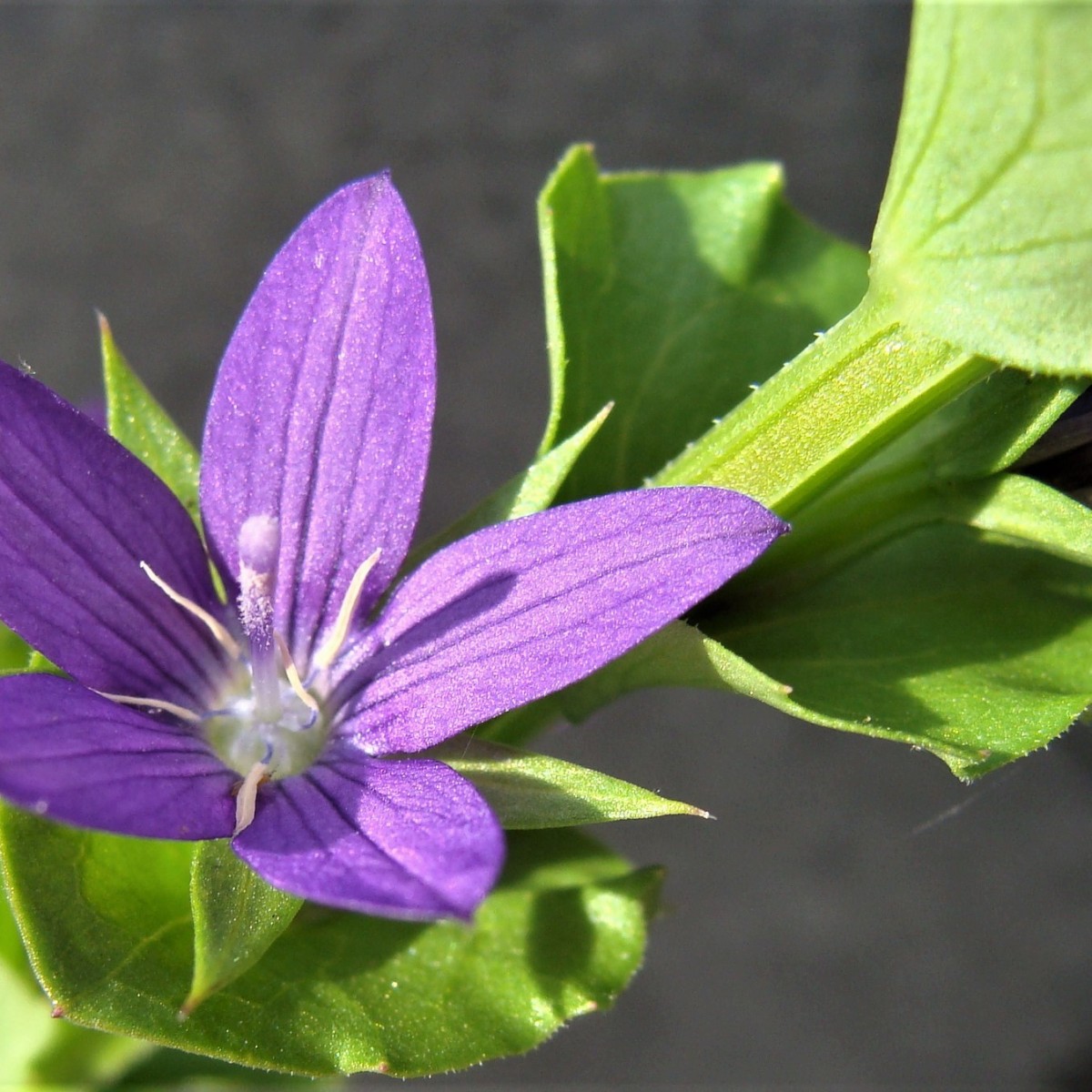
Know Your Natives – Clasping Venus’ Looking Glass
Clasping Venus’ Looking Glass (Triodanis perfoliata; formerly, Specularia perfoliata) of the Bellflower (Campanulaceae) family is an erect to reclined annual forb with clasping, ovate to orbicular leaves and both non-opening (cleistogamous – CL) flowers and opening (chasmogamous – CH) flowers. The genus name, based on Greek words for “three” and “tooth”, refers the typical number…
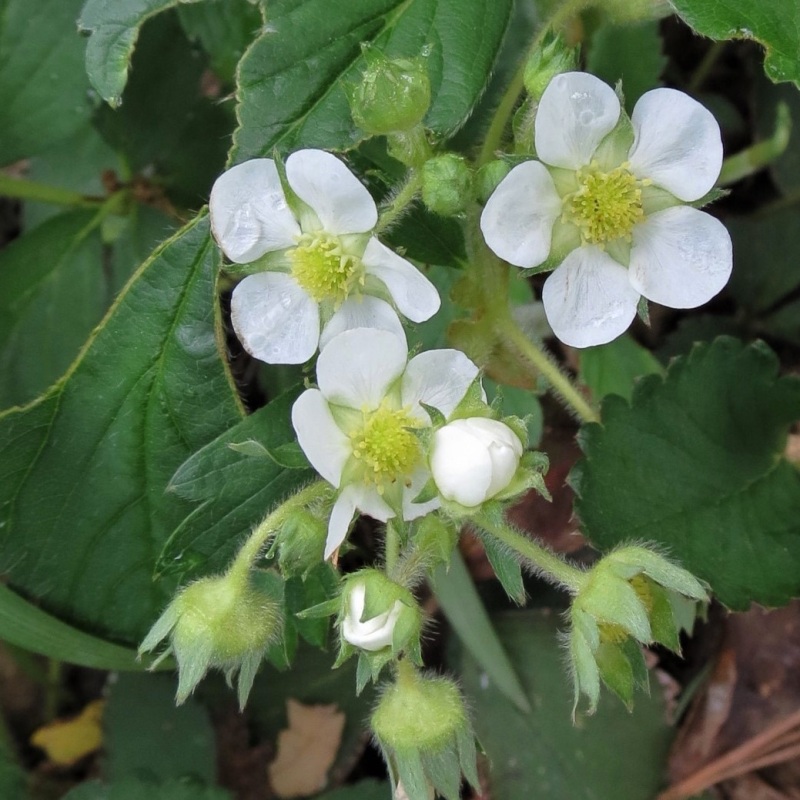
Know Your Natives – Wild Strawberry
Wild Strawberry (Fragaria virginiana) is an evergreen plant which produces scarlet strawberries* with achenes embedded in pits. The genus name derives from the Latin word “fragum” in reference to the fragrance of mature strawberries. The specific epithet refers to the state from which the species was originally collected and described. The common name probably originates…
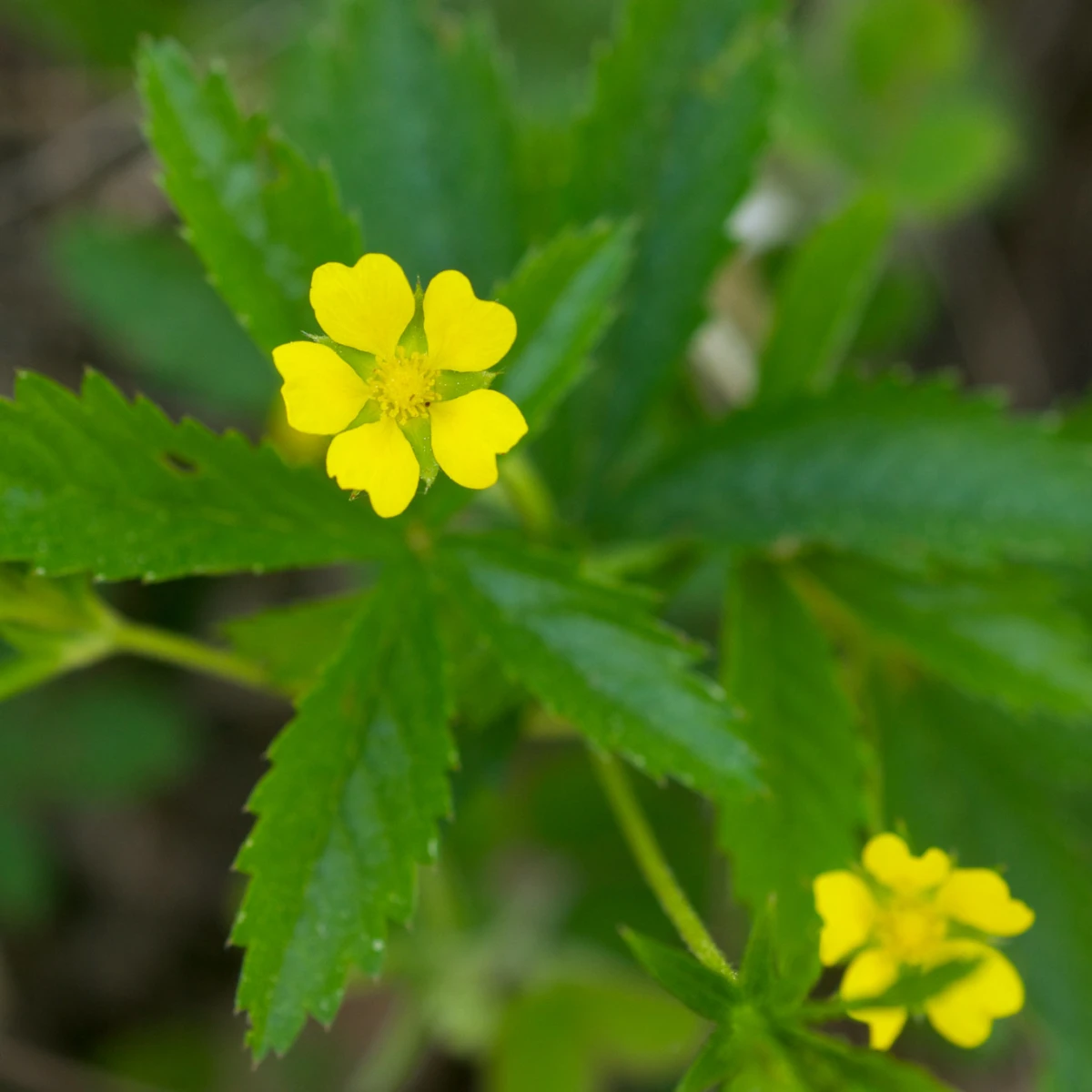
Know Your Natives – Old Field Cinquefoil
Old Field Cinquefoil (Potentilla simplex*) of the Rose (Rosaceae) family is a low-growing plant with short rhizomes and 5-petal, bright yellow flowers. The genus name is from the Latin word for “powerful” in reference to medicinal properties of some species of the genus. The specific epithet is Latin for “simple” in reference to the plant’s…
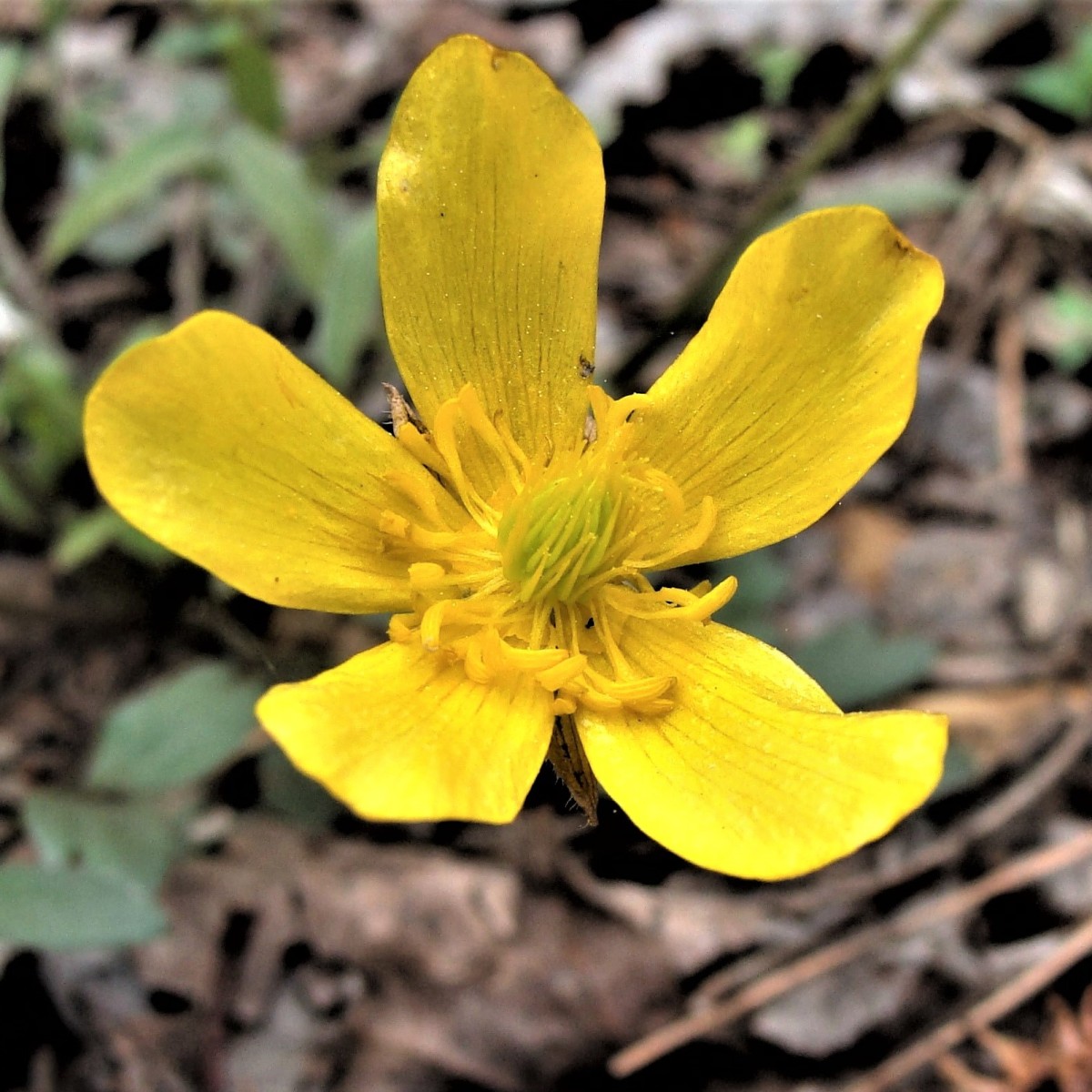
Know Your Natives – Hispid Buttercup
Hispid Buttercup (Ranunculus hispidus var. hispidus*) of the Buttercup (Ranunculaceae) family is an upland perennial forb with mostly 3-part basal and stem leaves and has soft spreading (bristly) pubescence on stems and petioles. The genus name is from the Latin for “little frog,” because many buttercups live in moist habitats. The specific epithet is Latin…

Know Your Natives – Downy Phlox
Downy Phlox (Phlox pilosa*) of the Phlox (Polemoniaceae) family is a semi-evergreen perennial forb with showy flowers of variable color and shape. The genus, Phlox, is derived from the Greek word meaning flame – a reference to flower color of some species. The specific epithet, pilosa, is from Latin meaning “hairy” – a reference to…
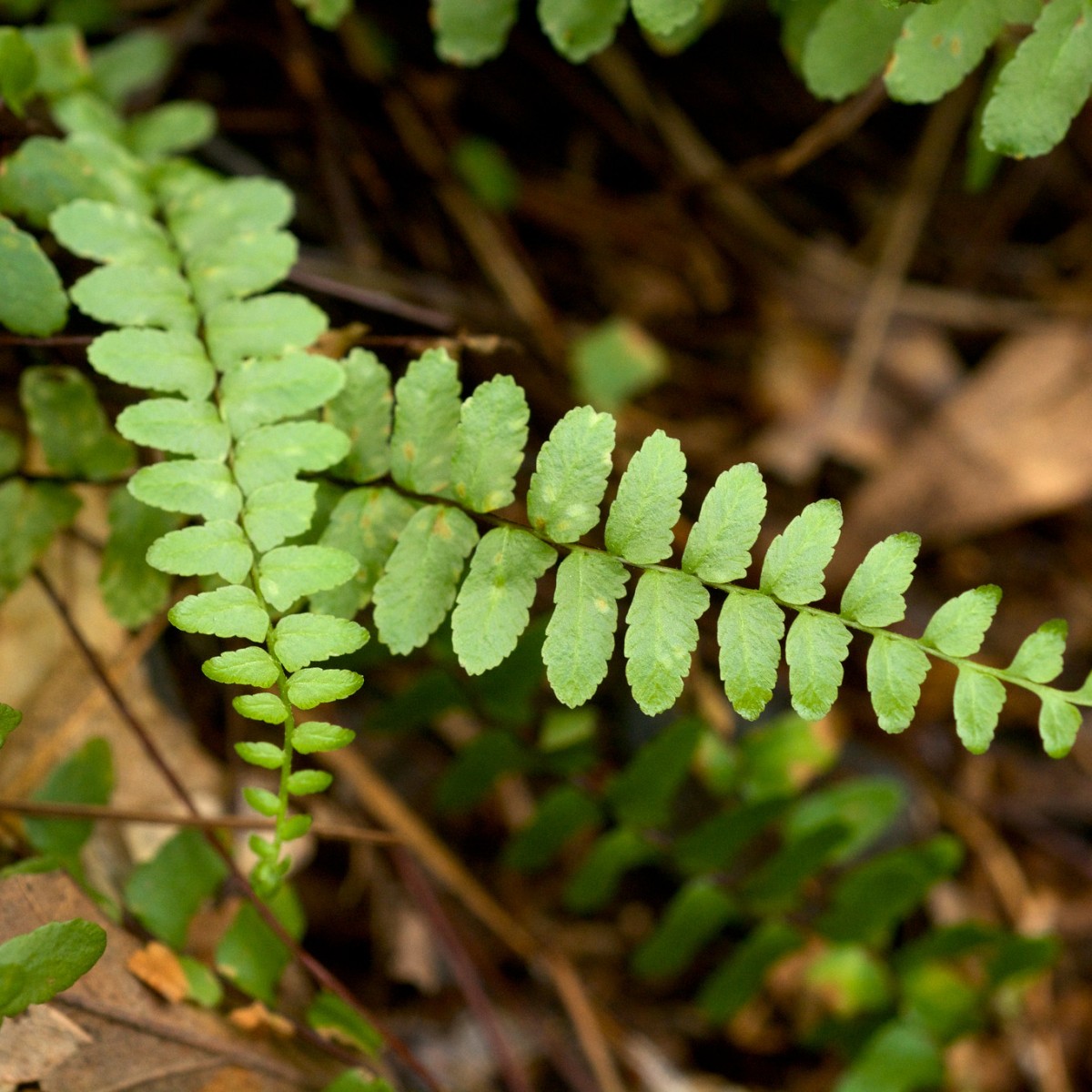
Know Your Natives – Ebony Spleenwort
Ebony Spleenwort (Asplenium platyneuron) of the Spleenwort Fern (Aspleniaceae) family is a small to medium size, once-cut, evergreen fern. The genus name is from Greek for “without a spleen” which may indicate that plants of this genus were historically thought to treat medical issues relating to the spleen. The specific epithet is from Greek words…

Know Your Natives – Rough Leaf Dogwood
Rough Leaf Dogwood (Cornus drummondii) of the Dogwood (Cornaceae) family is a small, deciduous tree with opposite leaves, open clusters of small white flowers, and striking, decorative white fruit. The genus name derives from the Latin for “horn” in apparent reference to the hardness of the wood. The specific epithet recognizes Scottish botanist Thomas Drummond…
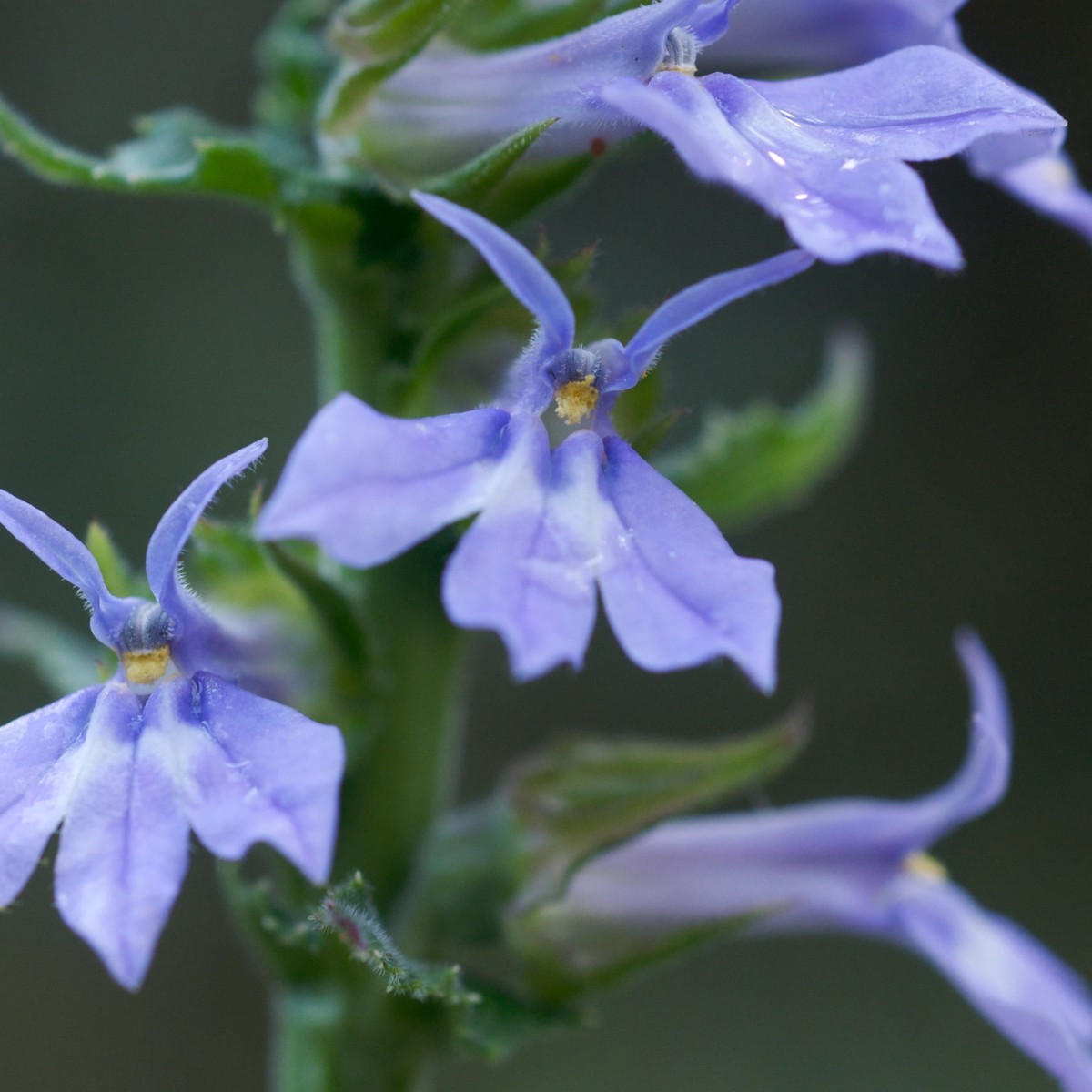
Know Your Natives – Downy Lobelia
Downy Lobelia (Lobelia puberula) of the Bellflower (Campanulaceae) family is a pubescent, herbaceous perennial bearing showy racemes of blue to lavender flowers. The genus name recognizes Matthias de l’Obel, a Flemish 16th-century physician and botanist who is credited with being the first to attempt to classify plants by attributes other than their medicinal uses. The specific epithet…

Know Your Natives – Butterfly Weed
Butterfly Weed (Asclepias tuberosa) of the Dogbane (Apocynaceae) family has clear sap (not milky) and showy orange (reddish orange to uncommonly yellow) flowers. The genus name honors the Greek god of medicine, Asklepios. The specific epithet is Latin for “swollen,” a reference to the roots. The species is widespread and common from eastern Texas to…

Know Your Natives – Trumpet Vine
Trumpet Vine or Trumpet Creeper (Campsis radicans) of the Trumpet Creeper (Bignoniaceae) family is a non-twining, tendril-free, woody vine with spectacular, large, orange to red, trumpet-shaped flowers. The genus name is Greek for “curved,” a reference to the curved stamens. The specific epithet is from Latin for “taking root” in reference to the aerial rootlets…

Know Your Natives – Stalked Wild Petunia
Stalked Wild Petunia (Ruellia pedunculata ssp. pedunculata*) of the Acanthus (Acanthaceae) family has flowers with large, showy, trumpet-shaped, purplish corollas, similar to those of the unrelated Garden Petunia**. The genus name honors Jean de la Ruelle (1474-1537), a French herbalist. The specific epithet, from the Latin, refers to the prominent peduncles or flower stalks. In…
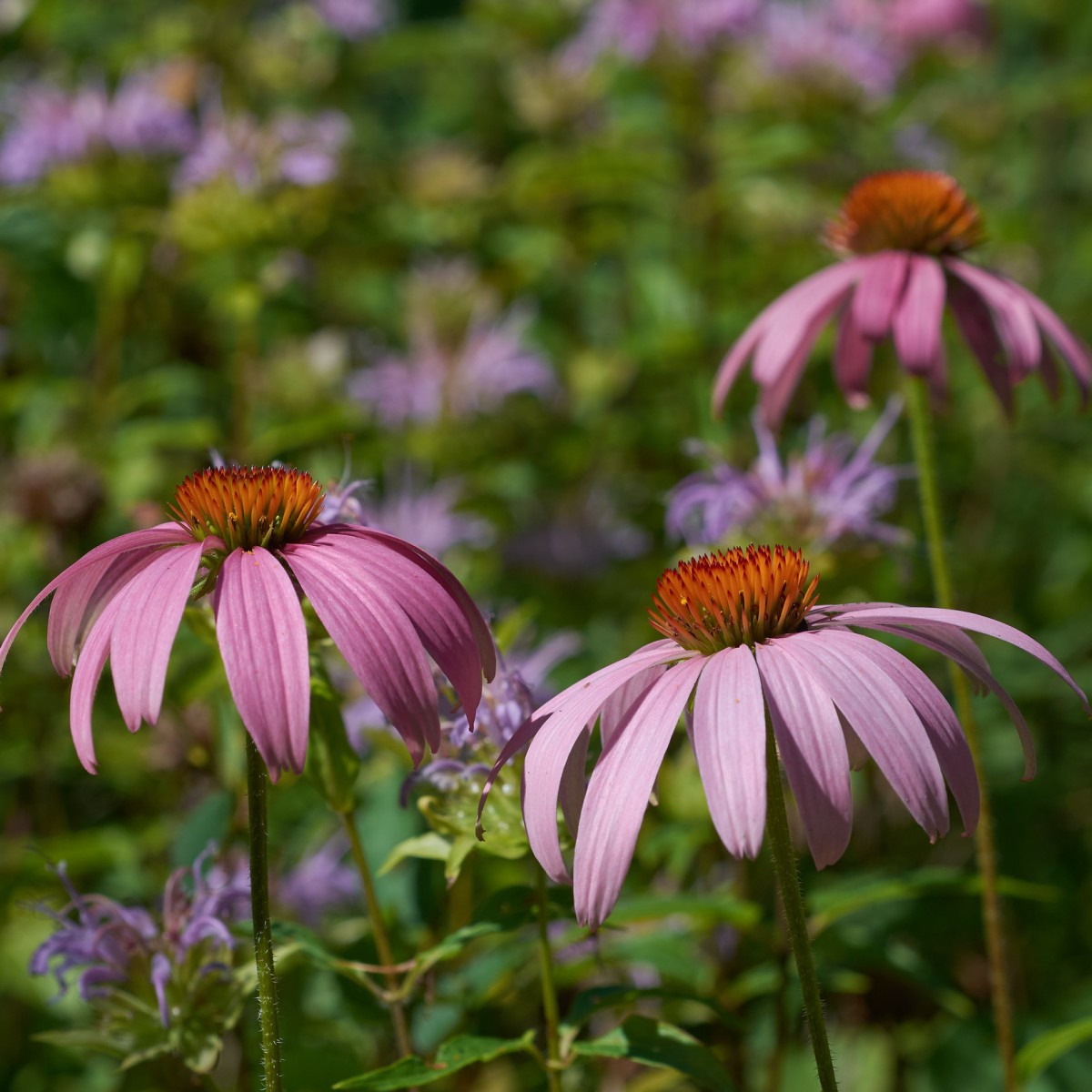
Know Your Natives – Purple Coneflower
Purple Coneflower (Echinacea purpurea) of the Sunflower or Composite (Asteraceae) family is an erect herbaceous perennial with large, showy, terminal flowerheads. The genus name is derived from a Greek word for “hedgehog” in reference to the spiny bracts that share the receptacle with the ray and disk florets. The specific epithet is Latin for “purple,”…
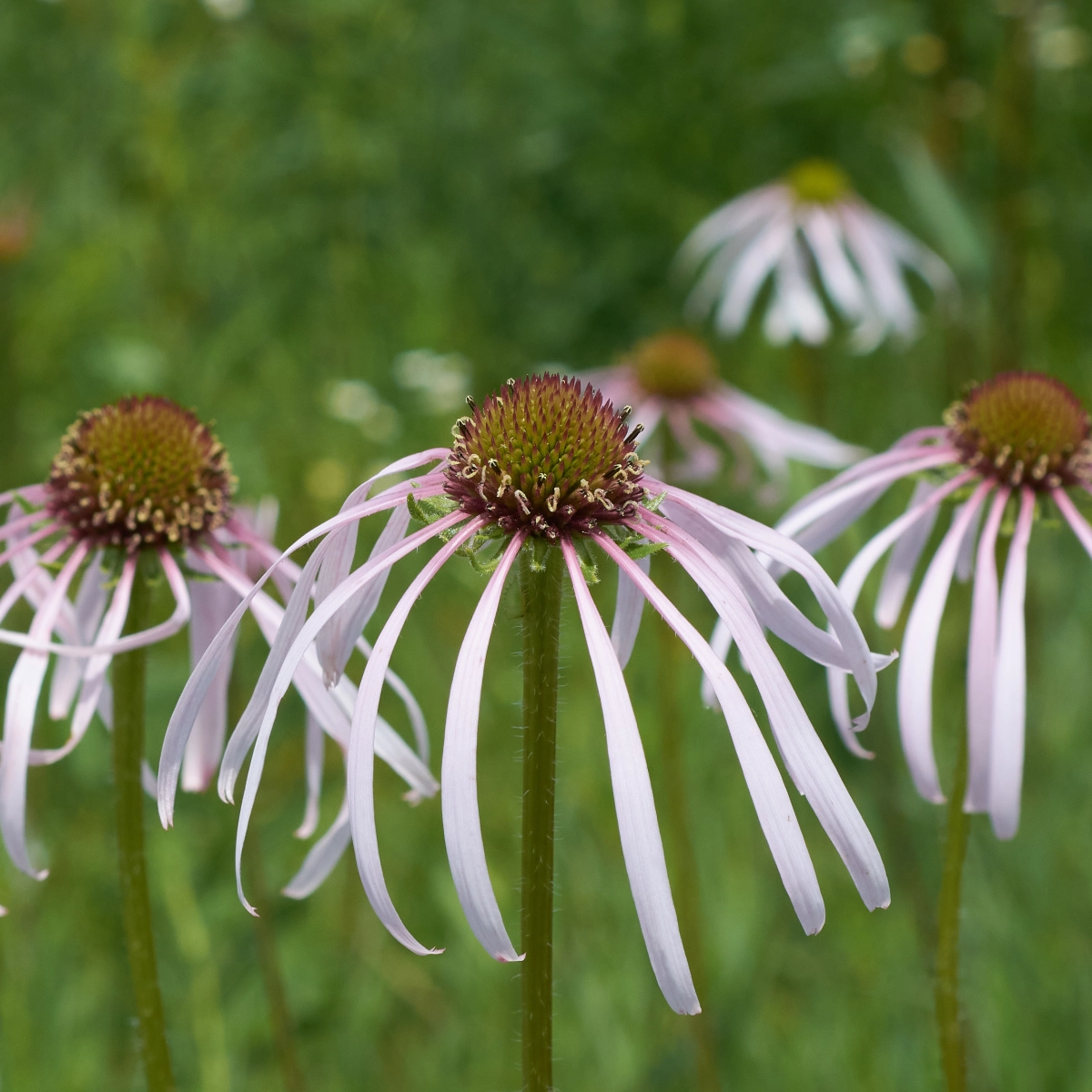
Know Your Natives – Pale Purple Coneflower
Pale Purple Coneflower (Echinacea pallida) of the Aster or Composite (Asteraceae) family is a heavily pubescent herbaceous perennial with long lanceolate leaves and large, spectacular flowerheads. The genus name is derived from a Greek word for “hedgehog” in reference to the spiny bracts covering the head. The specific epithet is Latin for “pale” in reference…

Know Your Natives – Showy Evening Primrose
Showy Evening Primrose (Oenothera speciosa) of the Evening-Primrose family (Onagraceae) is a colonial perennial with large pink to white flowers. The etymology of the genus name, used by Linnaeus, is ambiguous: It is apparently from a Greek word for wine seeker or sleep inducer or, quite on the other hand, for ass catcher; originally, it…
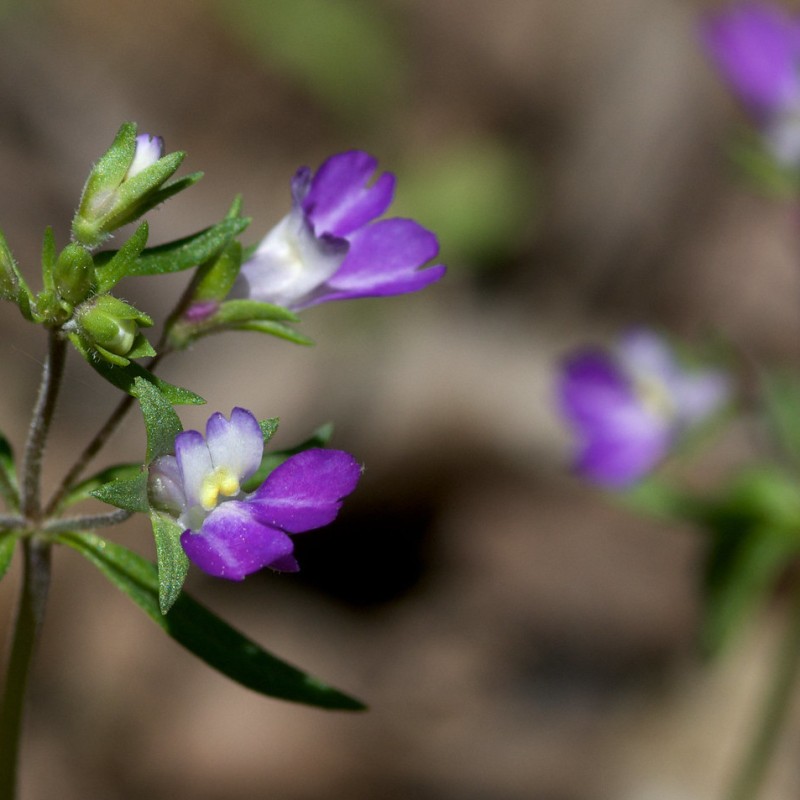
Know Your Natives – Violet Blue-Eyed Mary
Violet Blue-Eyed Mary (Collinsia violacea) of the Plantain (Plantaginaceae) family, formerly of the Figwort (Scrophulariaceae) family, is an annual forb with attractive bi-colored flowers. The genus name honors Zaccheus Collins (1764–1831), a Philadelphia botanist. The specific epithet is Latin for “purple.” The species has a restricted range in the central U.S. comprising northeast Texas, eastern…

Know Your Natives – Trumpet Honeysuckle
Trumpet Honeysuckle (Lonicera sempervirens) of the Honeysuckle (Caprifoliaceae) family is a twining vine with spectacular, red and orange, trumpet-shaped flowers. The genus name honors Adam Lonicer,* a German botanist and herbalist. The specific epithet from the Latin for “always” and “green,” denotes the plant’s evergreen foliage in warmer climates. Occurrence in the U.S. extends from…

Know Your Natives – Southern Woolly Violet
Southern Woolly Violet (Viola villosa) of the Violet (Violaceae) family is a small perennial herb with evergreen leaves and early flowers. The genus name is the classical Latin name for violets. The specific epithet is Latin for “hairy,” emphasizing the plant’s dense pubescence. Scattered populations occur across the southeastern U.S. from central Oklahoma and eastern…
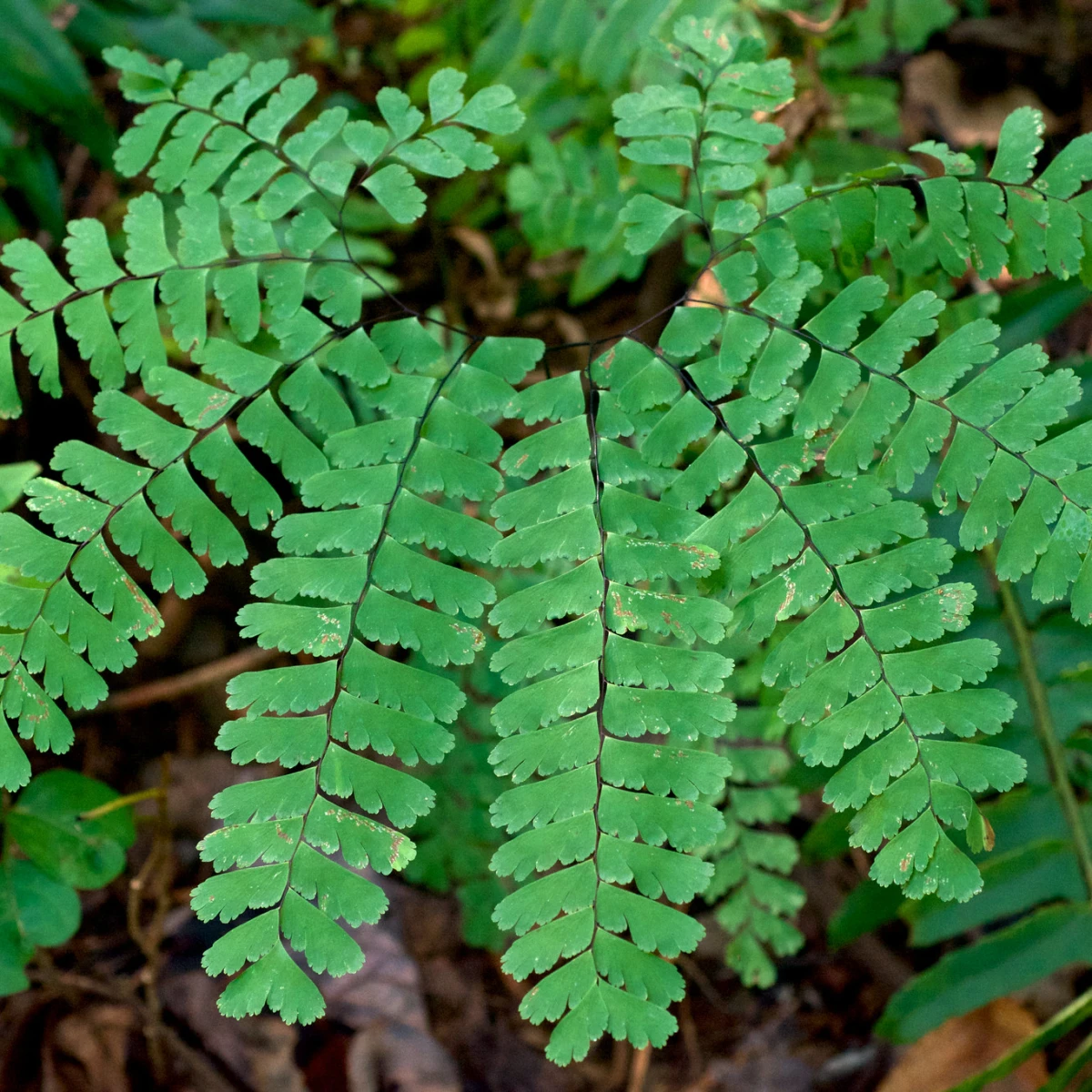
Know Your Natives – Northern Maidenhair Fern
Northern Maidenhair Fern (Adiantum pedatum) of the Brake Fern (Pteridaceae) family, formerly of the Polypody (Polypodiaceae) family, is a beautiful, shade-loving fern with broad, circular fronds. The genus name is from a Greek word for “unwetted” in reference to the leaves’ ability to shed raindrops. The specific epithet refers to the foot-like shape of the…
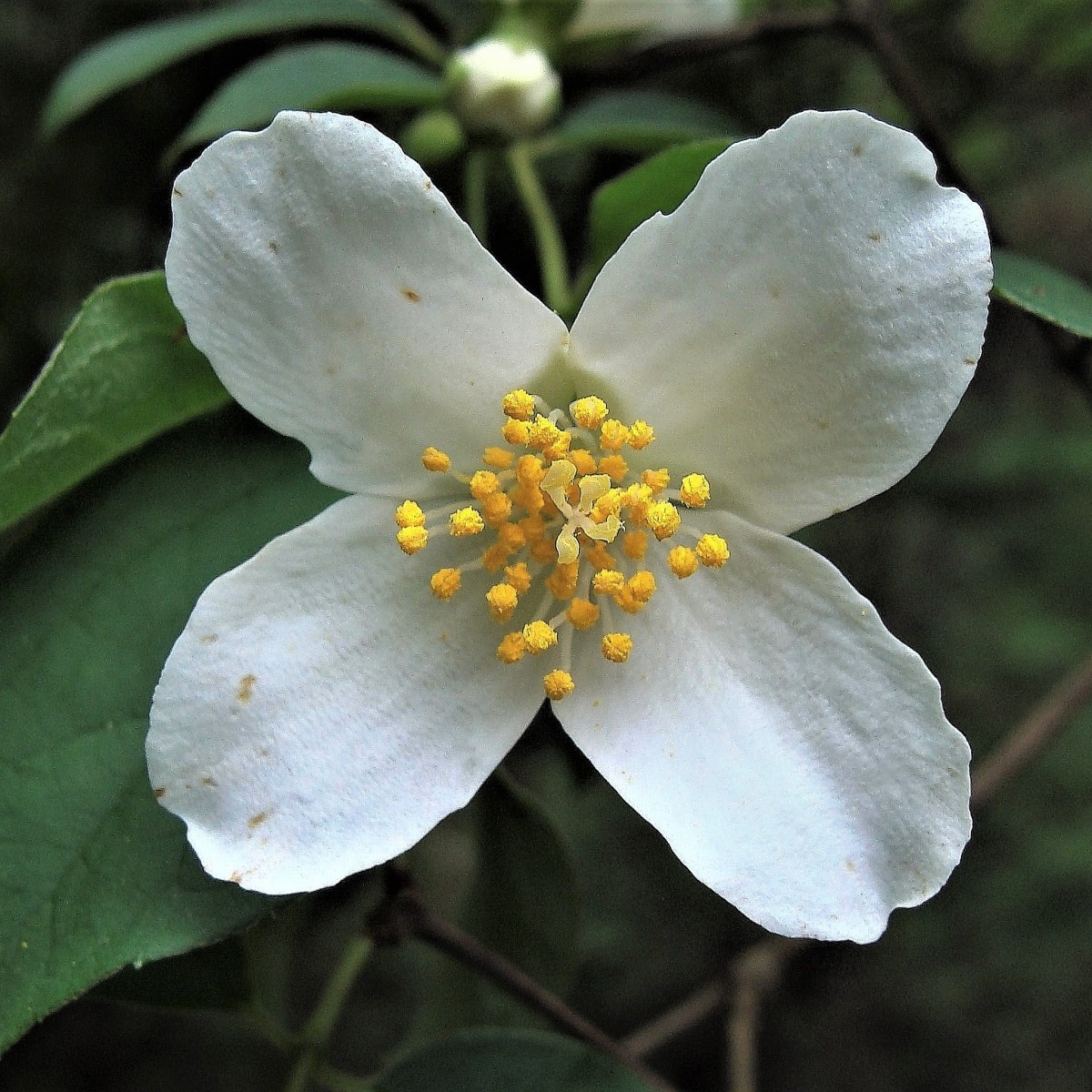
Know Your Natives – Ozark Mock Orange
Ozark Mock Orange (Philadelphus pubescens) of the Hydrangea (Hydrangeaceae) family, formerly of the Saxifrage (Saxifragaceae) family, is a deciduous shrub with bold, showy, four-petaled white flowers. The genus name is said to honor Ptolemy II Philadelphus, pharaoh of Egypt, 283-246 BC. The specific epithet is Latin for “downy.” The common name “mock orange” refers to…
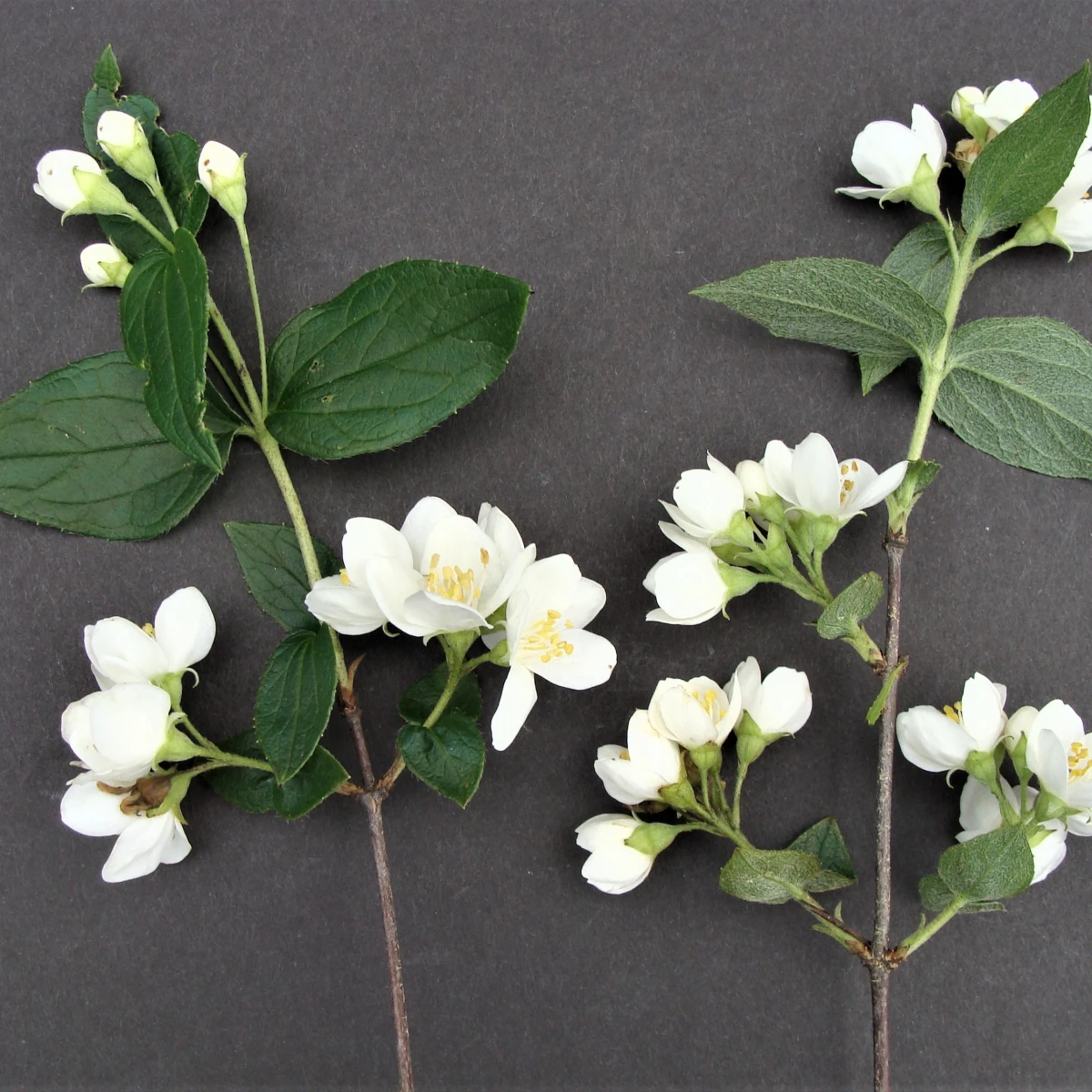
Know Your Natives – Hairy Mock Orange
Hairy Mock Orange (Philadelphus hirsutus) of the Hydrangea (Hydrangeaceae) family, formerly of the Saxifrage (Saxifragaceae) family, is a deciduous shrub with rather large, showy, four-petaled white flowers. The genus name is said to honor Ptolemy II Philadelphus, pharaoh of Egypt (283-246 BC). The specific epithet is Latin for “hairy.” The common name “Mock Orange” refers…
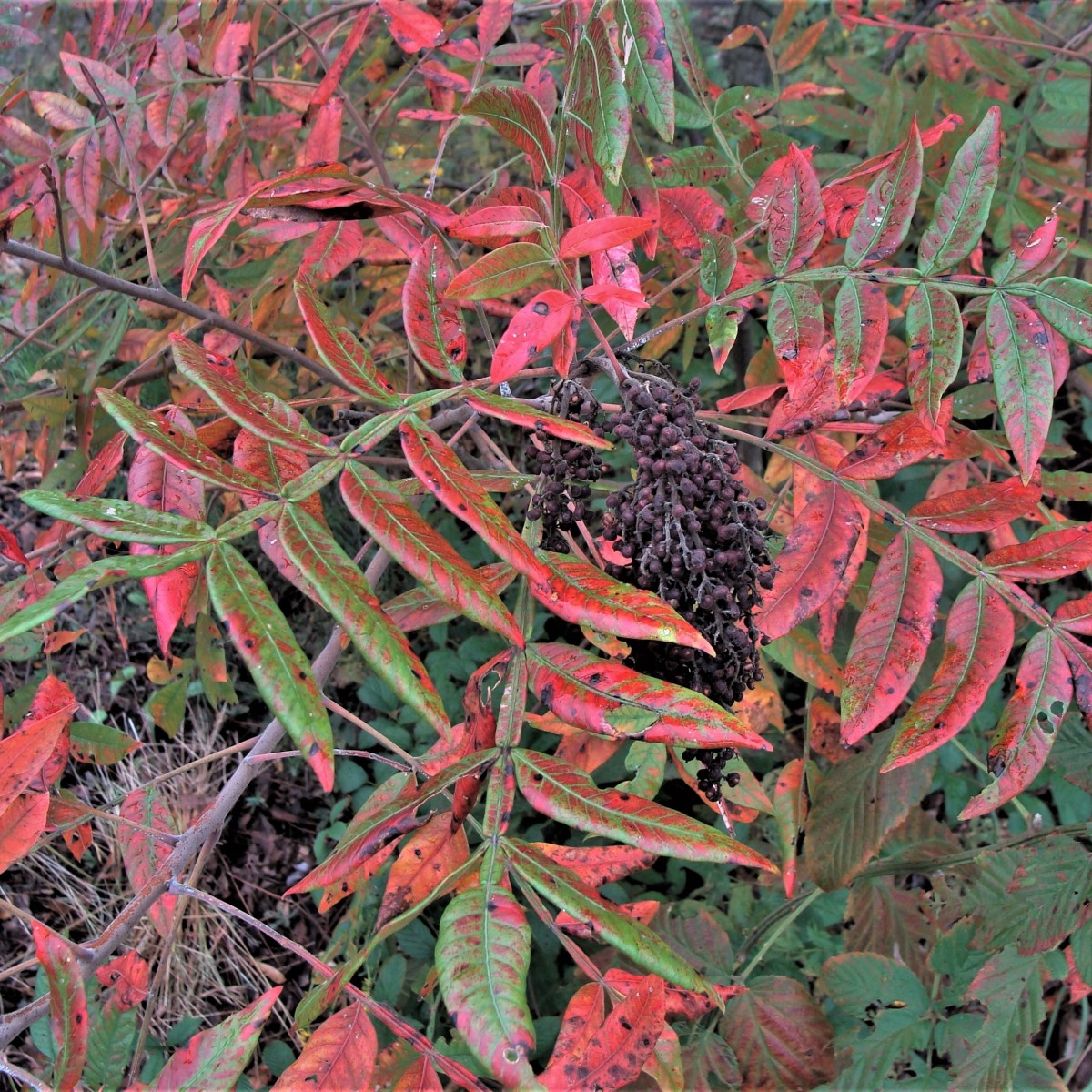
Know Your Natives – Winged Sumac
Winged Sumac (Rhus copallinum*) of the Cashew (Anacardiaceae) family is a deciduous shrub or small tree that forms clonal colonies from lateral roots. Rhus is the old Greek and Latin name for sumac. The specific epithet, based on an Aztec word, translates as “resinous,” in reference to its sap, or copal, a name given to…
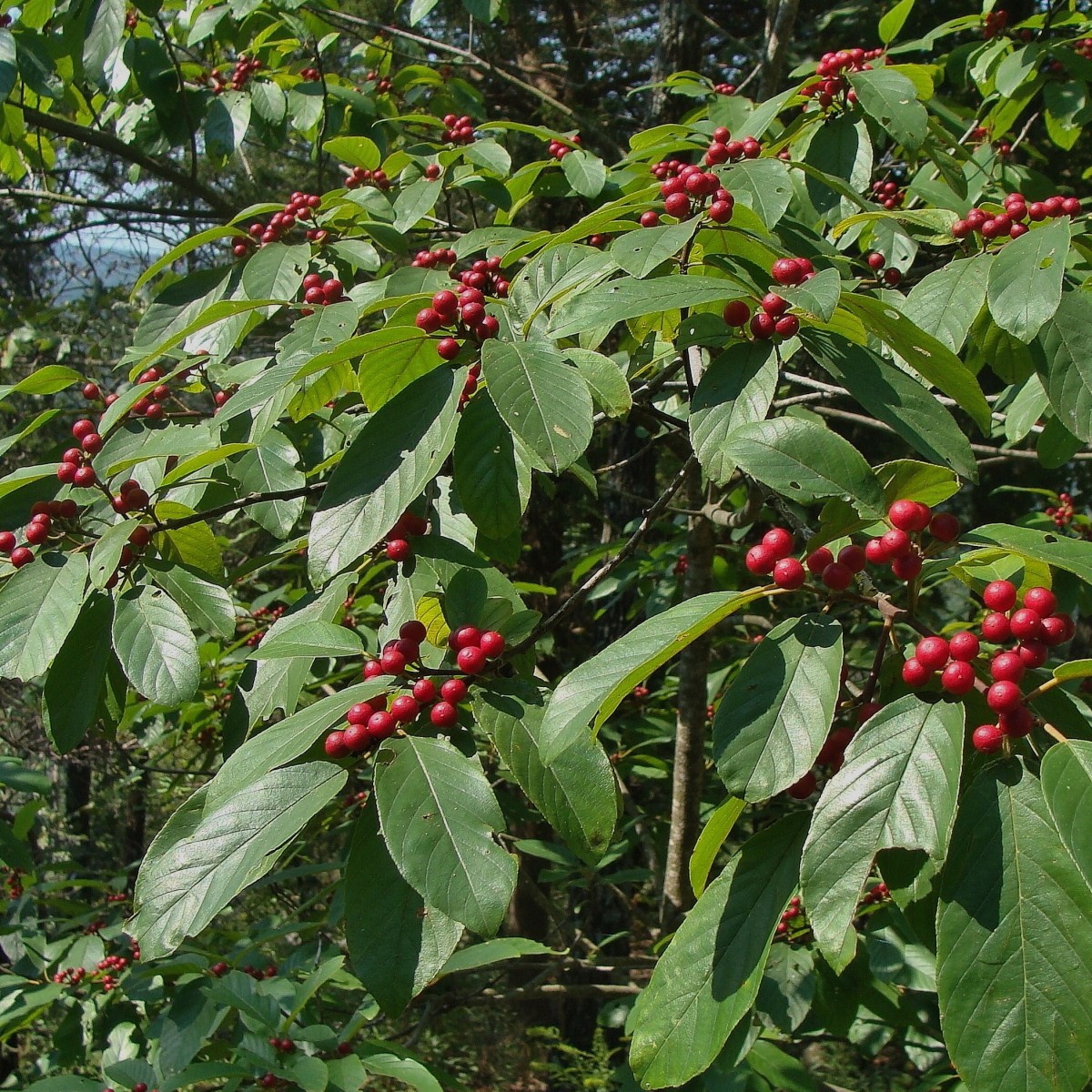
Know Your Natives – Carolina Buckthorn
Carolina Buckthorn (Frangula caroliniana, formerly Rhamnus caroliniana) of the Buckthorn (Rhamnaceae) family is an elegant, thornless (!), deciduous shrub or small tree, with simple shining leaves and red to black berry-like fruits. (The tiny, whitish flowers are easily overlooked.) The genus name originates from the word “frangible” meaning “easily broken.” The specific epithet recognizes that…
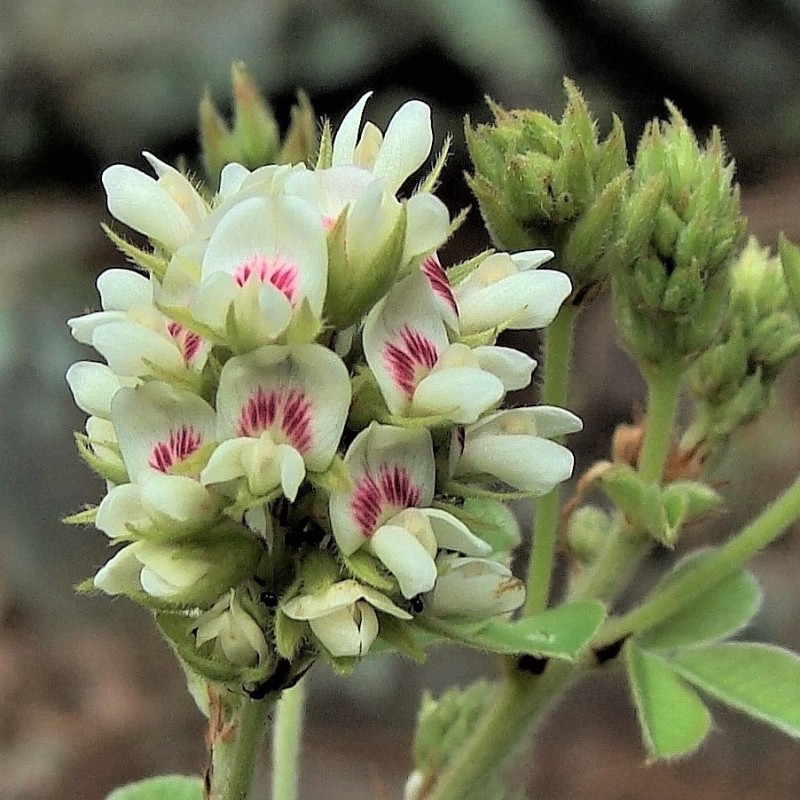
Know Your Natives – Hairy Bush Clover
Hairy Bush Clover (Lespedeza hirta) of the Pea or Legume (Fabaceae) family is a perennial herb with stems to 3+ feet tall, bearing tightly clustered racemes of small creamy white flowers. The genus name is dedicated to Vicente Manuel de Cespedes (an early botanical text misspelled his name as “de Lespedez”), governor of the Spanish…

Know Your Natives – Fragrant Sumac
Fragrant Sumac (Rhus aromatica var. aromatica) of the Sumac (Anacardiaceae) family is a dioecious, low-growing, non-suckering, non-poisonous shrub with tiny yellow flowers that emerge before the leaves. The genus name Rhus is the old Greek and Latin name for sumac. The specific epithet is Latin for “aromatic” or “fragrant,” describing the strong and pleasant scent…
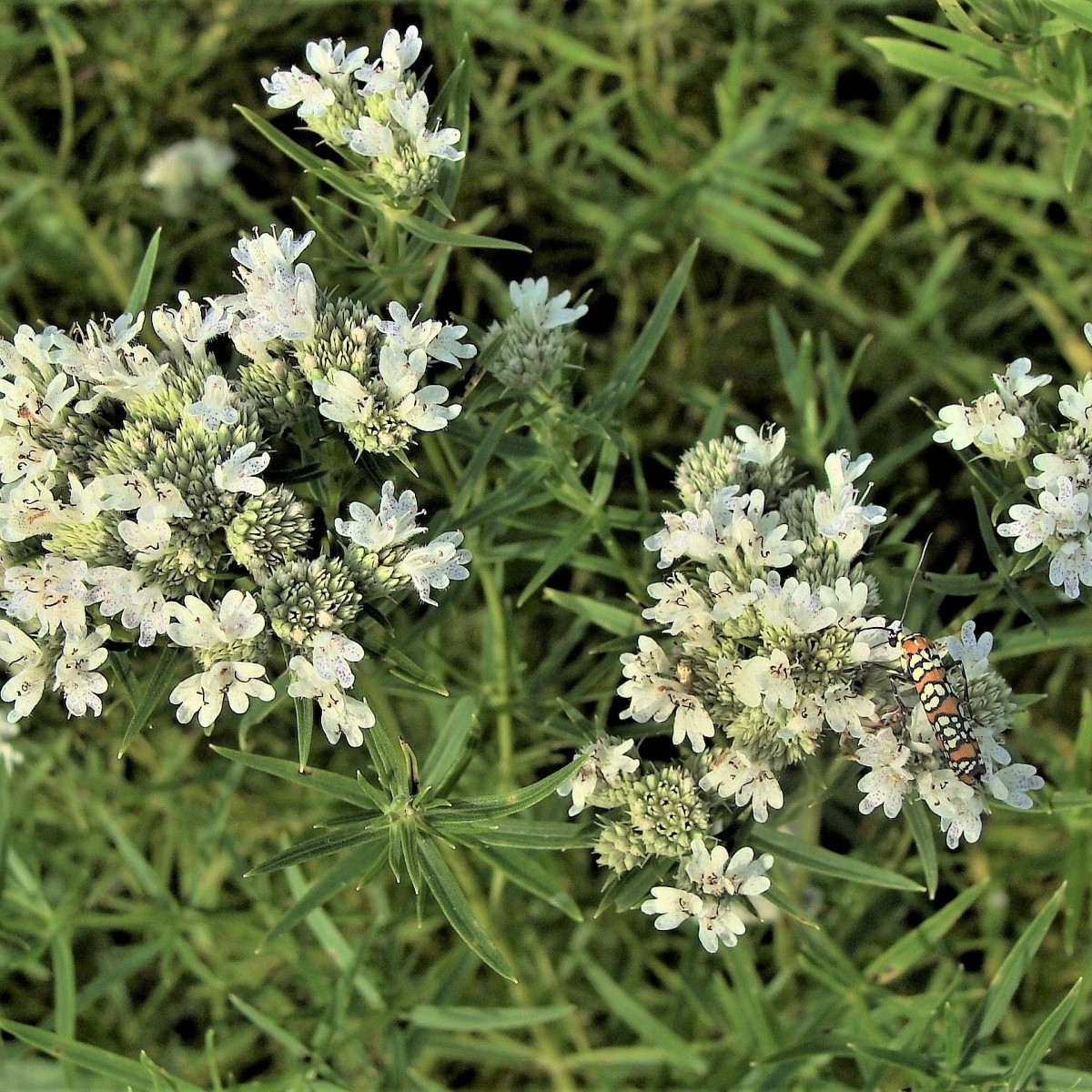
Know Your Natives – Slender Mountain Mint
Slender Mountain Mint (Pycnanthemum tenuifolium) of the Mint (Lamiaceae/Labiatae) family is a rhizomatous plant with narrow, linear leaves that give the plant an attractive, airy appearance. The genus name is based on Greek words for “dense” and “flower.” The specific epithet is from the Latin for “slender leaved.” The species is widespread across the eastern…

Know Your Natives – Downy Ragged Goldenrod
Downy Ragged Goldenrod* (Solidago petiolaris**) of the Aster, Sunflower, or Composite (Asteraceae) family has stiff lanceolate leaves on unbranched stems that are topped by an unusually large array of golden-yellow flower heads. The genus name is based on the Latin solidus, meaning “whole,” in reference to purported health benefits of some species. The specific epithet…
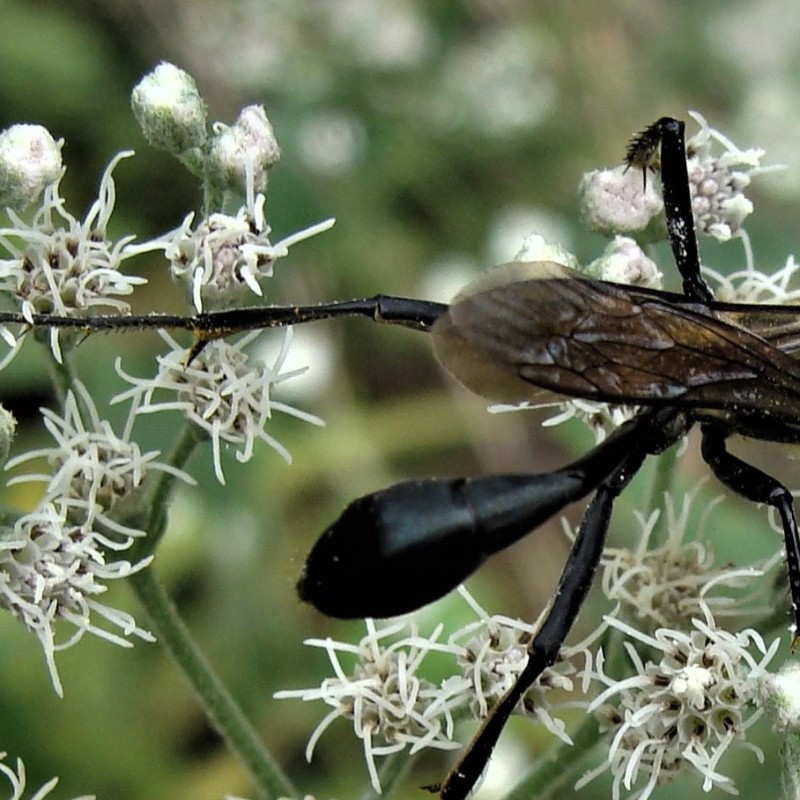
Know Your Natives – Late Boneset
Late Boneset (Eupatorium serotinum) of the Aster, Sunflower, or Composite (Asteraceae) family is a tall herbaceous perennial with small, clustered, whitish flowerheads that lack ray florets. The genus name recognizes Mithridates Eupator who invented a “universal antidote” against poisoning and is said to have used a species of the genus in medicine. The specific epithet…
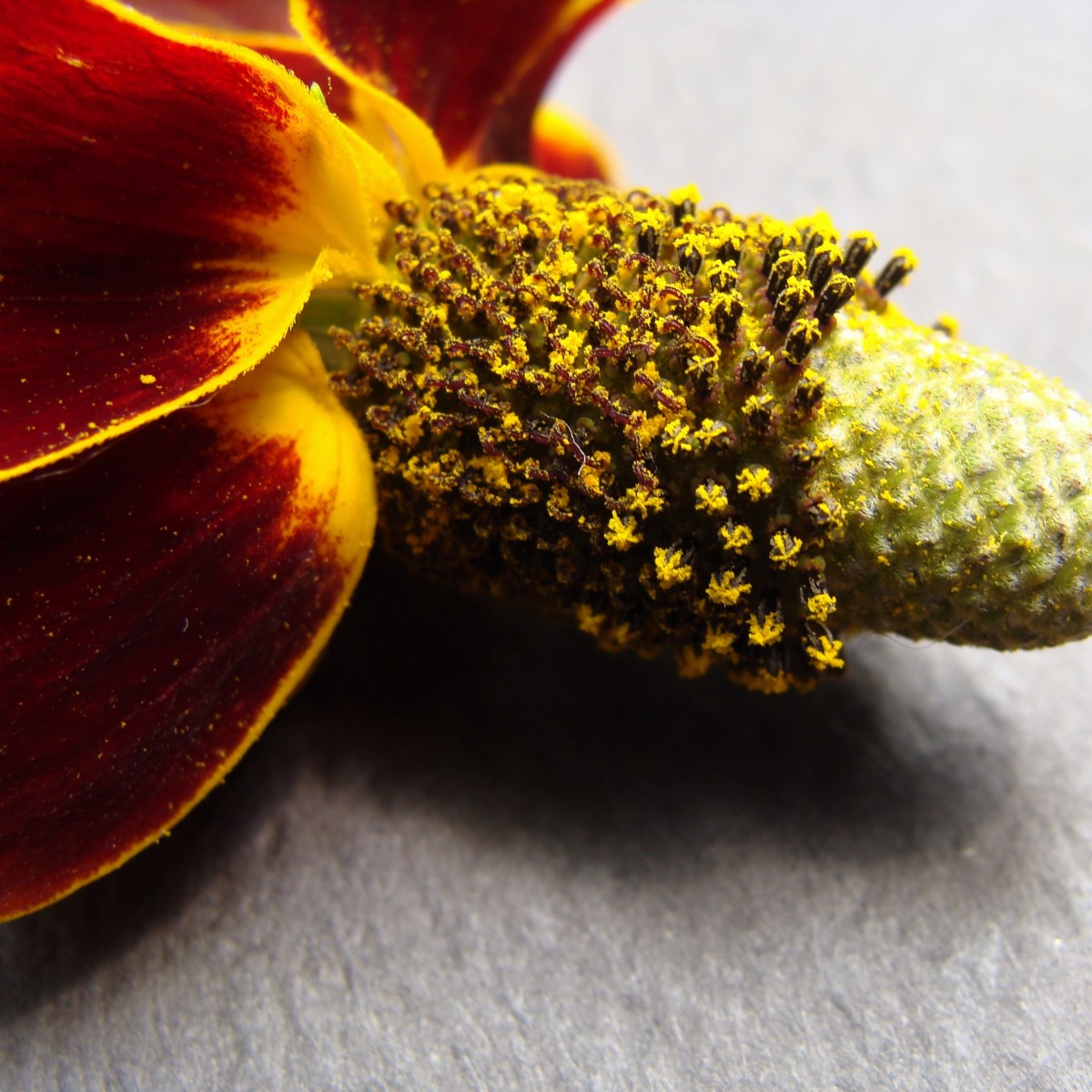
Know Your Natives – Mexican Hat
Mexican Hat (Ratibida columnifera) of the Aster, Sunflower, or Composite (Asteraceae) family is a perennial species that has flowerheads with a columnar central receptacle (disk). The origin of the genus name, coined by the eccentric naturalist Constantine Rafinesque-Schmaltz, is not entirely clear, although it may be a modification of a first century name for an…
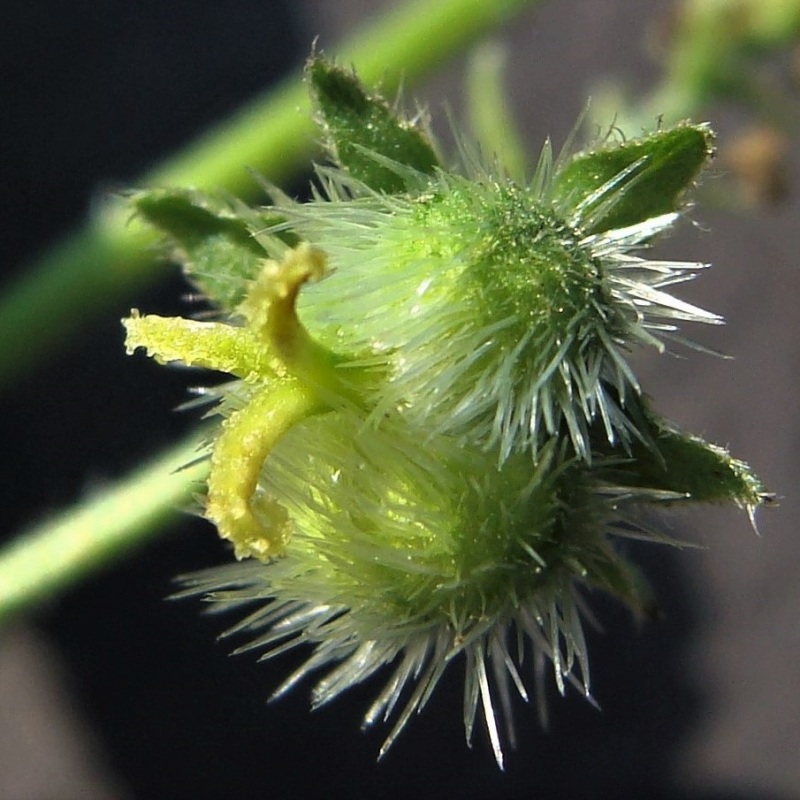
Know Your Natives – Betony-Leaf Noseburn
Betony-Leaf Noseburn (Tragia betonicifolia) of the Spurge (Euphorbiaceae) family is a perennial monoecious forb that is well-clad in stinging hairs. The genus name honors Hieronymus Tragus (aka Hieronymus Bock, a 16th-century German botanist). The species epithet is Latin for “betony leaved” and associates the appearance of leaves of this species to the Eurasian Betony (Betonica…

Know Your Natives – Rattlesnake Master
Rattlesnake Master (Eryngium yuccifolium) of the Parsley or Carrot (Apiaceae) family is a tall perennial with distinctive ovoid flower heads. The genus name is based on the ancient Greek name used by Theophrastus for a prickly plant of the Mediterranean region. The specific epithet is Latin for “yucca-leaved”––morphologically true, although the two groups are unrelated:…

Know Your Natives – Ouachita Hedge-Nettle
Ouachita Hedge-Nettle (Stachys iltisii*) of the Mint (Lamiaceae) family is a clonal herbaceous perennial with a spike-like inflorescence of two-lipped, white flowers with prominent purple blotches. The genus name is from the Greek for “an ear of wheat” in reference to the spike-like inflorescence. The specific epithet honors botanist Hugh Iltis. In the U.S., Ouachita…

Know Your Natives – Arkansas Beardtongue
Arkansas Beardtongue (Penstemon arkansanus) of the Plantain (Plantaginaceae) family, formerly of the Figwort (Scrophulariaceae) family, has showy white tubular flowers with a fifth stamen that is sterile, typically bearded (pubescent), and tonguelike in form, a hallmark of this large genus. The name Penstemon derives from the Greek words “penta” (five) and “stemon”(stamen). The specific epithet…
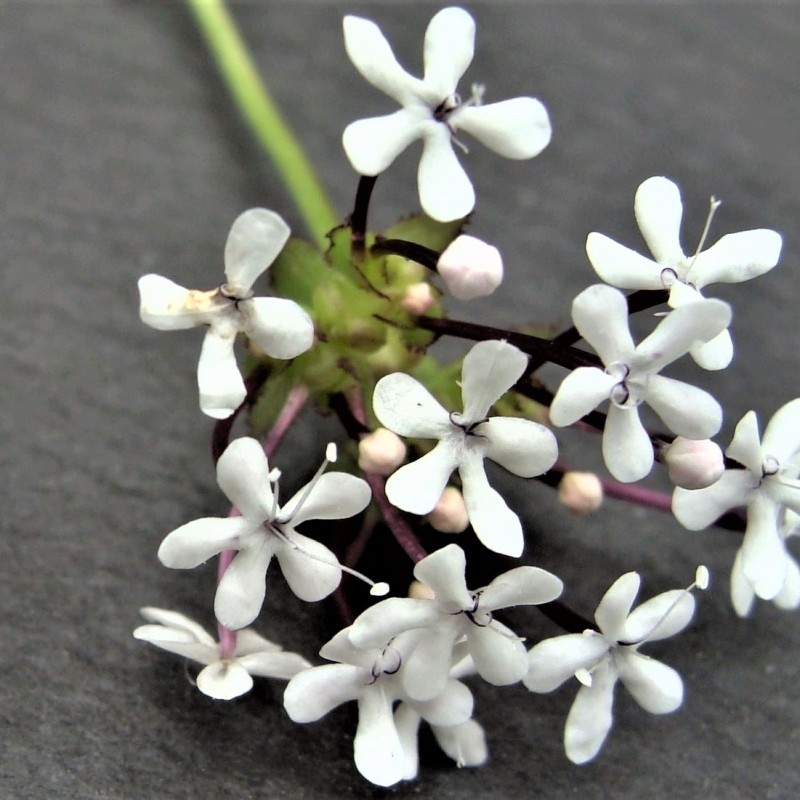
Know Your Natives – Long-Flower Cornsalad
Long-Flower Cornsalad (Valerianella longiflora) of the Cornsalad (Valerianaceae) family is an intruigingly branched, herbaceous annual with white flowers with long purple floral tubes. The genus name is the diminutive of Valeriana, the type genus of the Valerianaceae, a name honoring the Roman emperor Valerianus. The specific epithet refers to the flowers’ long floral tubes. In…

Know Your Natives – Prairie Ragwort
Prairie Ragwort (Packera plattensis, formerly Senecio plattensis) of the Aster, Sunflower, or Composite (Asteraceae) family is an herbaceous perennial with felty, white stem hairs and attractive, yellow, radiate flower heads. The genus name honors Canadian John G. Packer, author of Flora of Alberta. The epithet refers to the range from which the species was first…
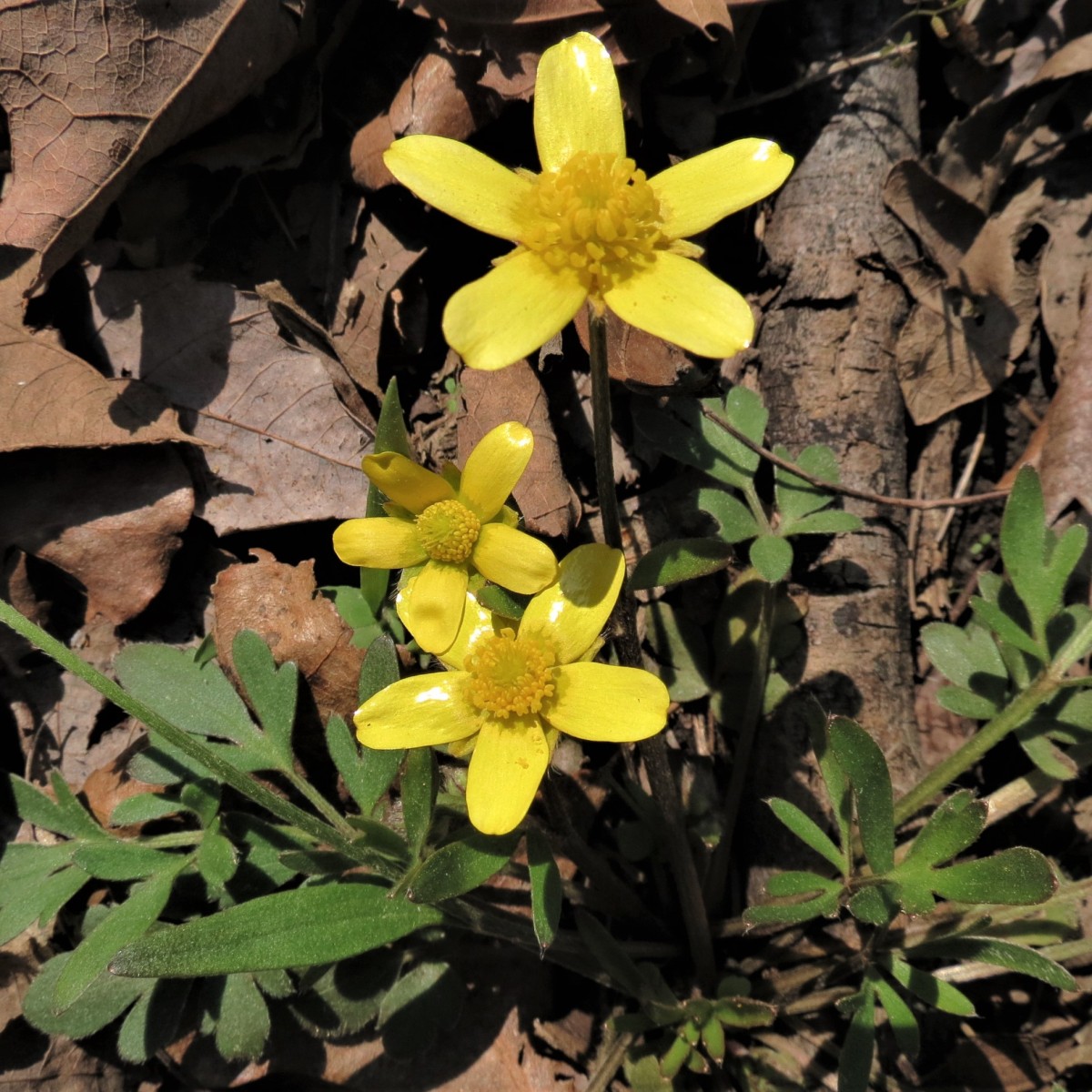
Know Your Natives – Early Buttercup
Early Buttercup (Ranunculus fascicularis) of the Buttercup (Ranunculaceae) family is a late winter, herbaceous perennial, with glossy yellow flowers and tuberous, thickened roots. The genus name is from the Latin for “little frog,” based on the occurrence of many buttercups in moist habitats. The specific epithet is Latin for “clustered,” referring to the roots. In…
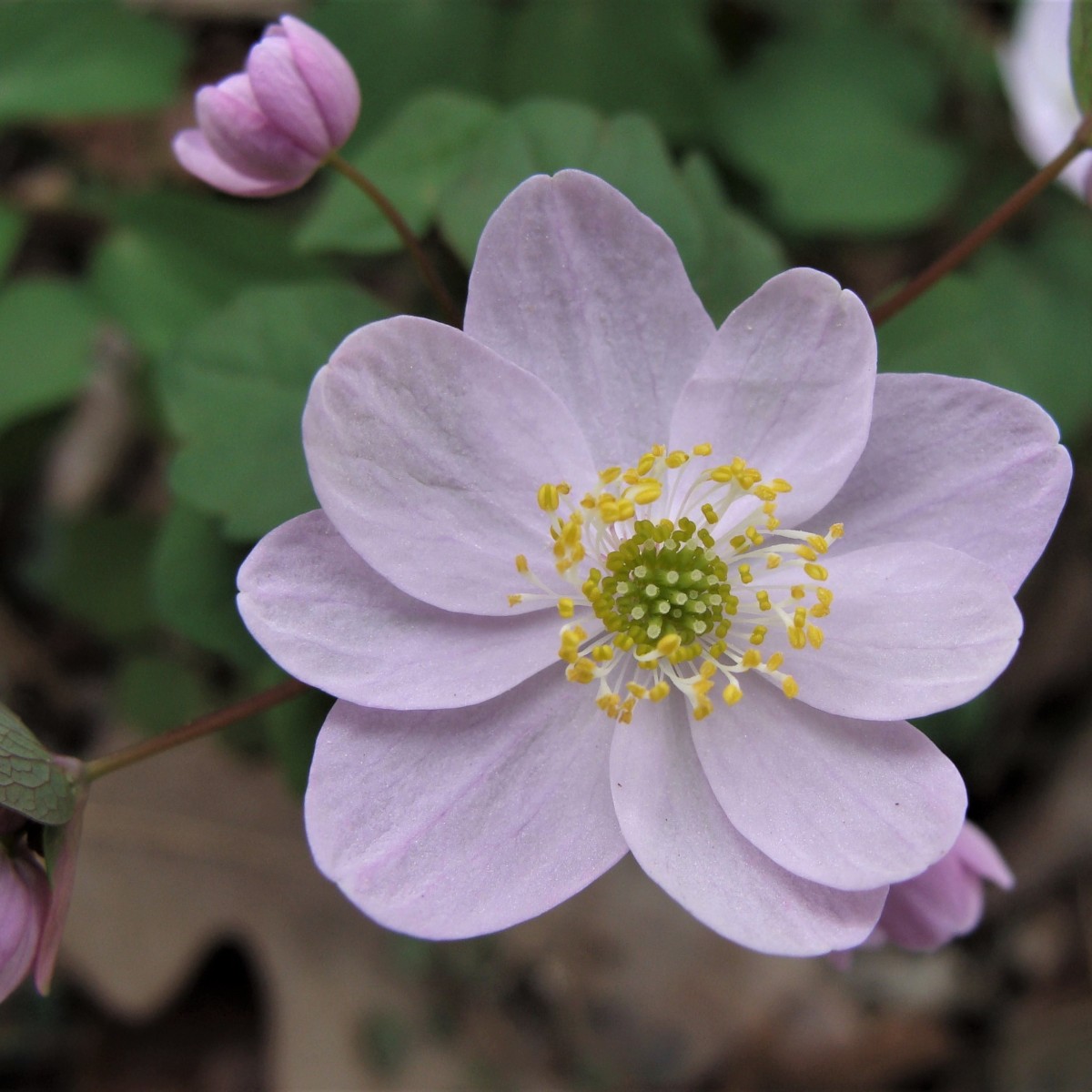
Know Your Natives – Rue-Anemone
Rue-Anemone (Thalictrum thalictroides; formerly Anemonella thalictroides) of the Buttercup (Ranunculaceae) family is a small, perennial, woodland ephemeral with an umbellate inflorescence of white to pink flowers. The genus name is the Latin form of the Greek word thaliktron, used in ancient times to describe some meadow-rues, possibly in reference to their compound leaves. The specific…

Know Your Natives – Black Nightshade
Black Nightshade (Solanum ptychanthum) of the Nightshade Family (Solanaceae) is a common weedy native with small white flowers and black berries. The genus name, meaning “quieting,” is the classical Latin name for the nightshades, in reference to the narcotic properties of some species of the genus.* The specific epithet is formed from the Greek for…
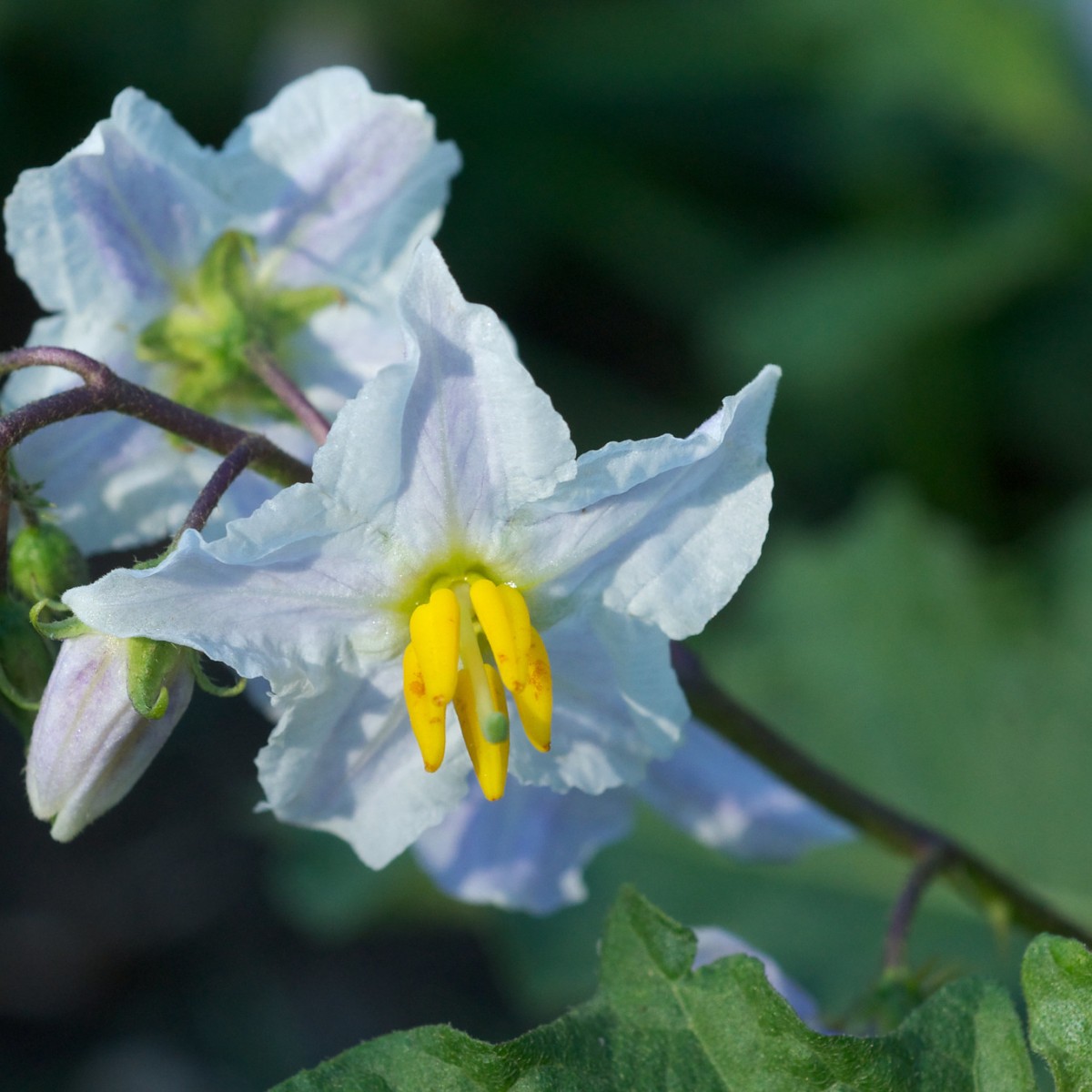
Know Your Natives – Carolina Horse Nettle
Carolina Horse Nettle (Solanum carolinense) of the Nightshade (Solanaceae) family is a toxic* perennial with attractive flowers and fruit and piercing prickles. The genus name is Latin for “quieting” in reference to the narcotic properties of some species. The specific epithet suggests that Linnaeus, who named the species, examined a specimen from the Carolinas, where…

Know Your Natives – Lady Fern
Lady Fern (Athyrium filix-femina*) of the Woodsiaceae (Lady Fern) family is a medium size fern of North America, Europe and Asia. The genus name originates from a Greek word referring to “door” in reference to the hinged indusia (protective spore covers). The specific epithet is based on Latin words for “fern” and “woman.” Lady Fern…
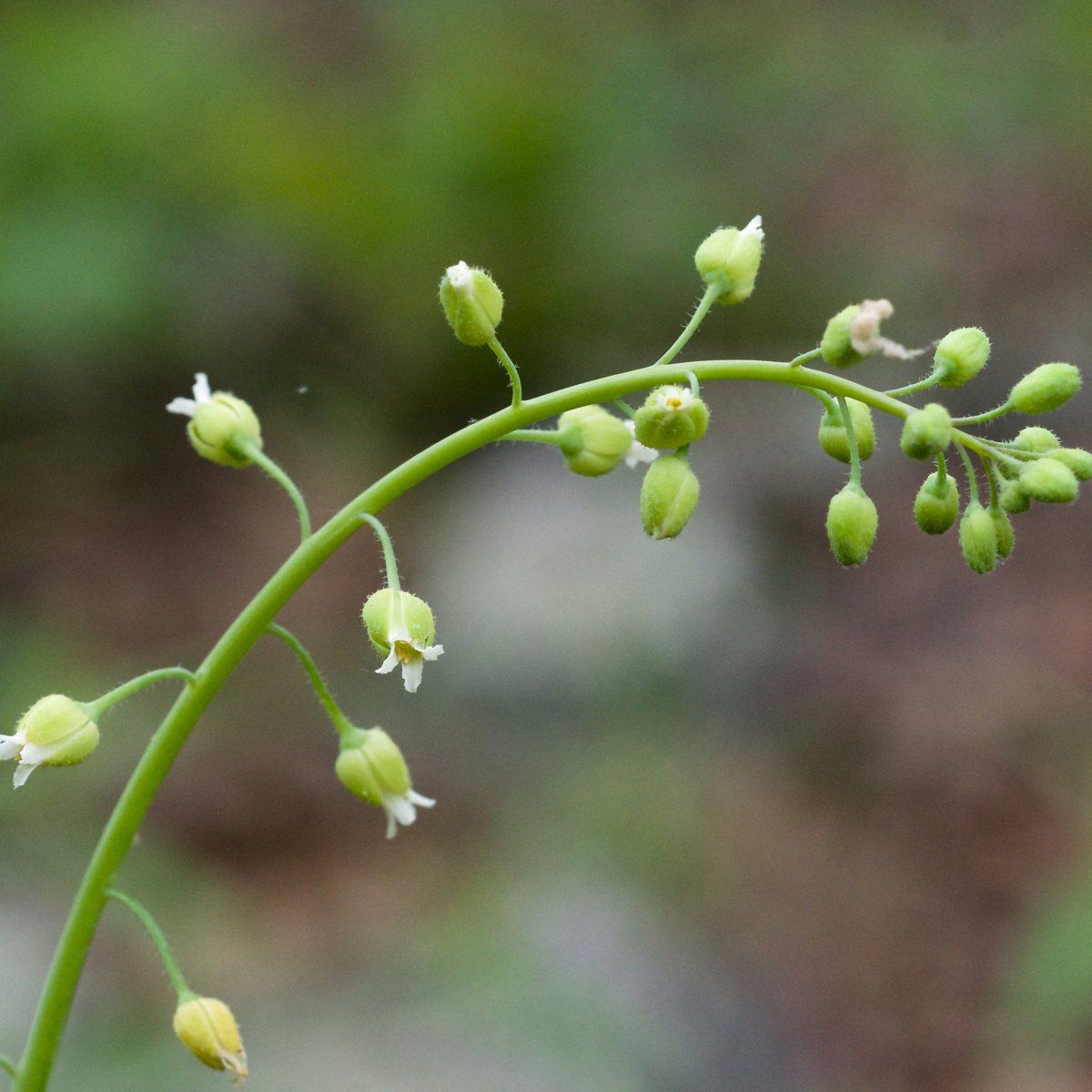
Know Your Natives – Canada Rockcress
Canada rockcress (Borodinia canadensis*) of the Mustard (Brassicaceae/Cruciferae) family has small white flowers and long pendent bean-like fruits. The genus name most likely commemorates the Russian botanist Ivan Parfenievich Borodin (1847-1930) who founded the Russian Botanical Society. The specific epithet denotes the species’ occurrence in eastern Canada. In the U.S., it is found primarily from…
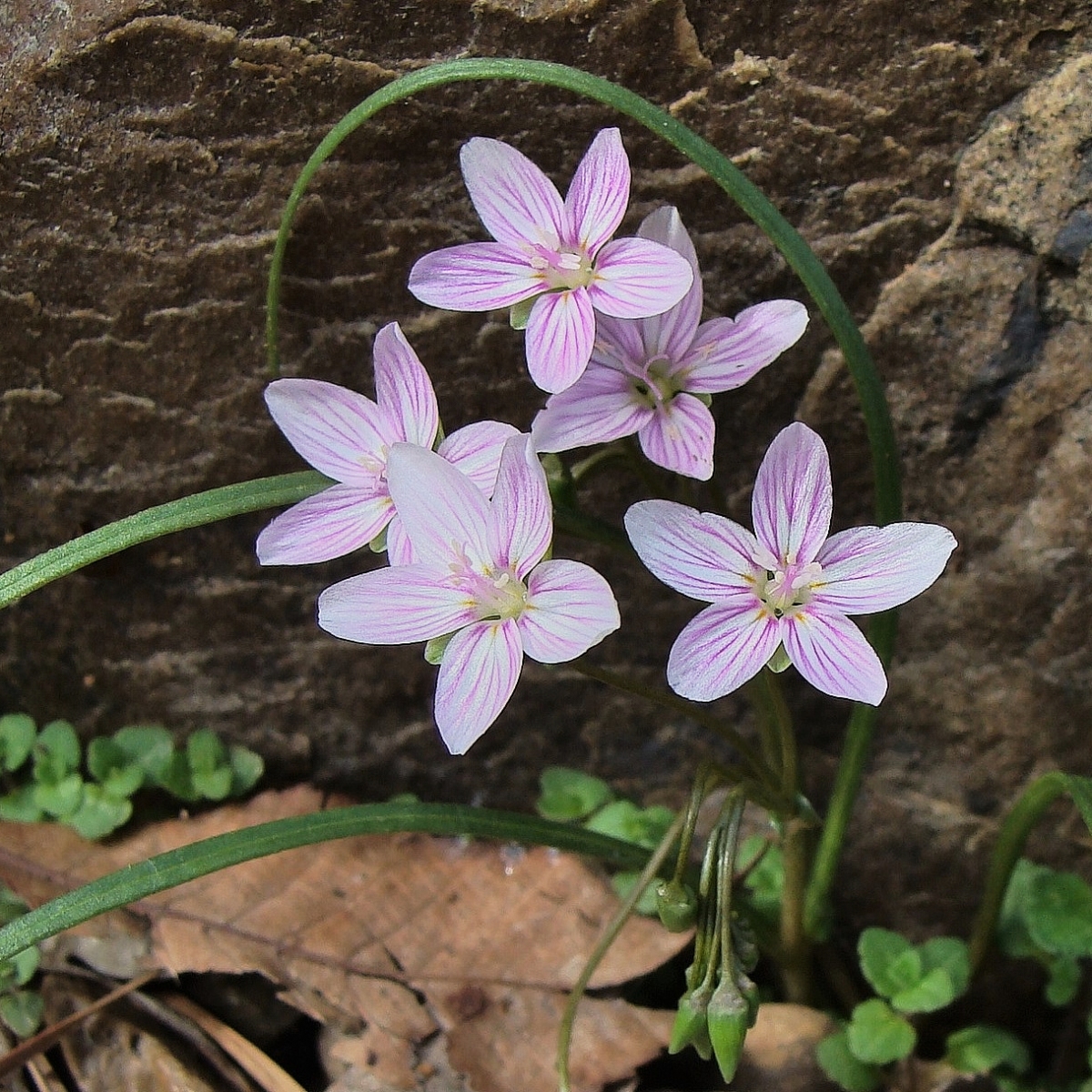
Know Your Natives – Spring-Beauty
Spring-beauty (Claytonia virginica), traditionally treated as a member of the Purslane (Portulacaceae) family but more recently as a member of the Miner’s-lettuce (Montiaceae) family, is a widespread, common, native wildflower, a perennial herb with lovely white, pink-veined flowers. The genus name honors John Clayton, one of Colonial America’s earliest botanists. The specific epithet refers to…
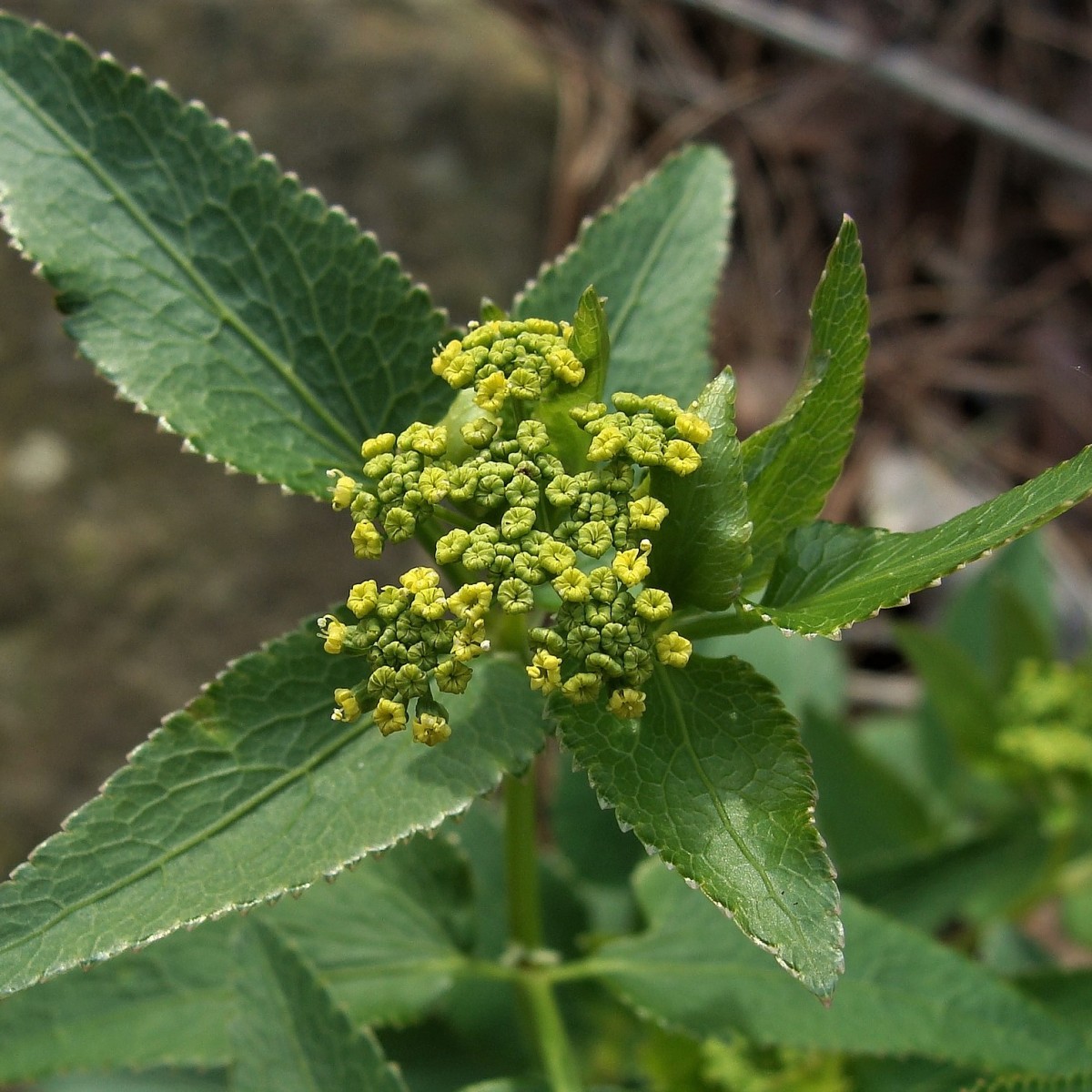
Know Your Natives – Yellow Meadow-Parsnip
Yellow meadow-parsnip or smooth meadow-parsnip (Thaspium trifoliatum var. aureum) of the Carrot (Apiaceae) family has small yellow flowers with in-turned petals, much like those of the golden-Alexanders (Zizia aptera and Zizia aurea) (see last paragraph). The genus name, coined by Thomas Nuttall, is a play on Thapsia, a related genus of the Mediterranean region. The…
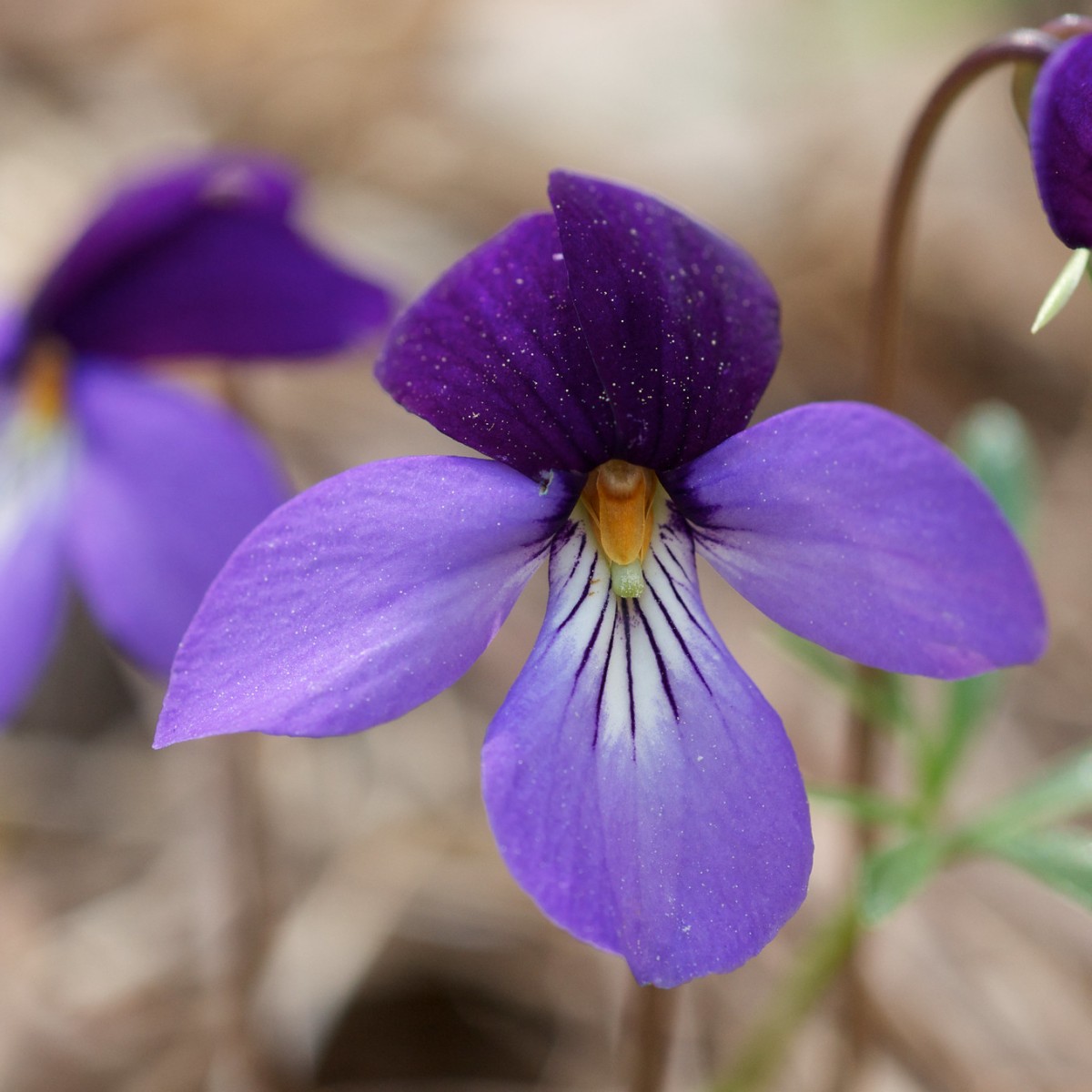
Know Your Natives – Bird’s-Foot Violet
Bird’s-foot violet (Viola pedata) of the Violet (Violaceae) family, the paragon of the violets, has distinctive leaves and large, exquisite flowers in several colors. The genus name is the classical Latin name for violets. The specific epithet, the Latin for “foot-like,” refers to leaf shape. In the U.S., bird’s-foot violet occurs in two broad belts:…

Know Your Natives – Two-Wing Silverbell
Two-wing silverbell (Halesia diptera) of the Storax (Styracaceae) family is one of several understory trees in the family with pendant showy white flowers. The genus name recognizes English botanist Stephen Hales who authored Vegetable Staticks* in 1727. The specific epithet is based on Greek words for “two-winged” in reference to fruit structure. In the U.S.,…

Know Your Natives – Ditch Stonecrop
Ditch stonecrop (Penthorum sedoides) of the ditch stonecrop (Penthoraceae) family is a short-lived, herbaceous perennial of wetlands. The genus name originates from the Greek words for “five” and “marker” in reference to the pentamerous (five-part) floral structure. The specific epithet translates to “resembling sedum,” also in reference to floral structure.* In the U.S., ditch stonecrop…
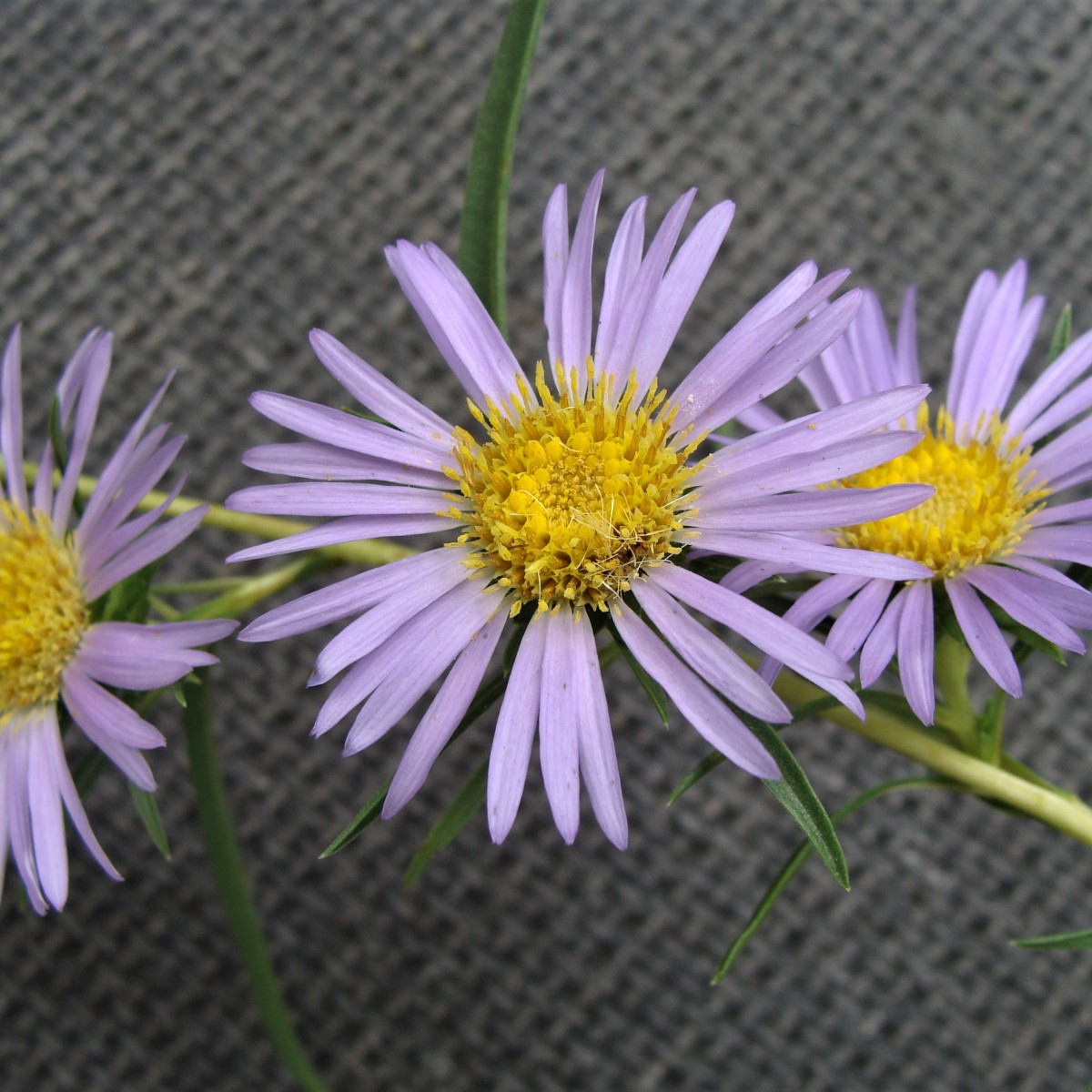
Know Your Natives – Southern Prairie Aster
Southern prairie aster (Eurybia hemispherica) of the Aster or Sunflower (Asteraceae) family is a slender stemmed plant with spectacular, inch-wide, lavender composite flowerheads. The genus name is based on Greek words for “wide” and “few,” a reference to big-leaf aster (Eurybia macrophylla), most likely to the ligules of the ray flowers. The specific epithet derives…
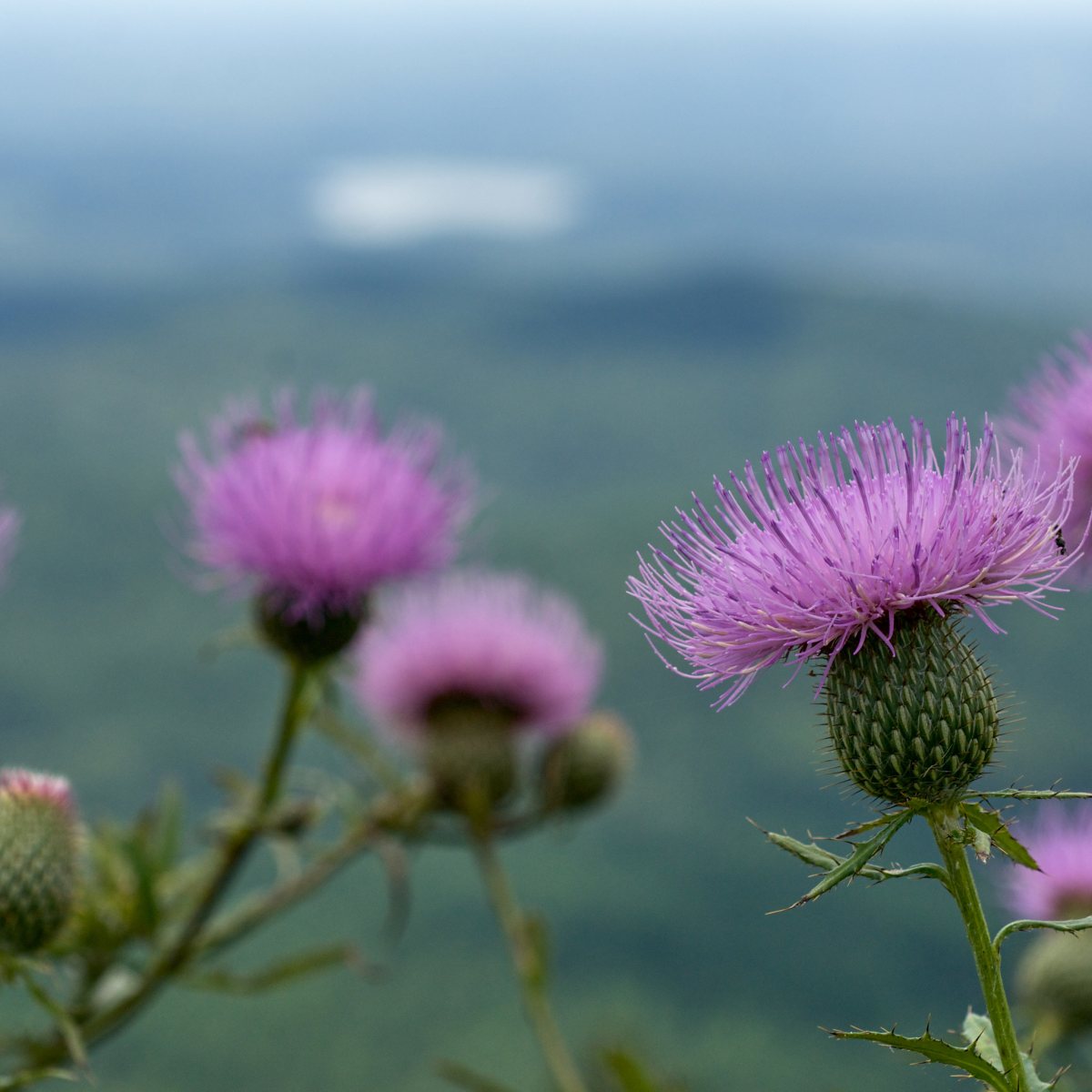
Know Your Natives – Tall Thistle
Tall thistle (Cirsium altissimum) of the Aster, Sunflower or Composite (Asteraceae) family is a tall biennial thistle with weak spines and pink to lavender flower heads. The genus name derives from a Greek root for “swollen vein” in reference to past use of the plants to reduce swelling. The specific epithet is Latin for “tallest.”…

Know Your Natives – Toothed Spurge
Toothed spurge (Euphorbia dentata) of the Spurge (Euphorbiaceae) family is a drought-tolerant summer annual with milky sap and a complex, bizarre inflorescence called a cyathium. The genus name recognizes Euphorbus, a Greek physician.* The specific epithet is from the Latin for “toothed” in reference to the leaf margins. The common name “spurge” derives from the…
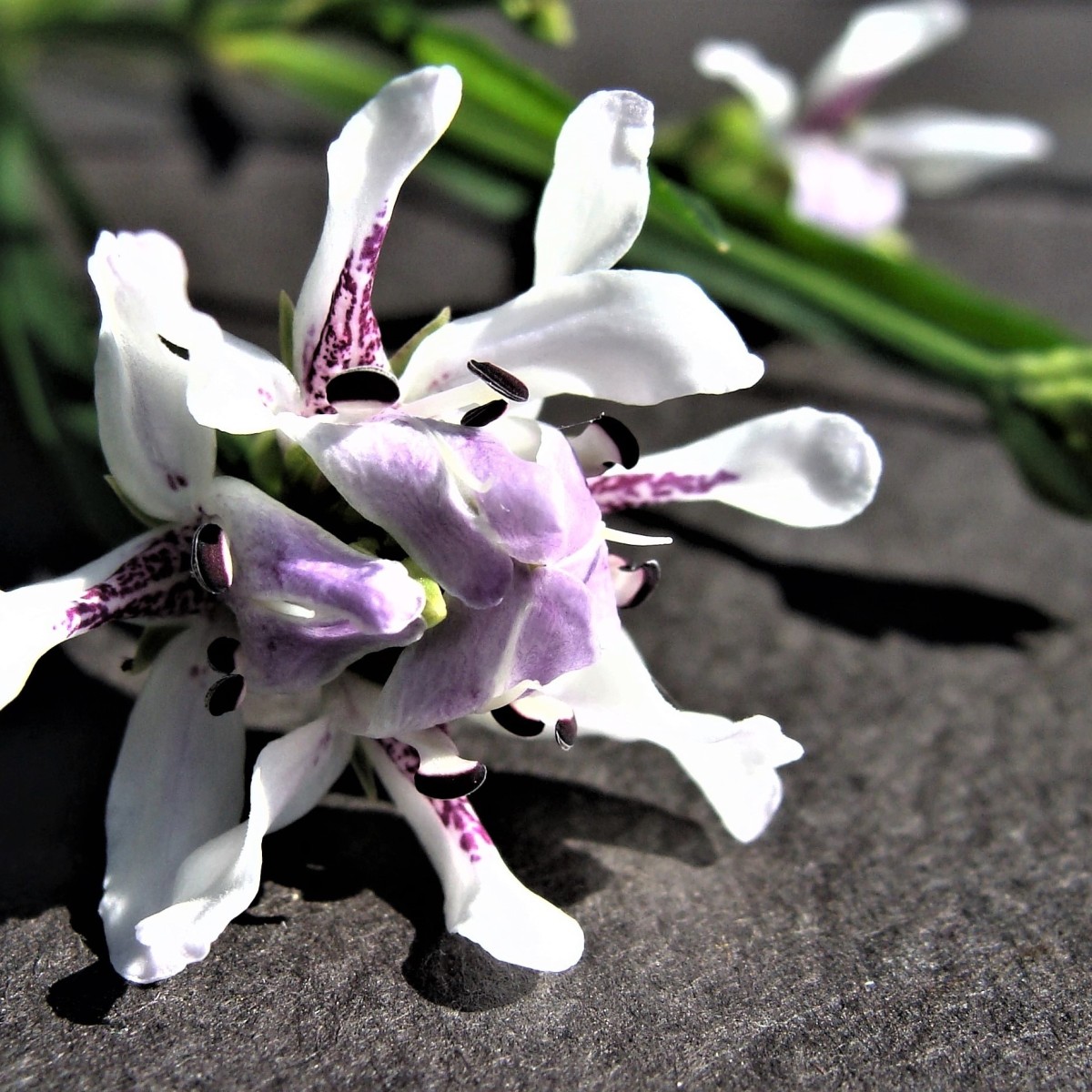
Know Your Natives – Water-willow
Water-willow (Justicia americana) of the Acanthus (Acanthaceae) family is an herbaceous aquatic perennial with willow-like leaves. The genus name recognizes James Justice, an 18th-century Scottish author of horticultural books. The specific epithet denotes the plant’s area of primary occurrence. In the U.S., water-willow occurs primarily from eastern Oklahoma and Kansas in a broad sweep that…

Know Your Natives – Hairy Woodland Sunflower
Hairy woodland sunflower (Helianthus hirsutus), of the Sunflower, Aster, or Composite (Asteraceae) family, is one of three Arkansas species with the common name “woodland sunflower.” The genus name is based on Greek words for “sun” and “flower.” The specific epithet is Latin for “hairy” or “bristly.” In the U.S., hairy woodland sunflower occurs from the…

Know Your Natives – Pawpaw
Pawpaw (Asimina triloba) of the Custard Apple (Annonaceae) family is a small deciduous understory tree with edible fruit. It is widespread in the deciduous forests of the eastern U.S., from eastern Texas and southeastern Nebraska, east across southern Michigan to the Atlantic Coast from Pennsylvania to northern Florida. In Arkansas it occurs statewide. The genus…
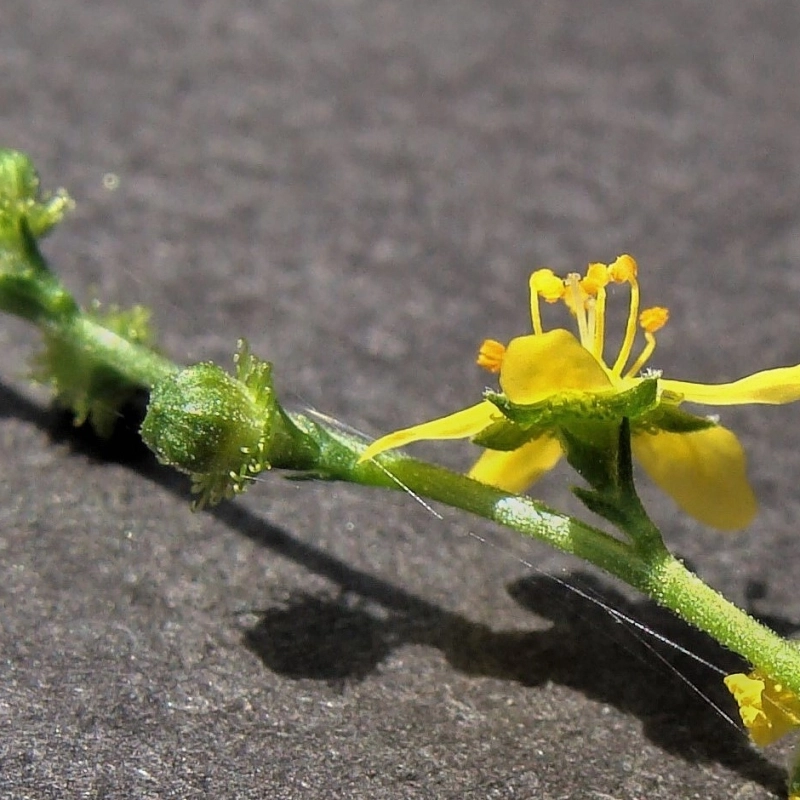
Know Your Natives – Woodland Agrimony
Woodland agrimony (Agrimonia rostellata) of the Rosaceae (Rose) family has leafy stems terminating with a raceme(s) of small yellow flowers. The genus name is a corruption of Argemone, the botanical name of the prickly poppy. The specific epithet is based on a Latin word for “beaks,” in reference to the fruit shape. In the U.S.,…
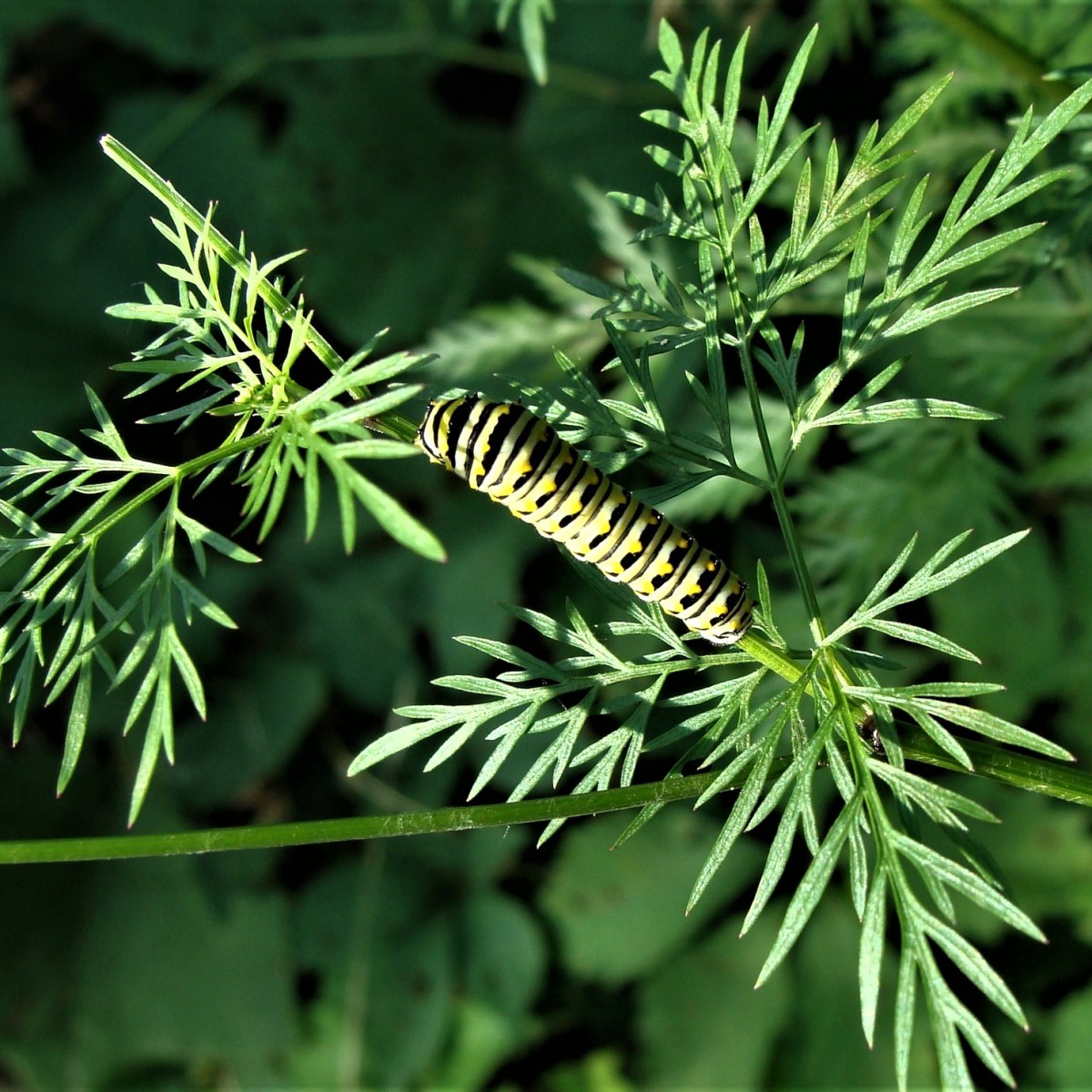
Know Your Natives – White-Nymph
White-nymph (Trepocarpus aethusae) of the Carrot (Apiaceae) family is the only species worldwide of the genus Trepocarpus––the genus is “monotypic.” Etymology of the generic name is uncertain. The specific epithet is a reference to Arethusa, a water nymph of Greek mythology. The species occurs in the central and southwestern portions of the Southeastern U.S., primarily…
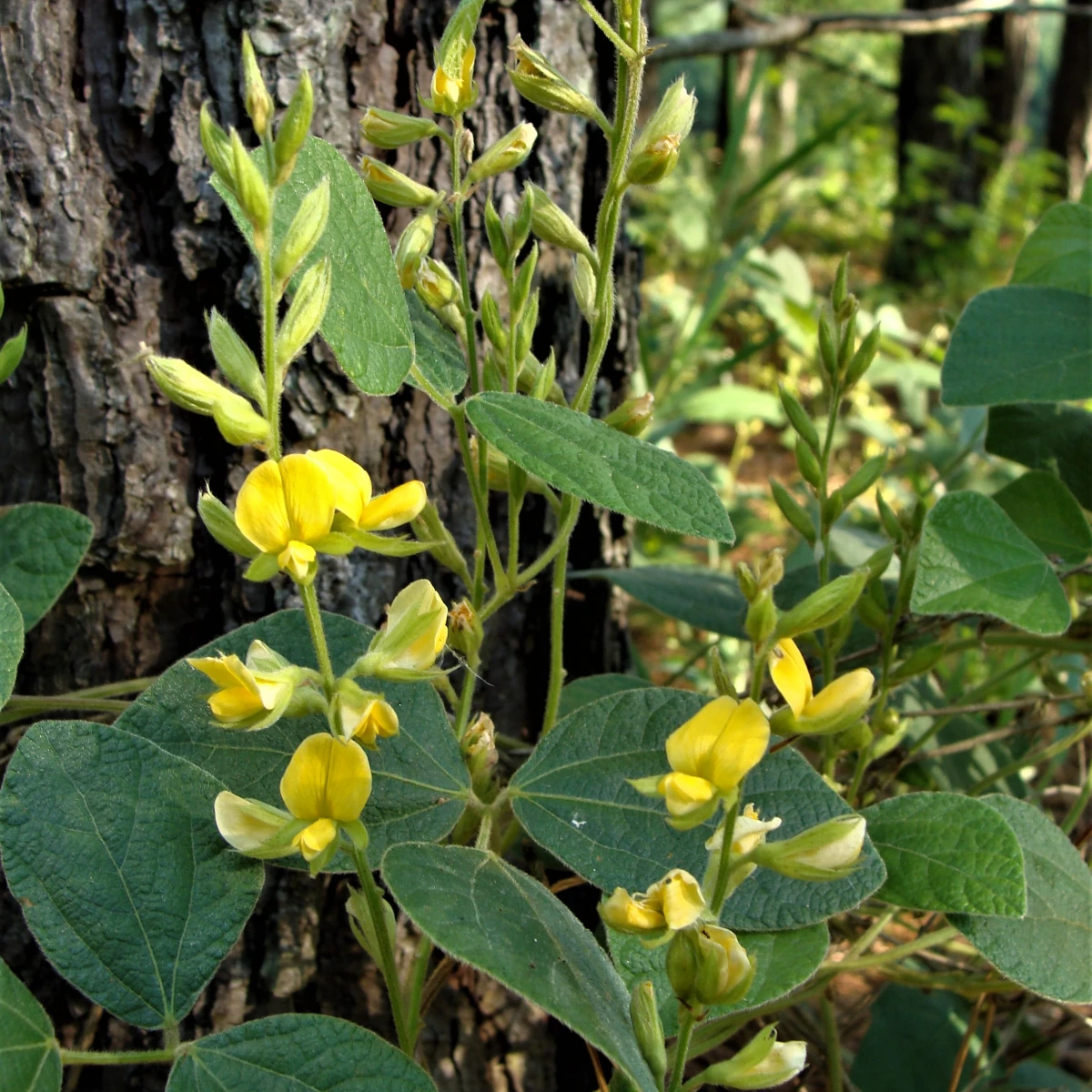
Know Your Natives – Snoutbean
Snoutbean (Rhynchosia latifolia) of the bean or legume (Fabaceae) family is a perennial herbaceous plant with large trifoliate leaves. The genus name is from the Greek for “beak,” referring to the shape of the keel petals. The specific epithet is from the Latin for “broad leaves.” Snoutbean occurs from eastern Texas and Oklahoma, through southern…
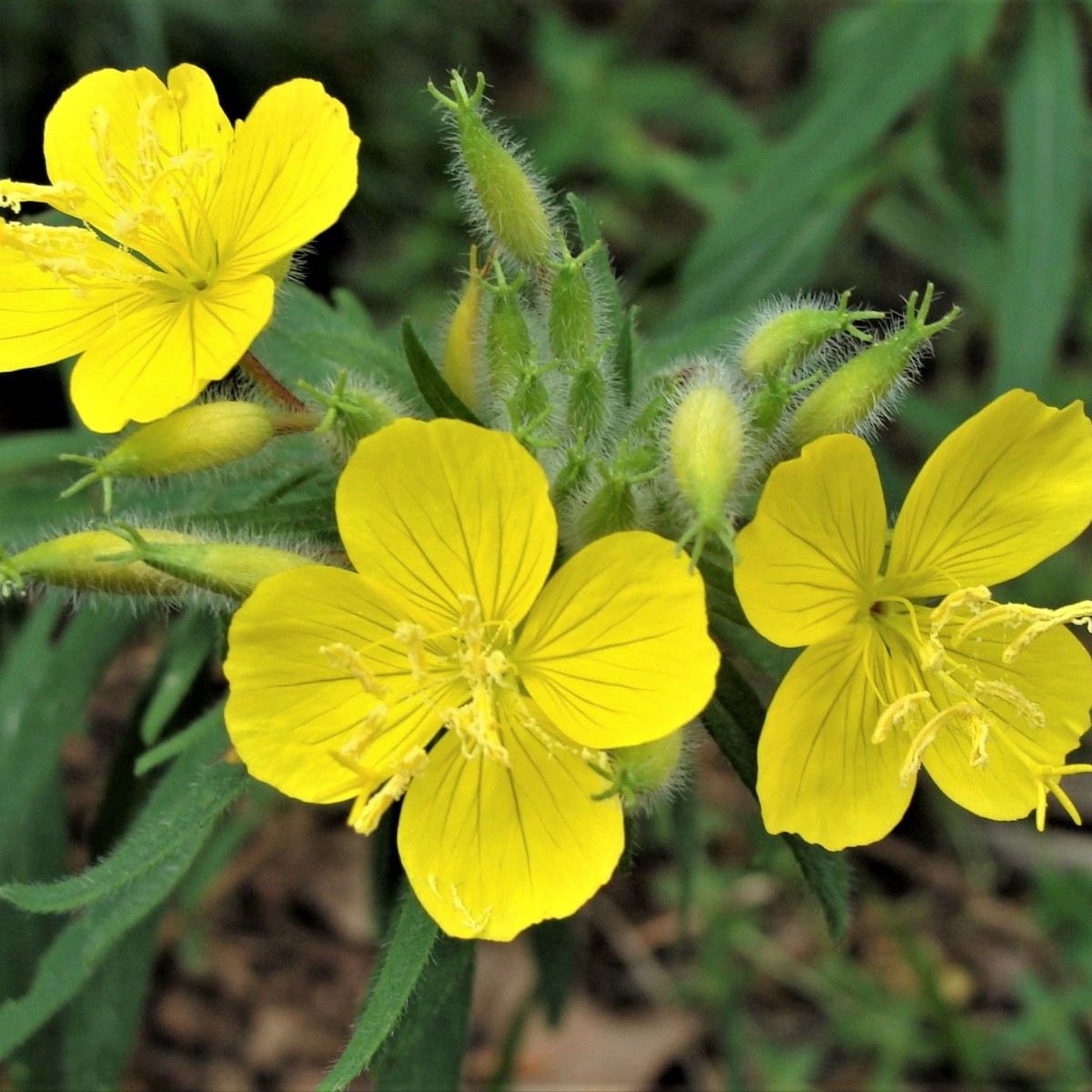
Know Your Natives – Sundrops
Sundrops* (Oenothera fruticosa) of the Evening Primrose (Onagraceae) family has bright yellow flowers open during the day. The genus name may be from Latin (oenothera) for a sleep inducing plant or from Greek (onothera) a hypnotic plant added to wine. The specific epithet is based on Latin for “bushy”. In the U.S., the species occurs…
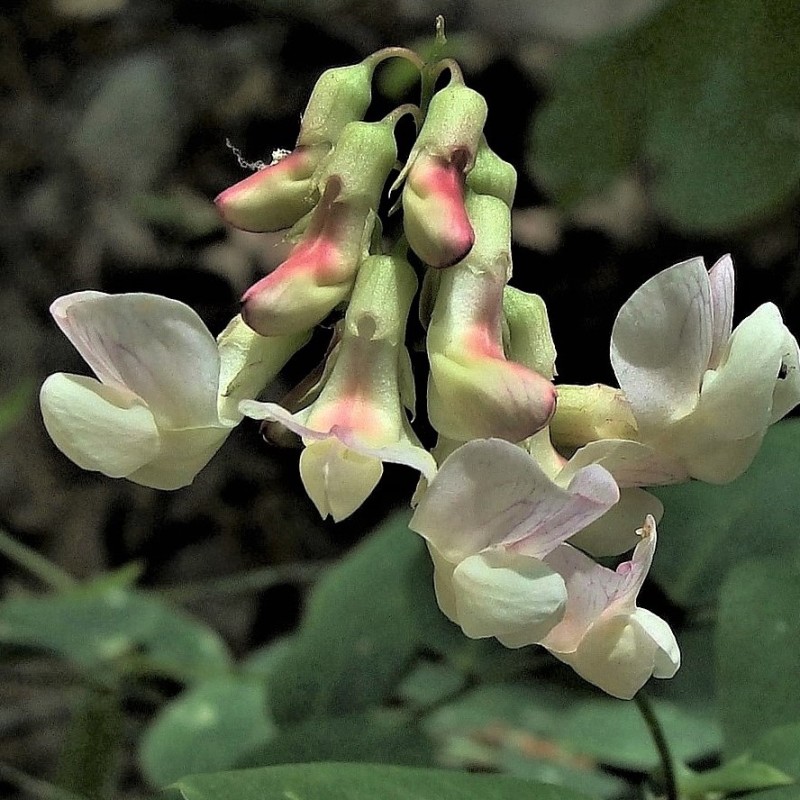
Know Your Natives – Forest Pea
Forest pea or bushy vetch (Lathyrus venosus) of the Bean or Legume (Fabaceae) family is a perennial deciduous vine with pea-like flowers. The genus name is based on the Greek Lathyros, the ancient name for a leguminous plant. The specific epithet is from the Latin for “conspicuously veined,” in reference to the banner, the large,…
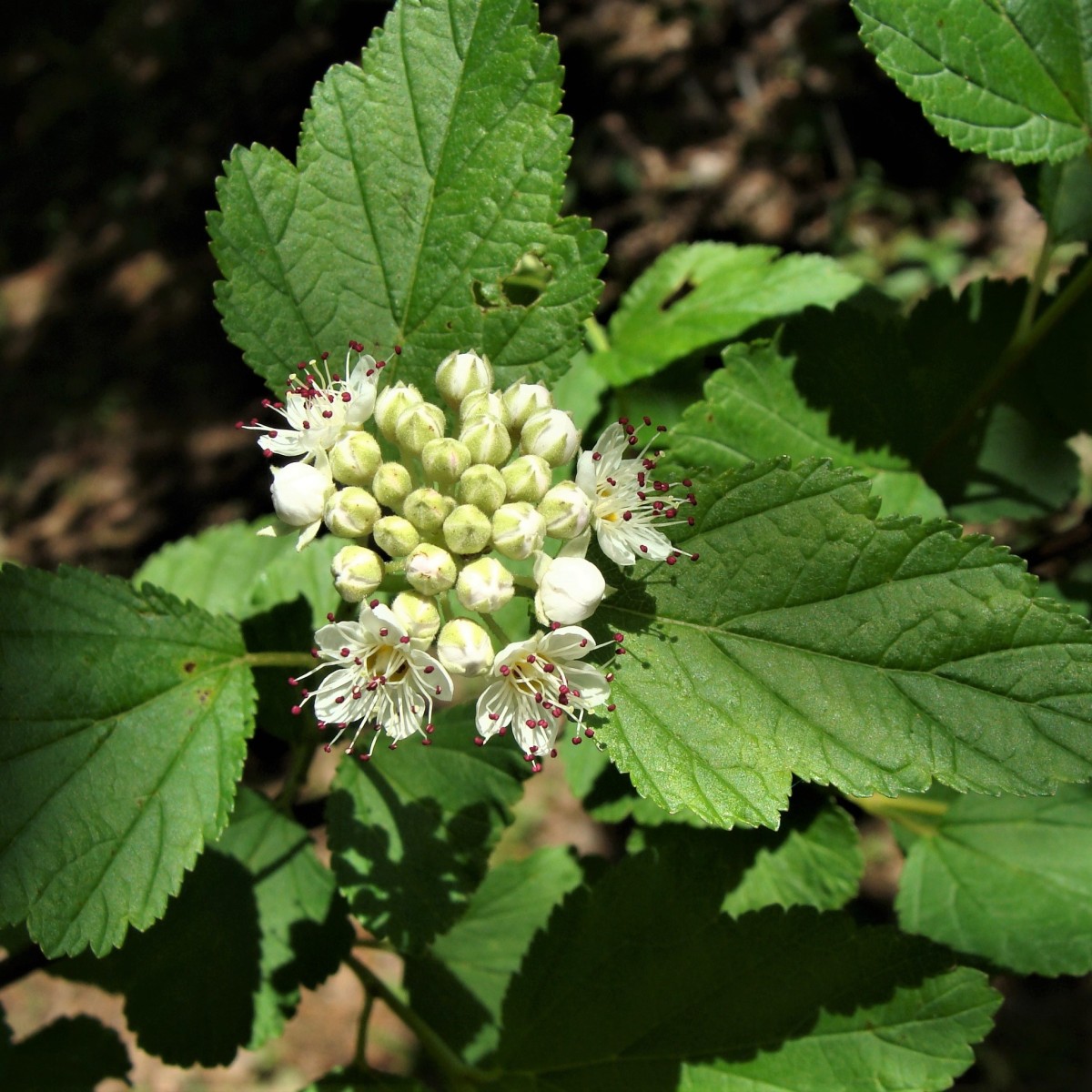
Know Your Natives – Ninebark
Ninebark (Physocarpus opulifolius)* of the Rose (Rosaceae) family is a large shrub which bears tight clusters of small white flowers. The genus name, from Greek words for “bladder” and “fruit,” refers to the inflated carpels of the fruit. The specific epithet, from Latin, compares the leaves to those of Viburnum opulus. Ninebark is widespread in the…
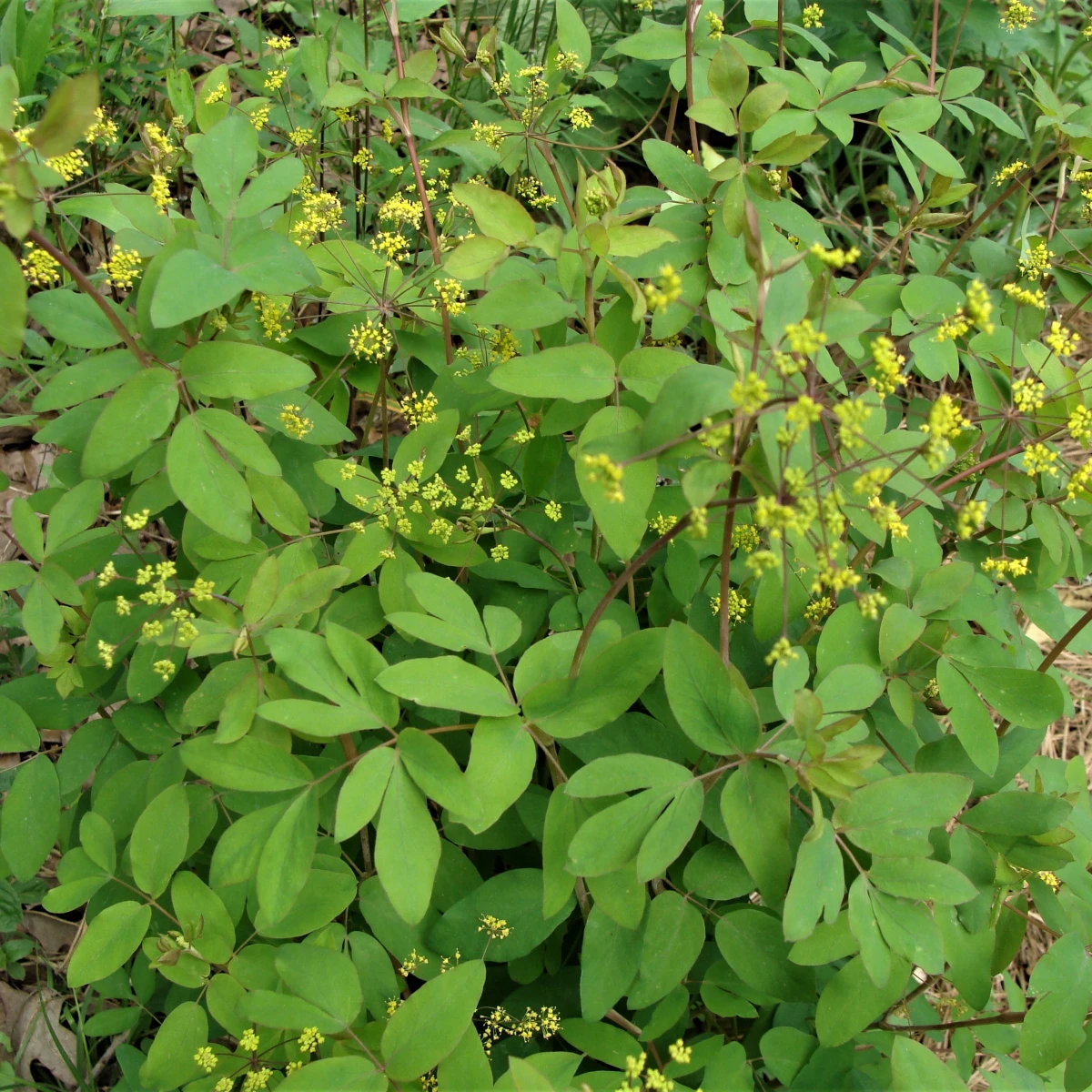
Know Your Natives – Yellow Pimpernel
Yellow pimpernel (Taenidia integerrima) of the Parsley or Carrot (Apiaceae) family is an elegant and attractive herbaceous perennial with twice-compound leaves and compound umbels of tiny yellow flowers. The genus name comes from the Greek taenidion, “a small band,” referring to the scarcely prominent ribs of the fruit. The specific epithet, from Latin for “most…
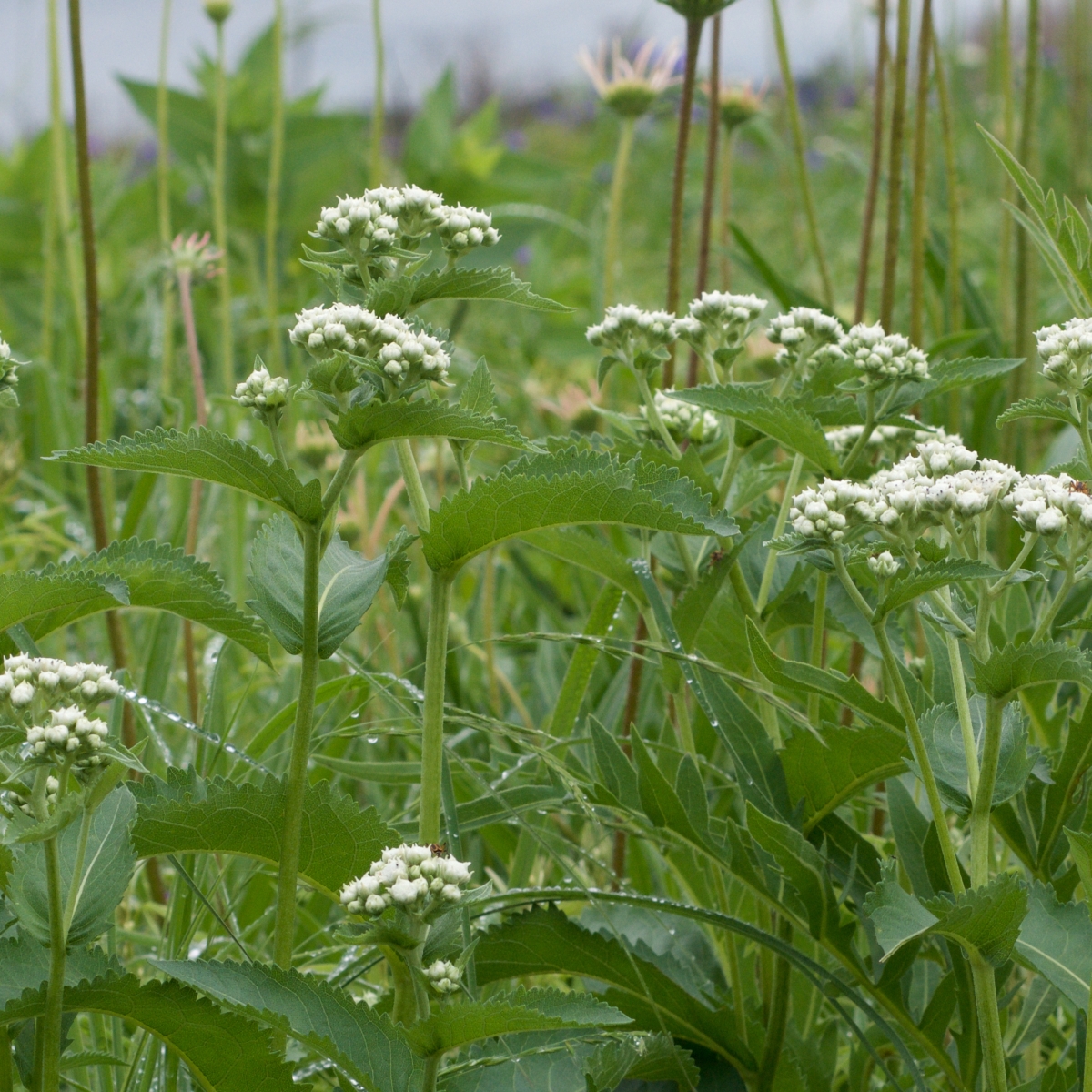
Know Your Natives – Wild Quinine
Wild quinine (Parthenium integrifolium) of the Aster, Sunflower or Composite (Asteraceae) family is an herbaceous perennial with frosty composite flowerheads. The genus name is from the Greek word parthenos, for virgin––only the pistillate ray florets are fertile. The specific epithet, from Latin, means “entire-leaved,” meaning undivided, although the leaf margins are crenate to serrate-dentate. The…
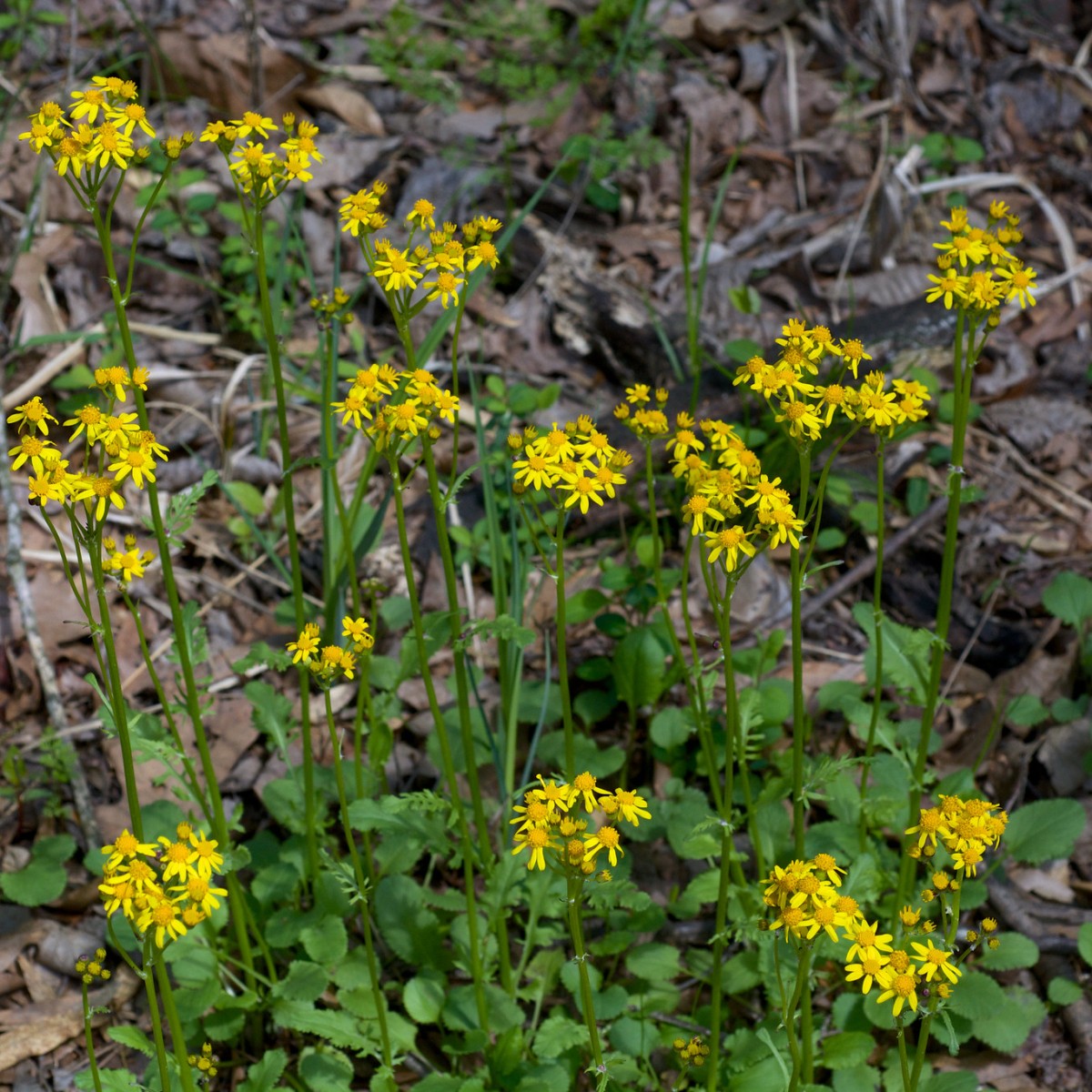
Know Your Natives – Round-leaf Ragwort
Round-leaf ragwort (Packera obovata, formerly Senecio obovata), of the Aster, Sunflower, or Composite (Asteraceae) family, is an herbaceous clonal species that bears bright yellow daisy-type flowerheads in early spring. The genus name honors John G. Packer, author of Flora of Alberta. The specific epithet, from Latin, means obovate (egg-shaped, but broader distally), in reference to…
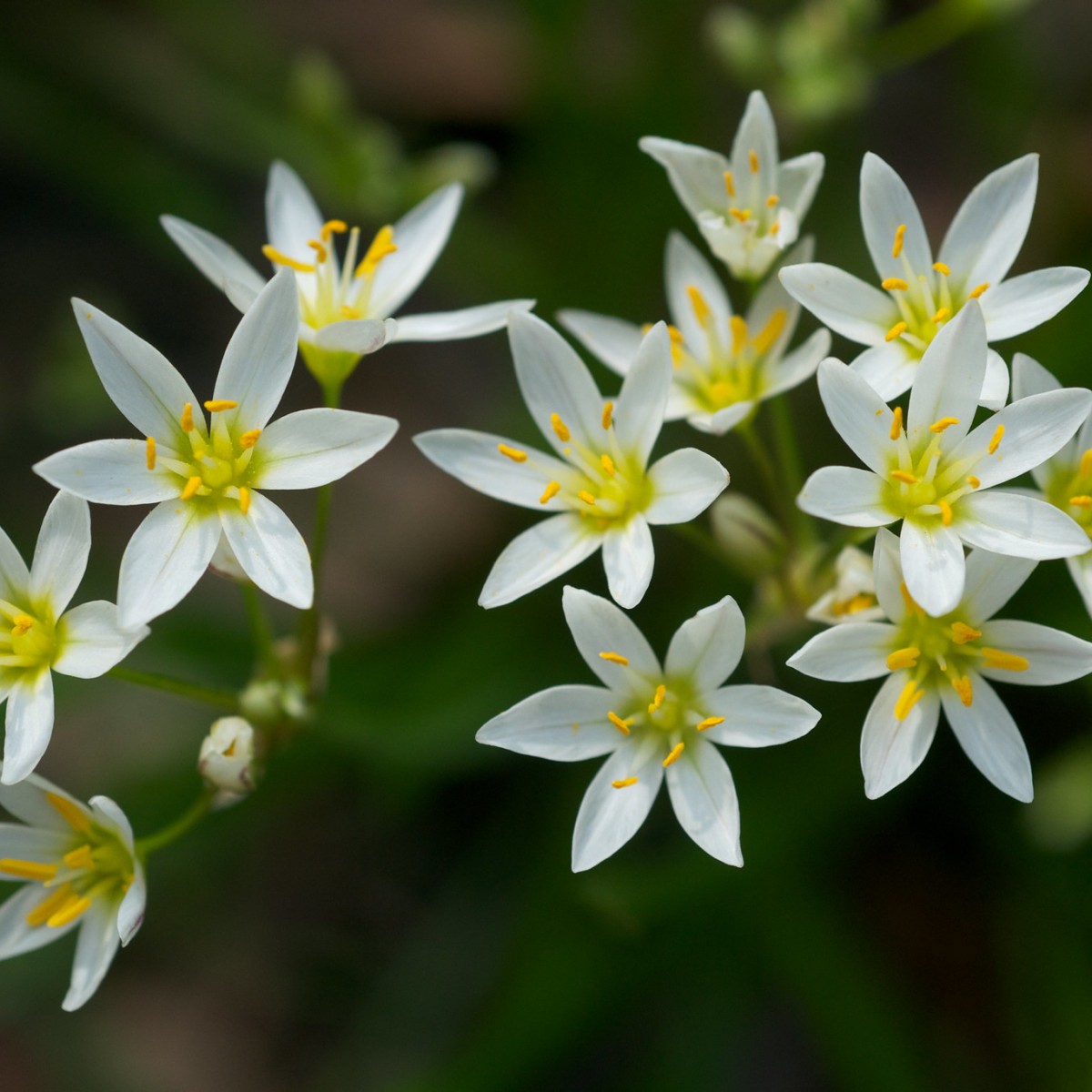
Know Your Natives – Crow Poison
Crow poison (Nothoscordum bivalve) of the Onion (Alliaceae) family (formerly of the Lily (Liliaceae) family) resembles a wild onion and is often called “false garlic,” but the species has neither garlic nor onion scent or taste. The genus name is actually derived from Greek words for “false” and “garlic.” The specific epithet means “two sides”…
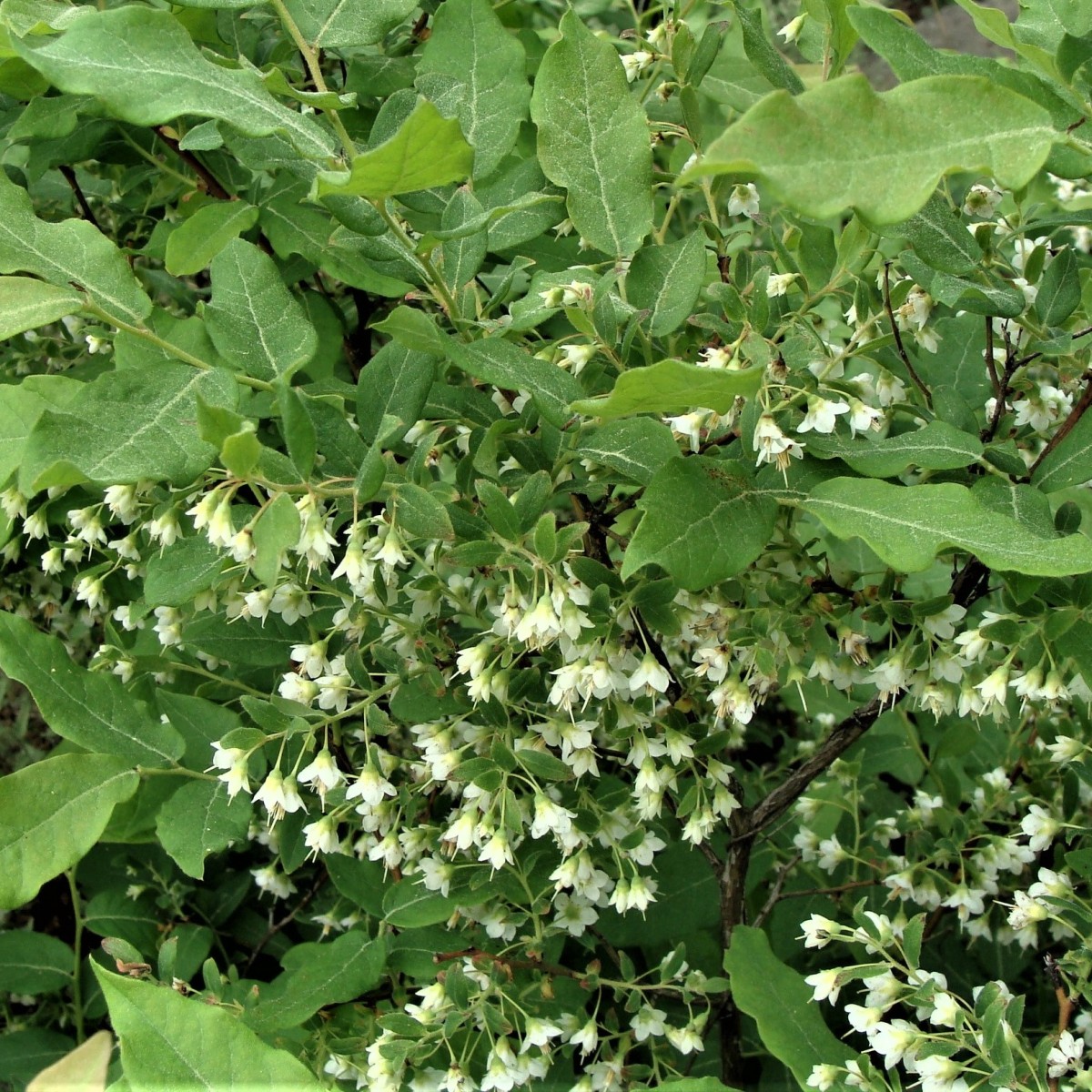
Know Your Natives – Deerberry
Deerberry (Vaccinium stamineum) of the Heath (Ericaceae) family is a medium-sized deciduous shrub that has small bell-shaped flowers with flared corolla lobes. The species occurs from east Texas and Oklahoma, northeast to the Atlantic and Gulf Coasts. In Arkansas, it occurs statewide except for some portions of the Mississippi Alluvial Plain. The genus name is…
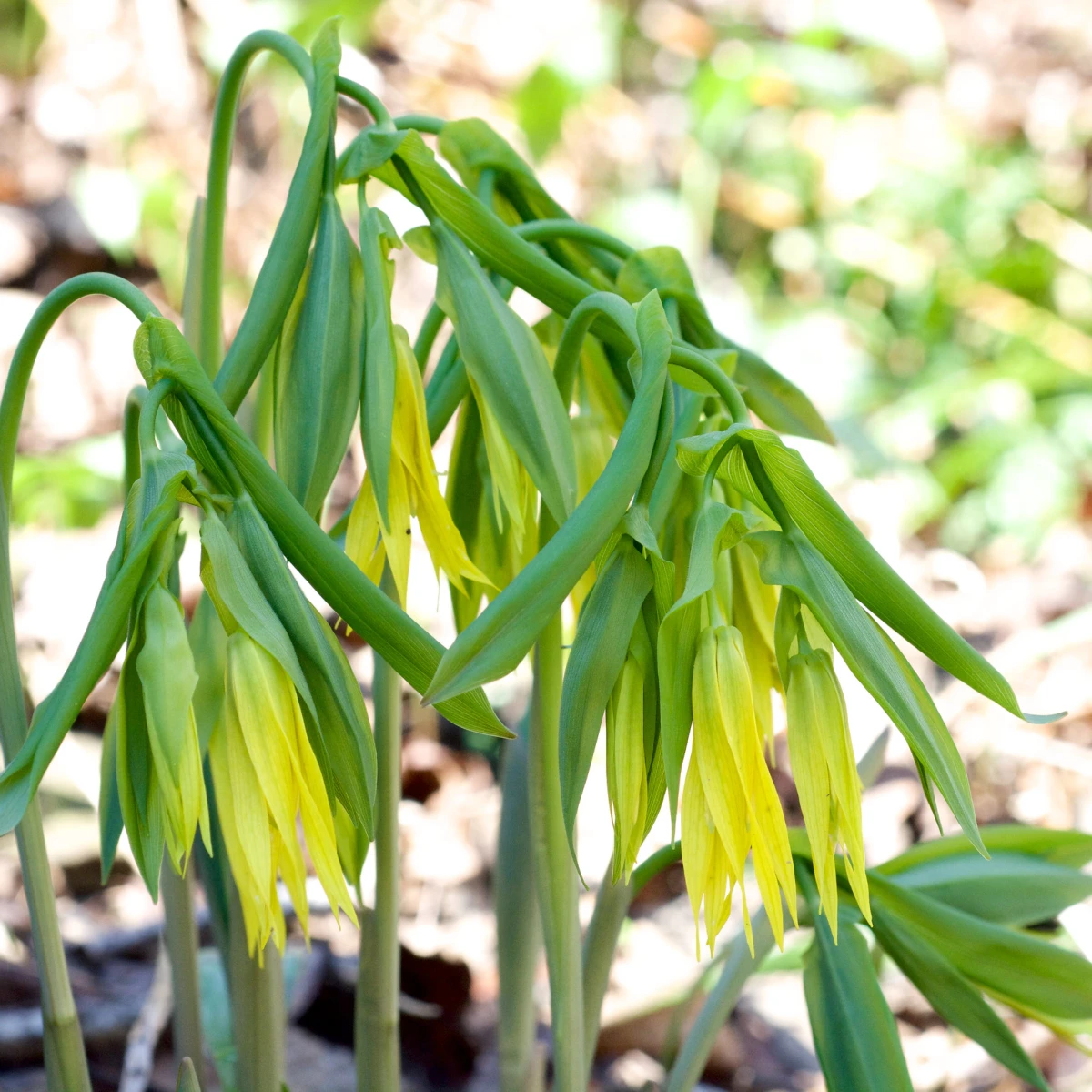
Know Your Natives – Large-Flower Bellwort
Large-flower bellwort (Uvularia grandiflora) of the Bellwort (Colchicaceae) family, formerly of the Lily (Liliaceae) family, is a clump-forming herbaceous perennial with dangling yellow flowers. It occurs in the U.S. primarily from the Ouachita Mountains to northern Minnesota, east to New York, and thence south and west along the Appalachian Mountains to northern Alabama, Mississippi and…

Know Your Natives – Yarrow
Yarrow (Achillea millefolium) of the Sunflower, Aster or Composite (Asteraceae) family has distinctive, highly dissected, frilly leaves. The species, the only Arkansas member of the genus Achillea, is native to North America, Asia, and Europe––one of the widest worldwide ranges among the flowering plants. It occurs across almost the entire U.S., including throughout all of…

Know Your Natives – Buttonbush
Buttonbush (Cephalanthus occidentalis) of the Madder or Coffee (Rubiaceae) family is a deciduous wetland shrub with many small radiating flowers packed into tight spherical heads. It occurs across a large area of the eastern U.S. from the Big Bend area of Texas, northeastward into southeastern Minnesota, and east to the Atlantic and Gulf Coasts. There…
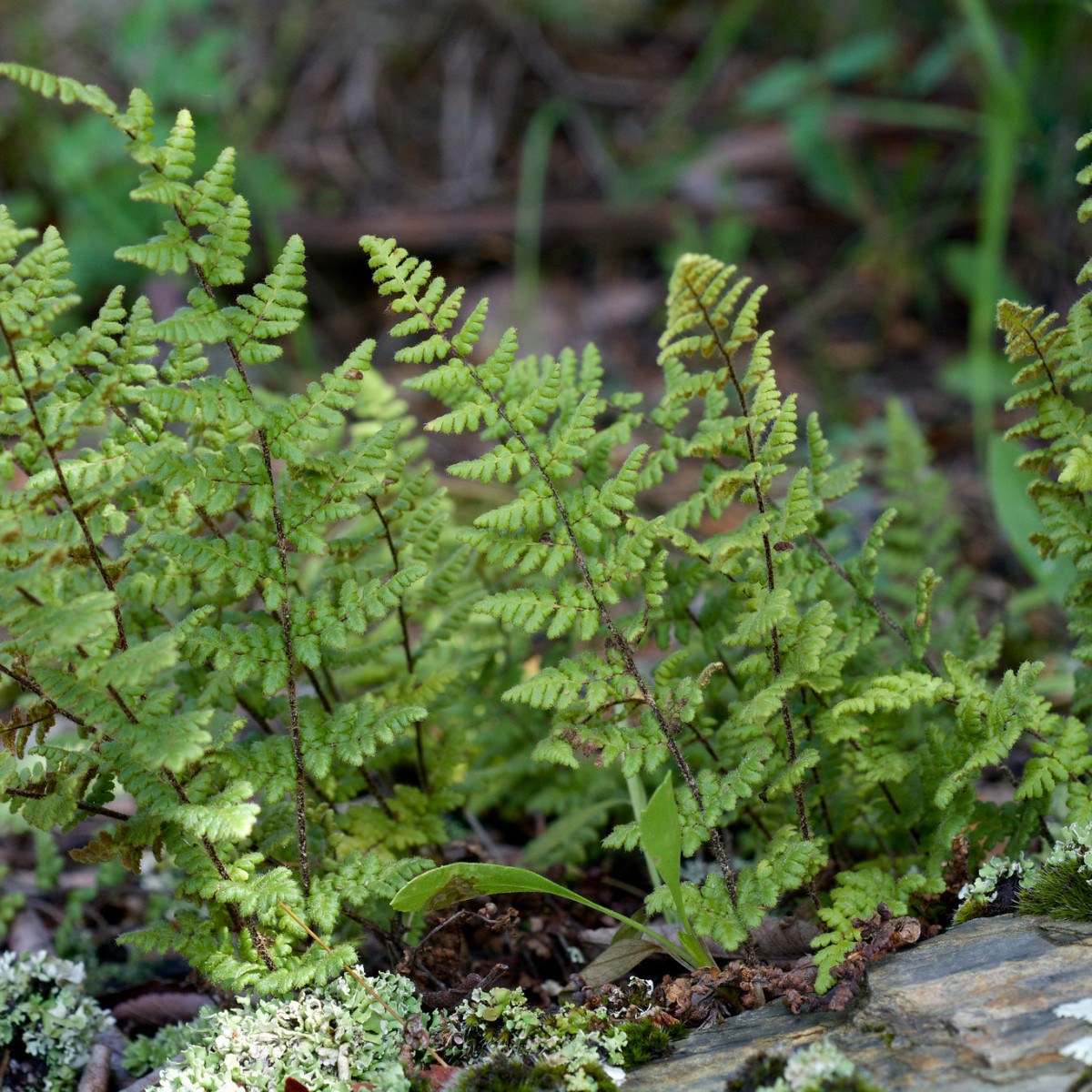
Know Your Natives – Hairy Lipfern
Hairy lipfern (Cheilanthes lanosa)* of the Brake Fern (Pteridaceae) family, formerly of the Polypody (Polypodiaceae) family, is a small to moderate-sized evergreen fern with delicate fronds. It occurs at higher elevations from Oklahoma to Connecticut, principally in the following physiographic provinces: Interior Highlands, Interior Low Plateaus, Valley and Ridge, Blue Ridge and Piedmont. In Arkansas,…
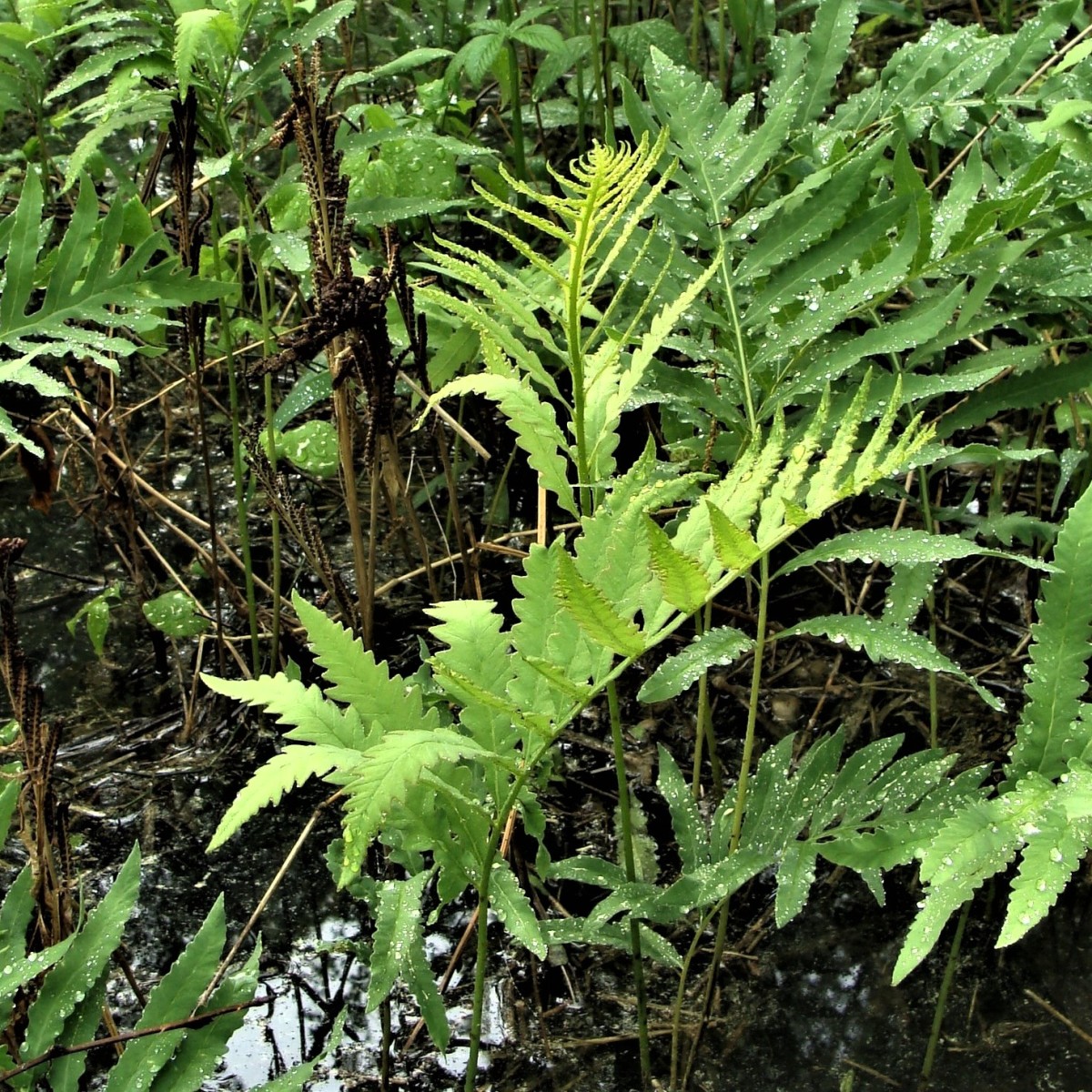
Know Your Natives – Sensitive Fern
Sensitive fern (Onoclea sensibilis) of the Sensitive Fern (Onocleaceae) family, formerly of the Polypody Fern (Polypodiaceae) family, is a widespread fern with dimorphic fronds (leaves): deciduous, sterile, photosynthetic (green) fronds and persistent, non-green, fertile fronds. The genus name is from the Greek for “closed cup,” from the rolled pinnules (divisions of pinnae) that conceal the…
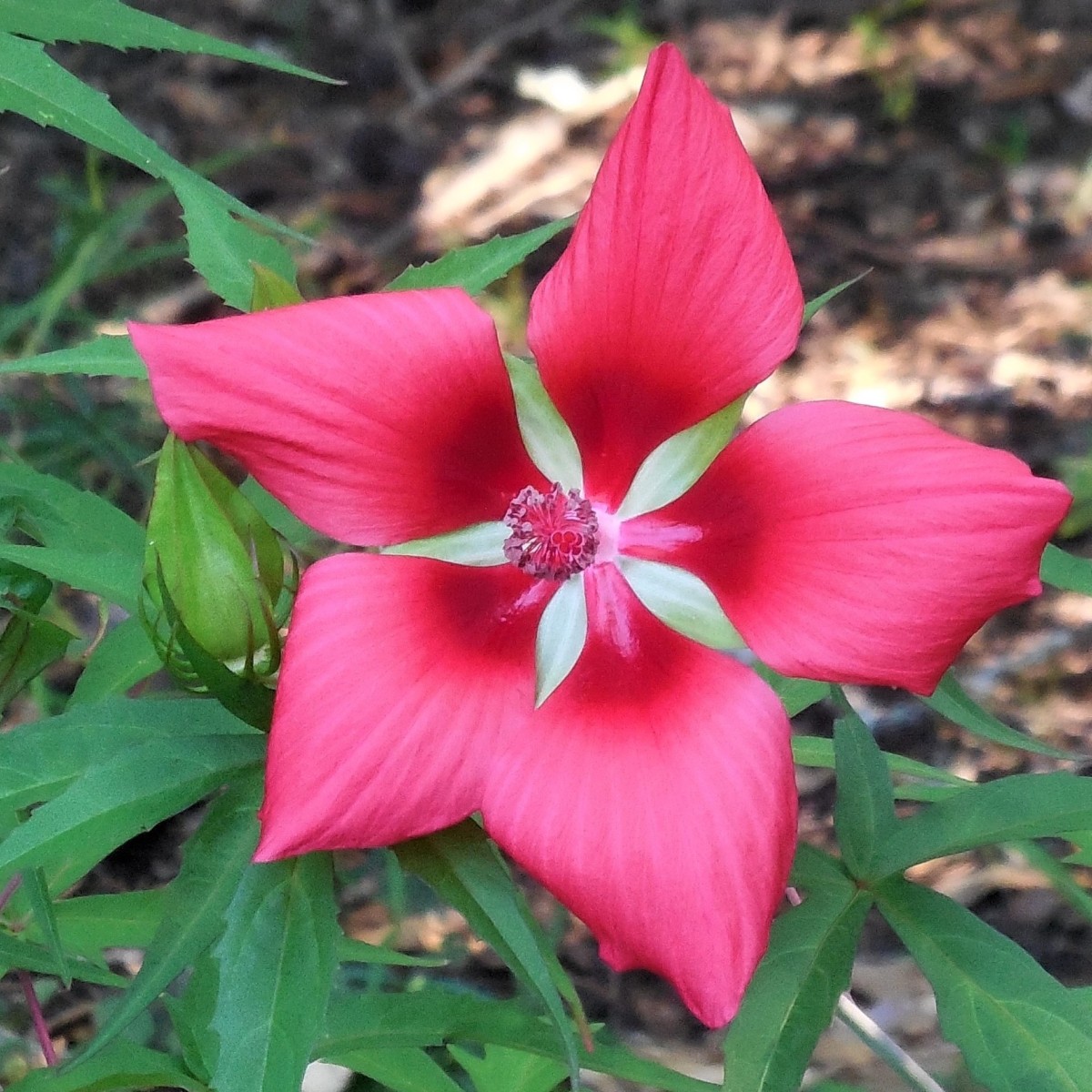
Know Your Natives – Scarlet Rose Mallow
Scarlet rose mallow or swamp hibiscus (Hibiscus coccineus) of the Mallow or Cotton (Malvaceae) family is a tall herbaceous perennial with large, spectacular, scarlet (rarely white) flowers. The genus name is an old Greek name for “mallow”. The specific epithet is Latin for “scarlet”. The species occurs in scattered areas of the Coastal Plain from…

Know Your Natives – White Crownbeard
White crownbeard or white wingstem (Verbesina virginica) of the Aster, Sunflower, or Composite (Asteraceae) family has tall winged stems with domed clusters of white flower heads. In the U.S., it is found primarily from central Texas up through southeast Kansas, across to Maryland and thence to the Atlantic and Gulf Coasts. In Arkansas, the species…
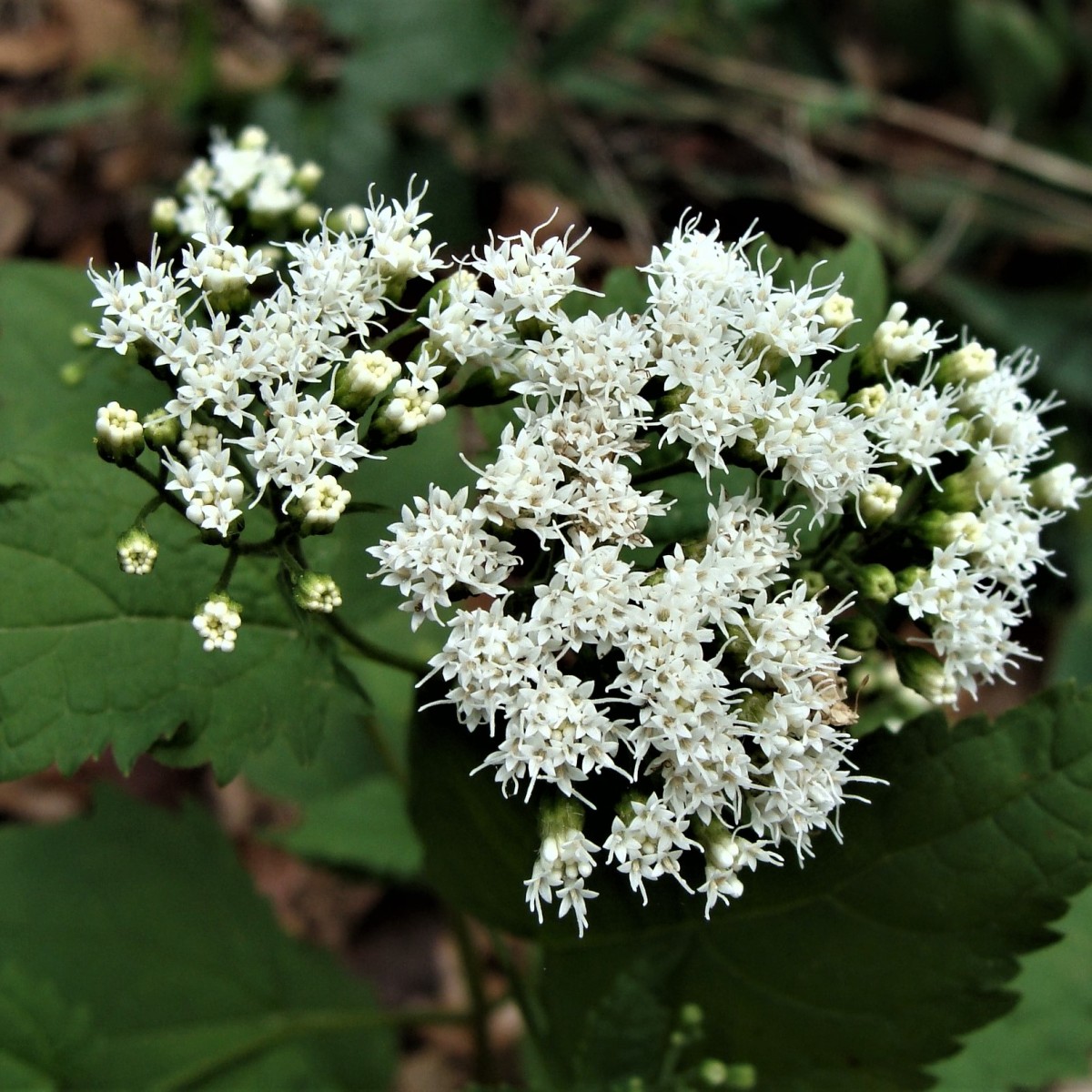
Know Your Natives – White Snakeroot
White snakeroot (Ageratina altissima*), formerly Eupatorium rugosum, of the Aster, Sunflower, or Composite (Asteraceae ) family has a multitude of small white flowerheads late in the growing season. It occurs from Texas to eastern North Dakota, across all states to the Atlantic and Gulf Coasts, but of limited occurrence in Florida and Georgia. In Arkansas,…
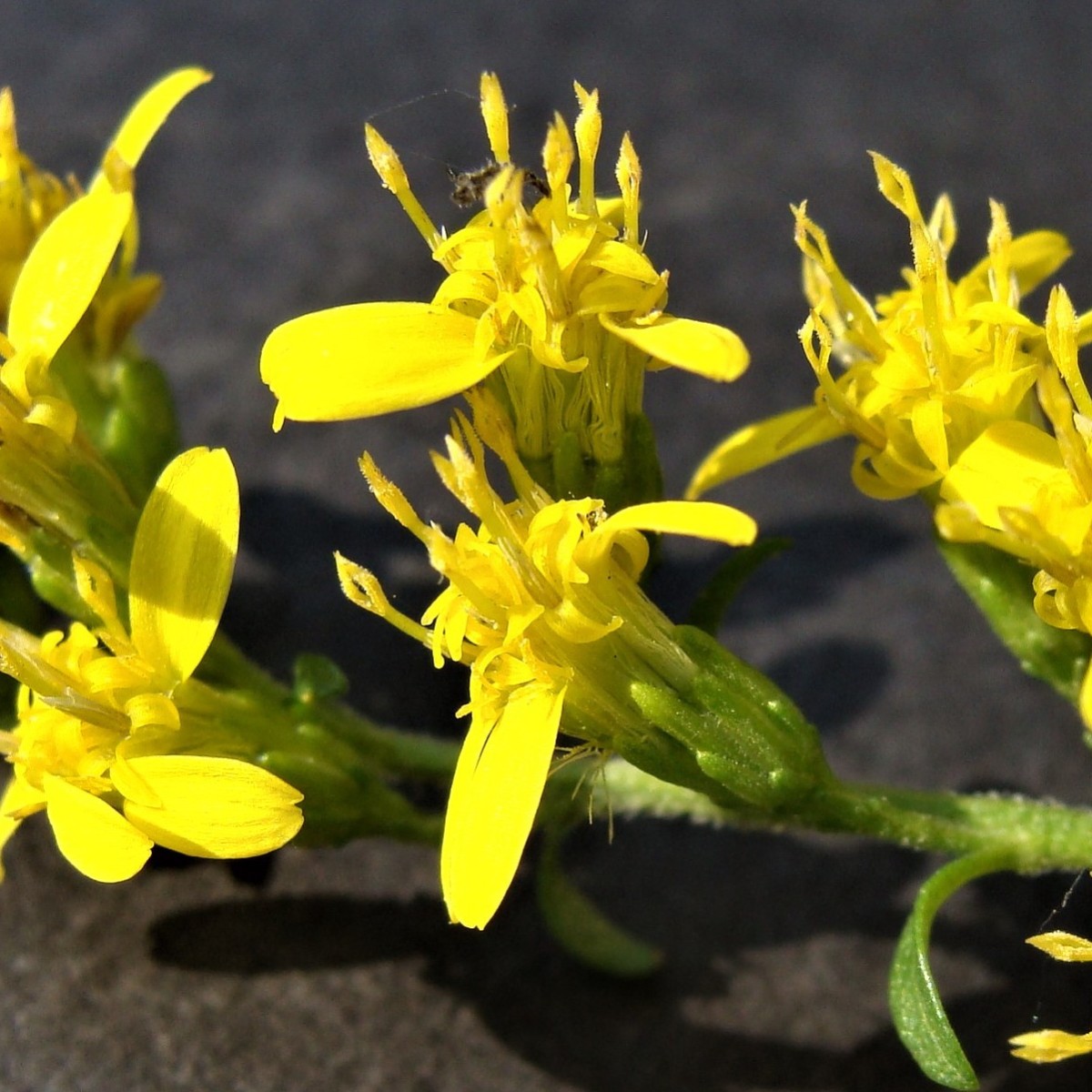
Know Your Natives – Boott’s Goldenrod
Boott’s goldenrod (Solidago arguta subsp. caroliniana var. boottii*) of the Aster or Sunflower (Asteraceae) family is a medium-size goldenrod with large ovate-lanceolate basal leaves. The genus name is from Latin for “to make whole” or “to heal” in reference to purported health benefits derived from some species of the genus. The varietal name honors Francis…
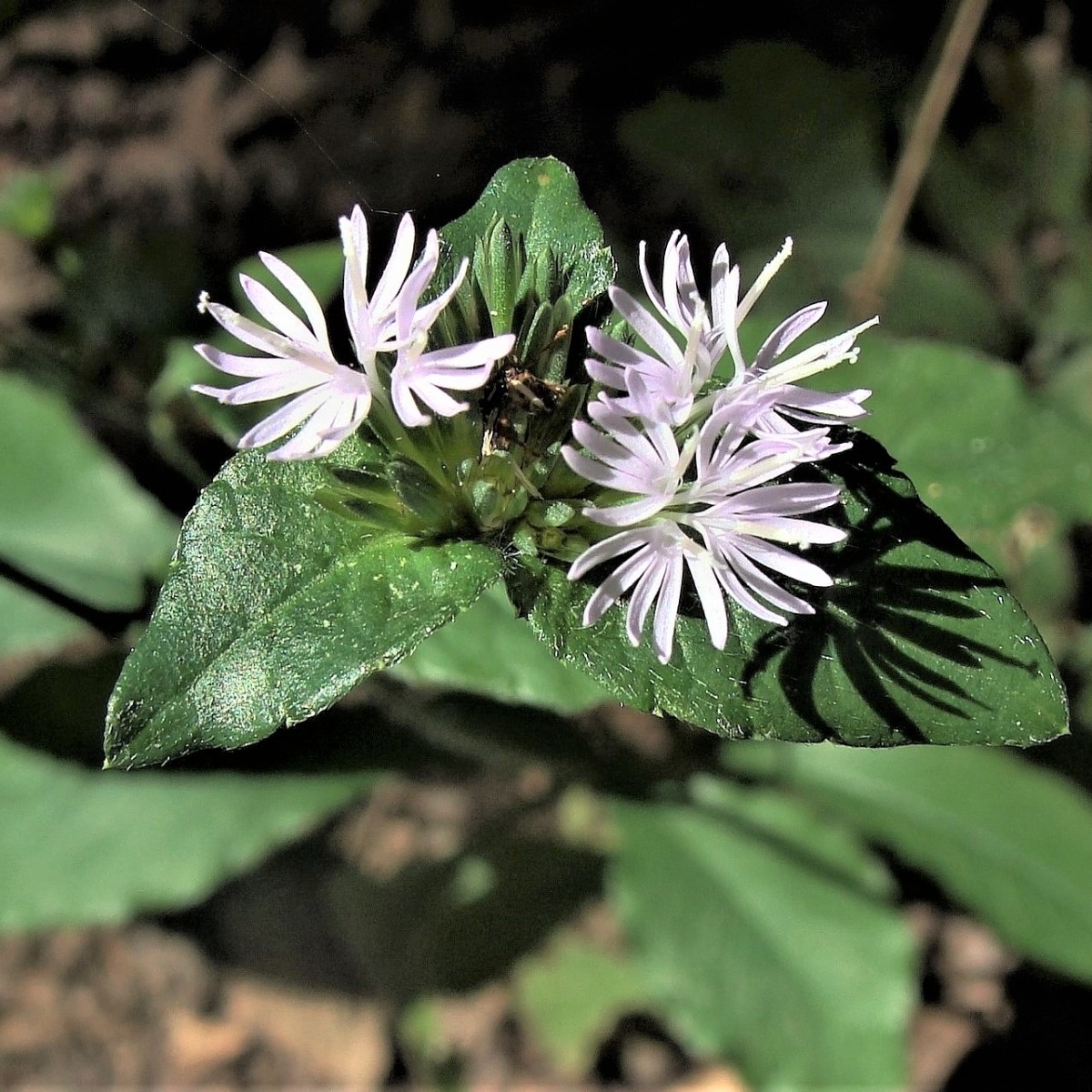
Know Your Natives – Carolina Elephant’s-Foot
Carolina elephant’s foot (Elephantopus carolinianus), of the Sunflower or Aster or Composite (Asteraceae) family, is a herbaceous perennial with leafy stems and small lavender flowers. In the U.S., the species occurs from eastern Texas to southeastern Kansas, east to Pennsylvania and New Jersey, and southward to the Atlantic and Gulf Coasts. In Arkansas, it occurs…
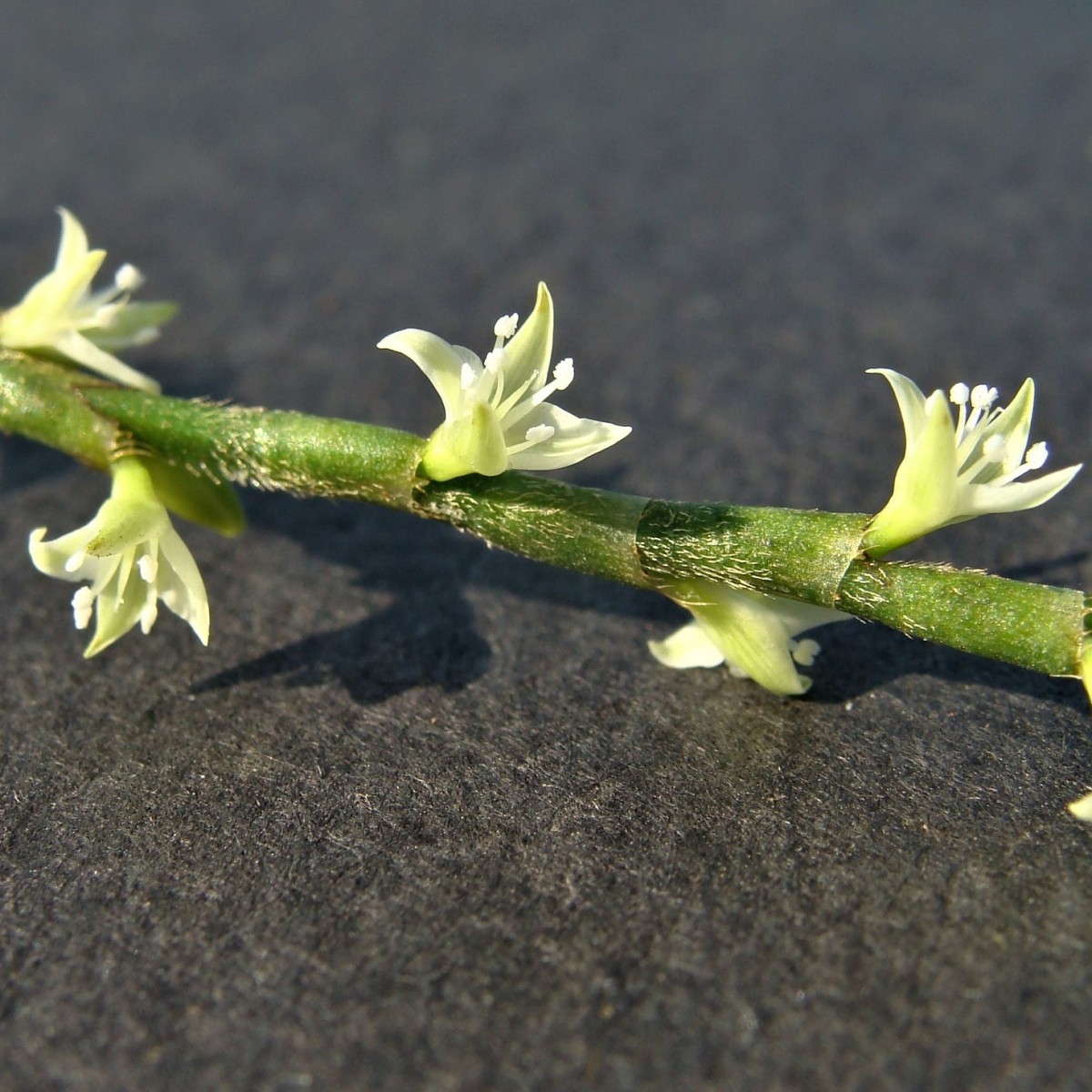
Know Your Natives – Jumpseed
Jumpseed (Persicaria virginiana), formerly Polygonum virginianum, of the Buckwheat (Polygonaceae) family has slender knobby terminal stems that bear long racemes of tiny white flowers. In the U.S., it occurs throughout the East, from eastern Texas north into eastern Nebraska and southern Minnesota, and east to the Atlantic and Gulf coasts. In Arkansas, it occurs statewide.…

Know Your Natives – Tall Coreopsis
Tall coreopsis or tall tickseed (Coreopsis tripteris) of the aster or sunflower family (Asteraceae) is the tallest of eight coreopsis species native to Arkansas. It occurs primarily from eastern Texas north to Iowa and Wisconsin and east to Pennsylvania and the Florida panhandle. In Arkansas, it grows throughout much of the state except for lower…

Know Your Natives – Missouri Ironweed
Missouri ironweed (Vernonia missurica) of the Sunflower or Aster (Asteraceae) family has vivid purple to magenta composite flowerheads in midsummer. The primary area of occurrence extends from western Florida to eastern Texas, north and east to Indiana and southern Michigan. In Arkansas, the species occurs throughout most of the state, though apparently absent from portions…
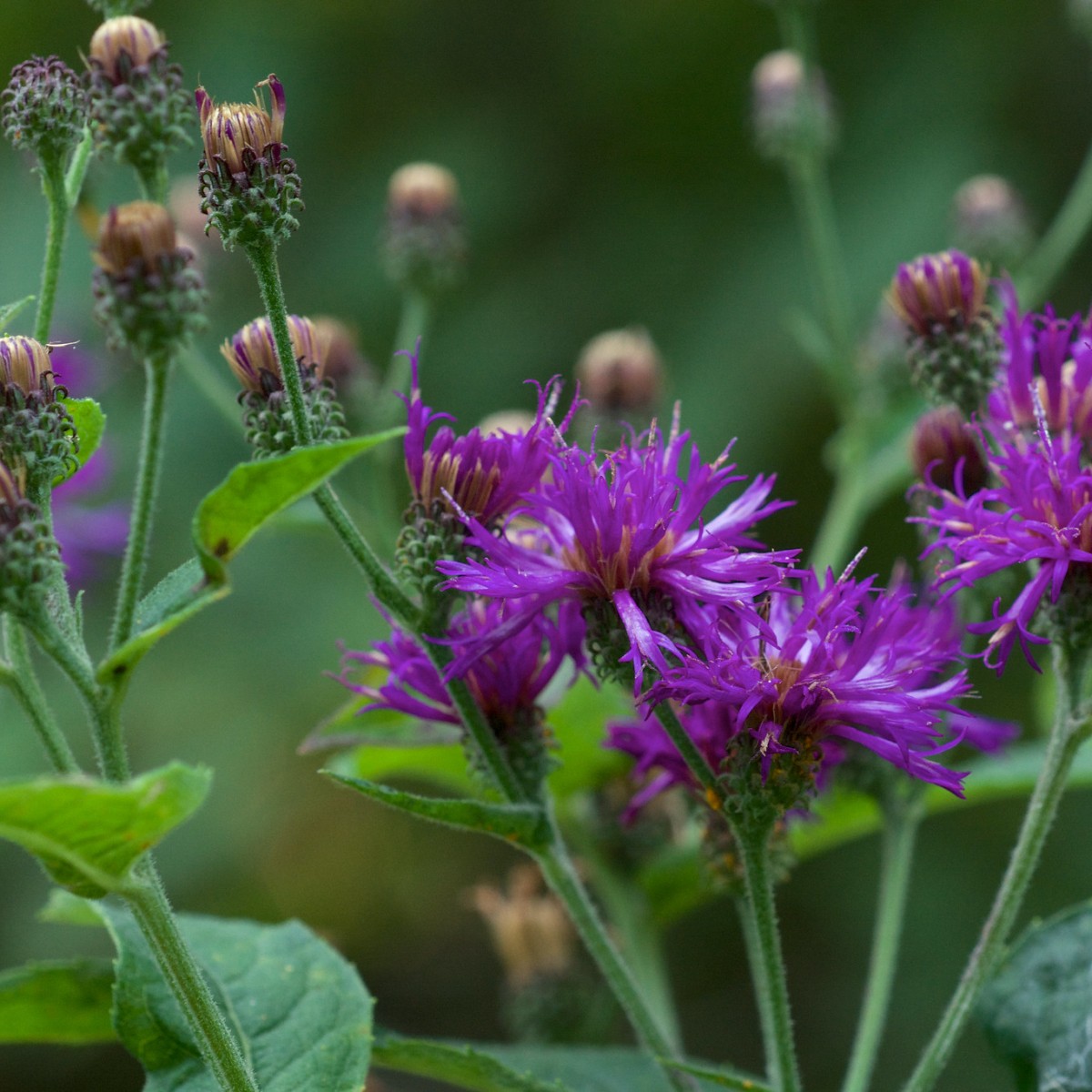
Know Your Natives – Baldwin’s Ironweed
Baldwin’s ironweed (Vernonia baldwinii) of the Sunflower or Aster (Asteraceae) family is a tall plant with a vivid purple inflorescence. In the U.S., it occurs principally from central Texas north to Nebraska and Iowa and east to Illinois and Arkansas. In Arkansas, it is found in the northwestern two-thirds of the state, primarily within the…
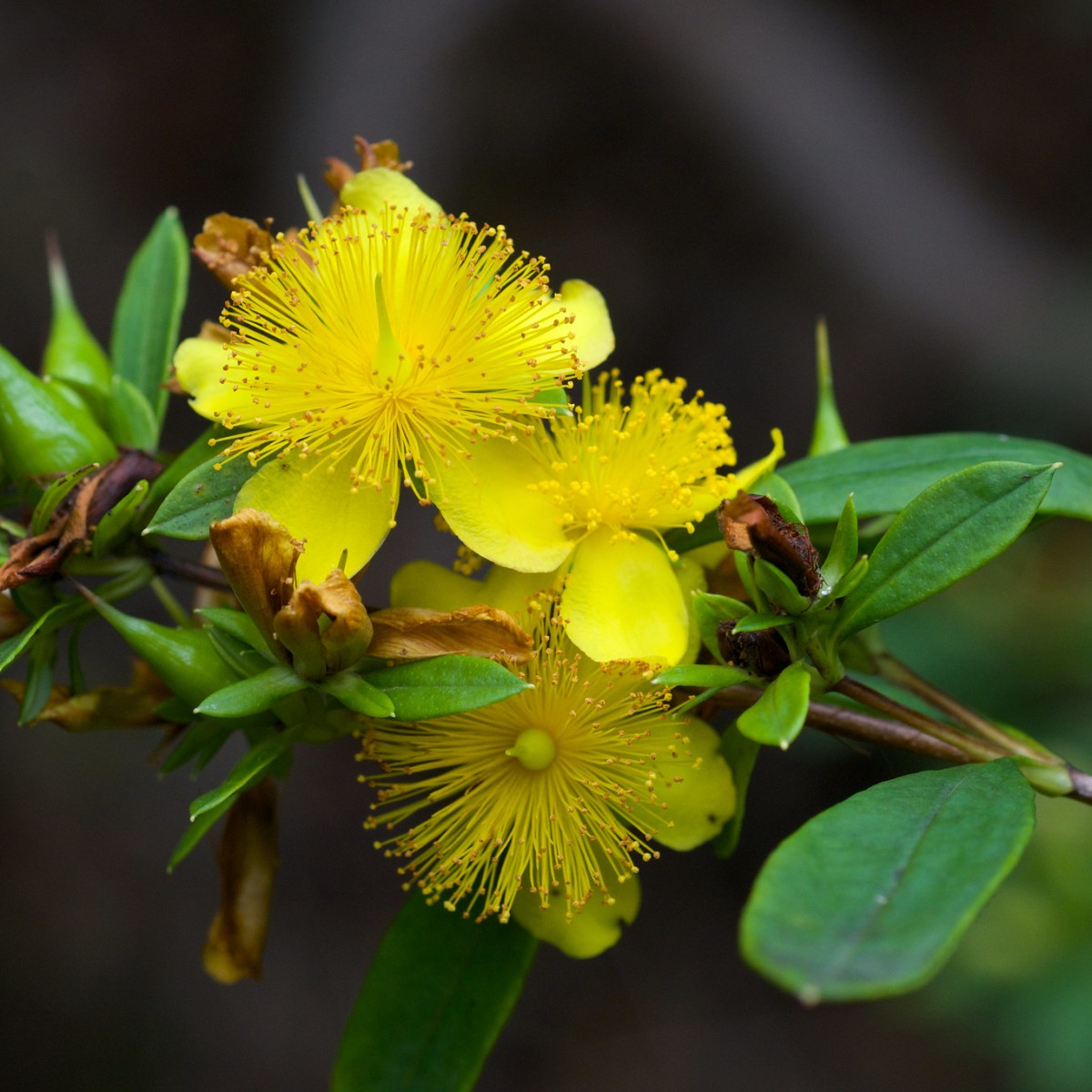
Know Your Natives – Shrubby St. John’s-wort
Shrubby St. John’s-wort (Hypericum prolificum) of the St. John’s-wort (Hypericaceae) family is a short-lived, deciduous shrub with spectacular bright yellow flowers. The genus name originates from Greek words for “above” and “picture,” from the practice of placing flowers above a wall-mounted picture to discourage evil spirits on St. John’s feast day. The specific epithet, meaning…

Know Your Natives – Royal Fern
Royal fern (Osmunda regalis var. spectabilis*) of the Royal Fern (Osmundaceae) family is a large herbaceous fern with a crown of clustered spore cases (sporangia) on the fertile fronds (leaves). In the U.S., it occurs from eastern Texas to Minnesota and thence to the Atlantic and Gulf Coasts. In Arkansas, it occurs pretty much statewide.…
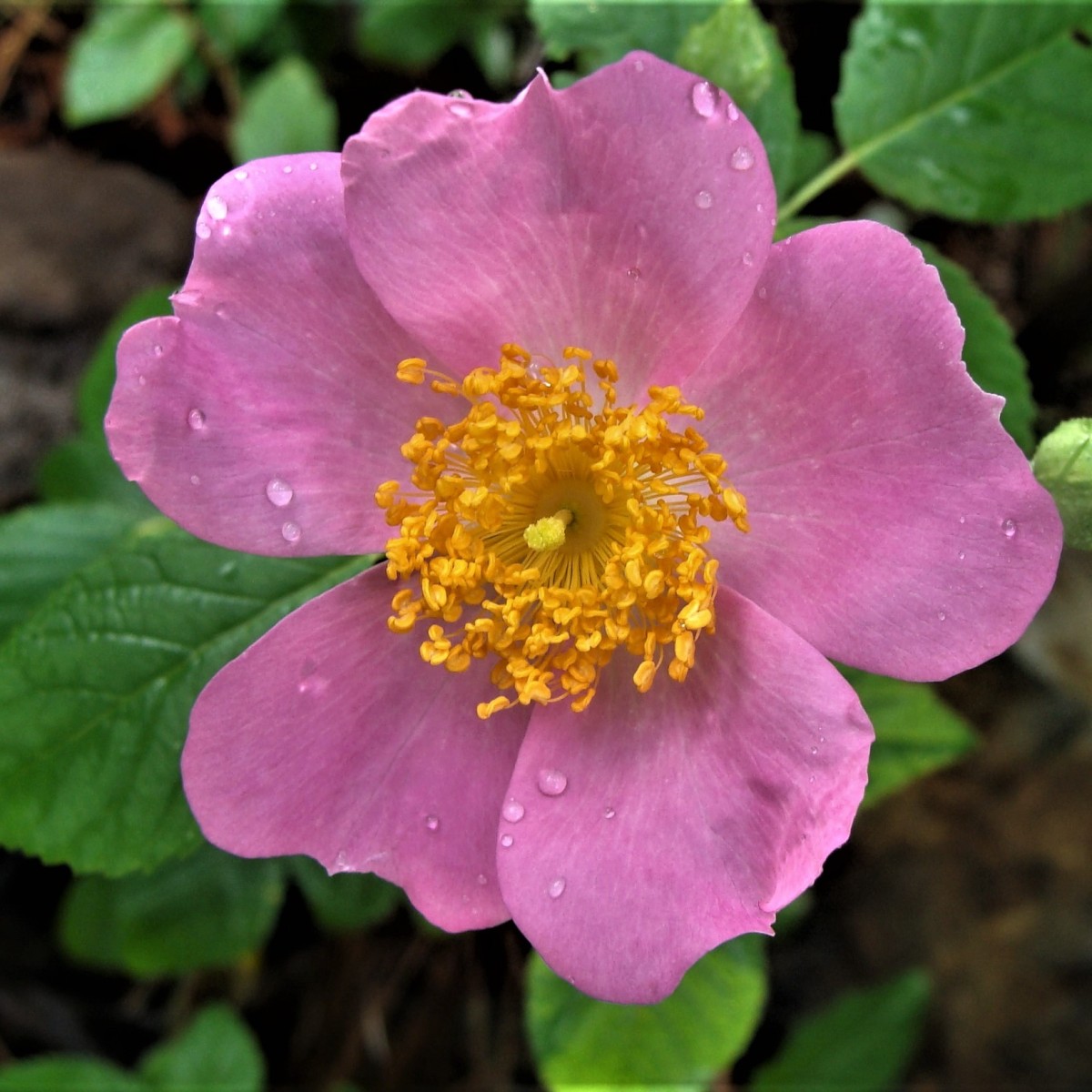
Know Your Natives – Climbing Rose
Flowers of climbing rose (Rosa setigera) of the Rose (Rosaceae) family, one of four native roses that occur in Arkansas, have a single layer of five pink (occasionally white) petals. The genus name is Latin for “rose,” the specific epithet, also Latin, means “bristle-bearing”. Climbing rose occurs in the U.S. from Texas to Wisconsin east…
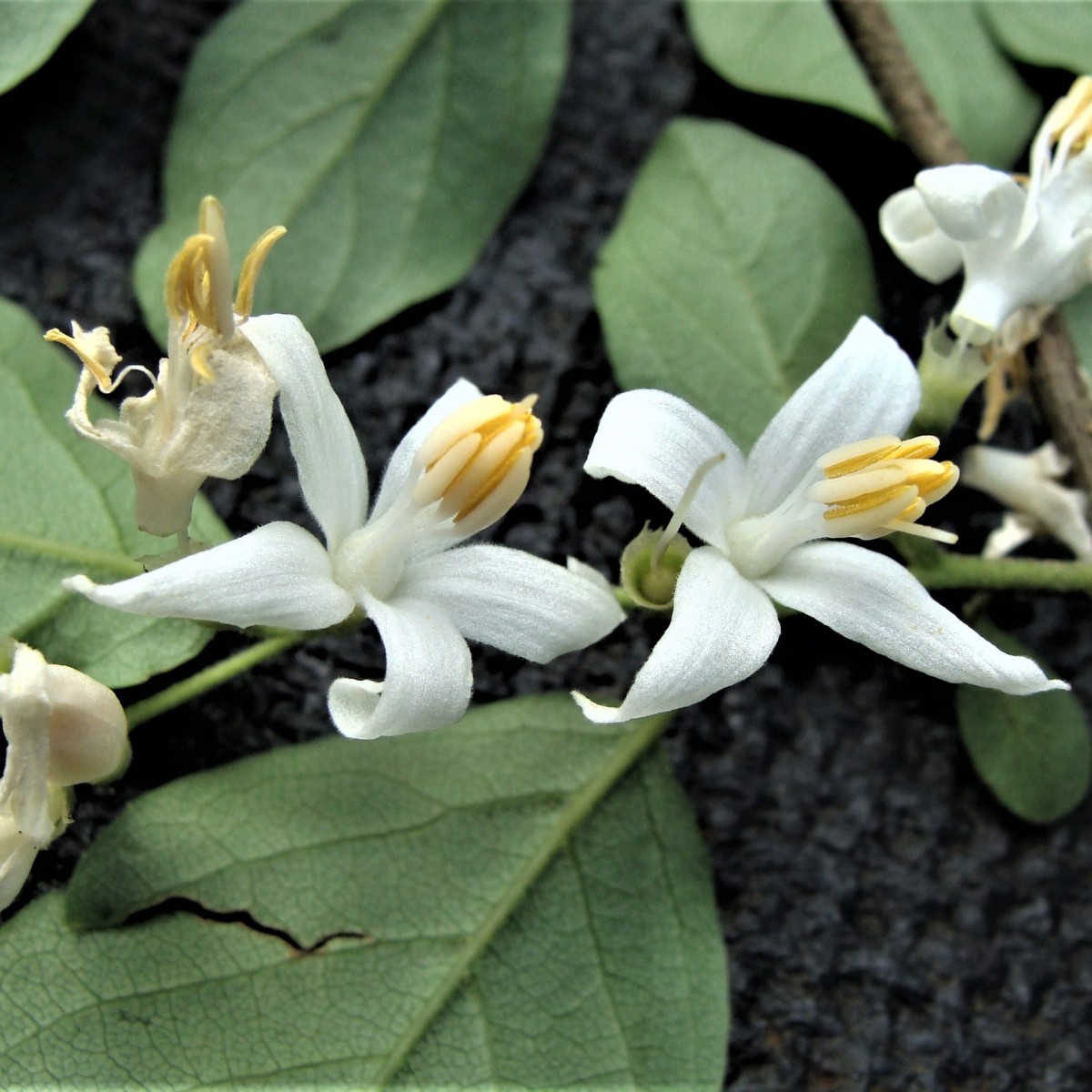
Know Your Natives – American Snowbell
American snowbell or storax (Styrax americanus) of the Storax (Styracaceae) family is a large deciduous shrub with bell-shaped snowy-white flowers. The genus name is the ancient Greek name for a European species, Styrax officinalis. The specific epithet refers to the native range of the species. In the U.S., it occurs from Illinois and Virginia south to…
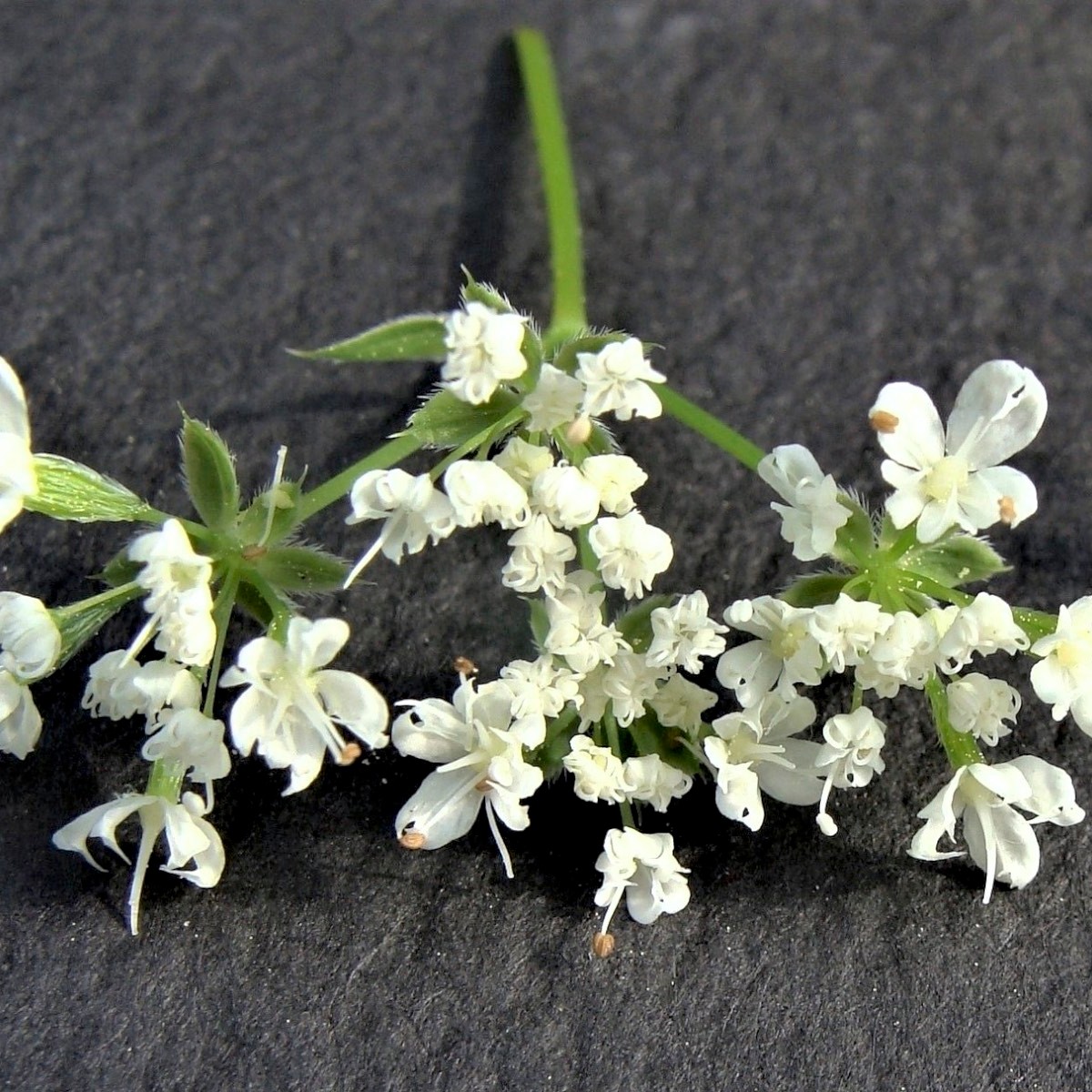
Know Your Natives – Aniseroot
Aniseroot (Osmorhiza longistylis) of the Carrot (Apiaceae) family is a herbaceous erect perennial that has pleasantly aromatic roots. It occurs across most of the U.S. from New Mexico to Montana, thence east to the Gulf and Atlantic Coasts, with the exception of Louisiana and Florida. In Arkansas, the species occurs in the Highlands of the…
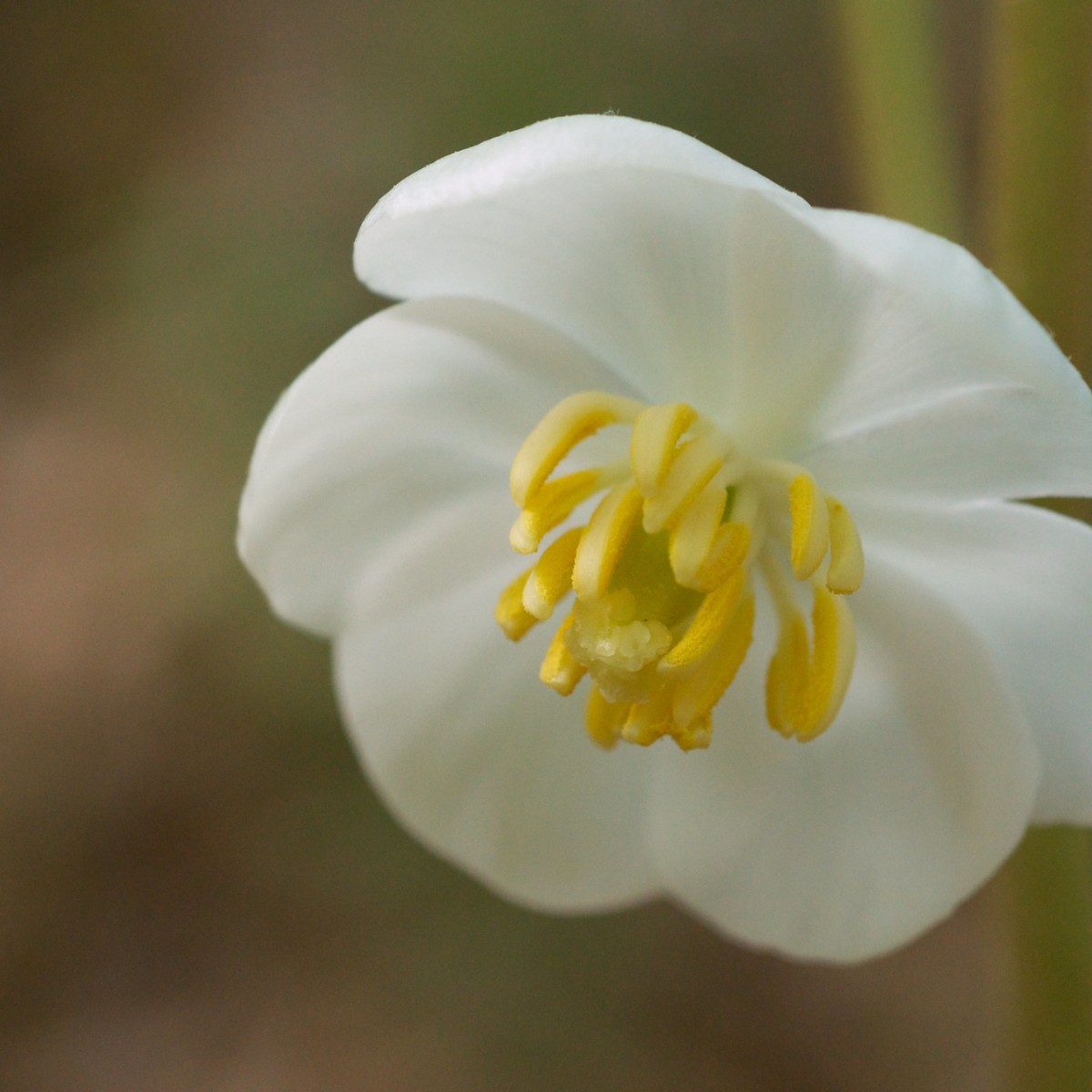
Know Your Natives – Mayapple
Mayapple (Podophyllum peltatum) of the Barberry (Berberidaceae) family is an herbaceous perennial that has one or two large leaves per stalk. The genus name is from Greek words for “foot” and “leaf”, in reference to the appearance of the leaves. The specific epithet, from Latin, is a reference to the vegetative leaf’s umbrella-like form, in…
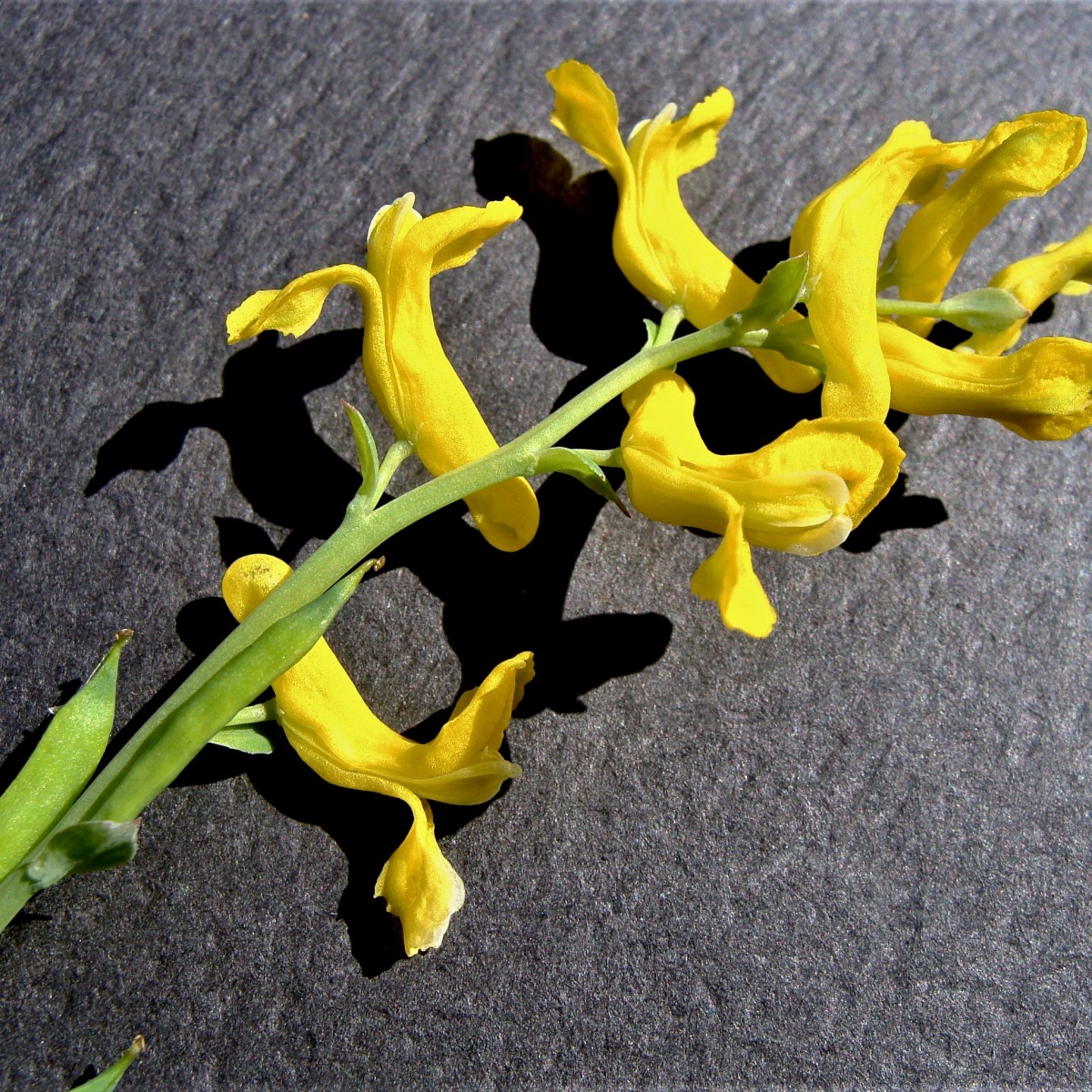
Know Your Natives – Southern Corydalis
Southern corydalis (Corydalis micrantha subsp. australis)* of the Poppy (Papaveraceae) family, formerly of the Fumitory (Fumariaceae) family, is an over-wintering annual that reproduces both sexually (chasmogamous flowers, which are cross-pollinated) and asexually (cleistogamous flowers, which are self-pollinated). In the U.S., it occurs from Texas and Louisiana, north to Kansas and Illinois, and then east along…
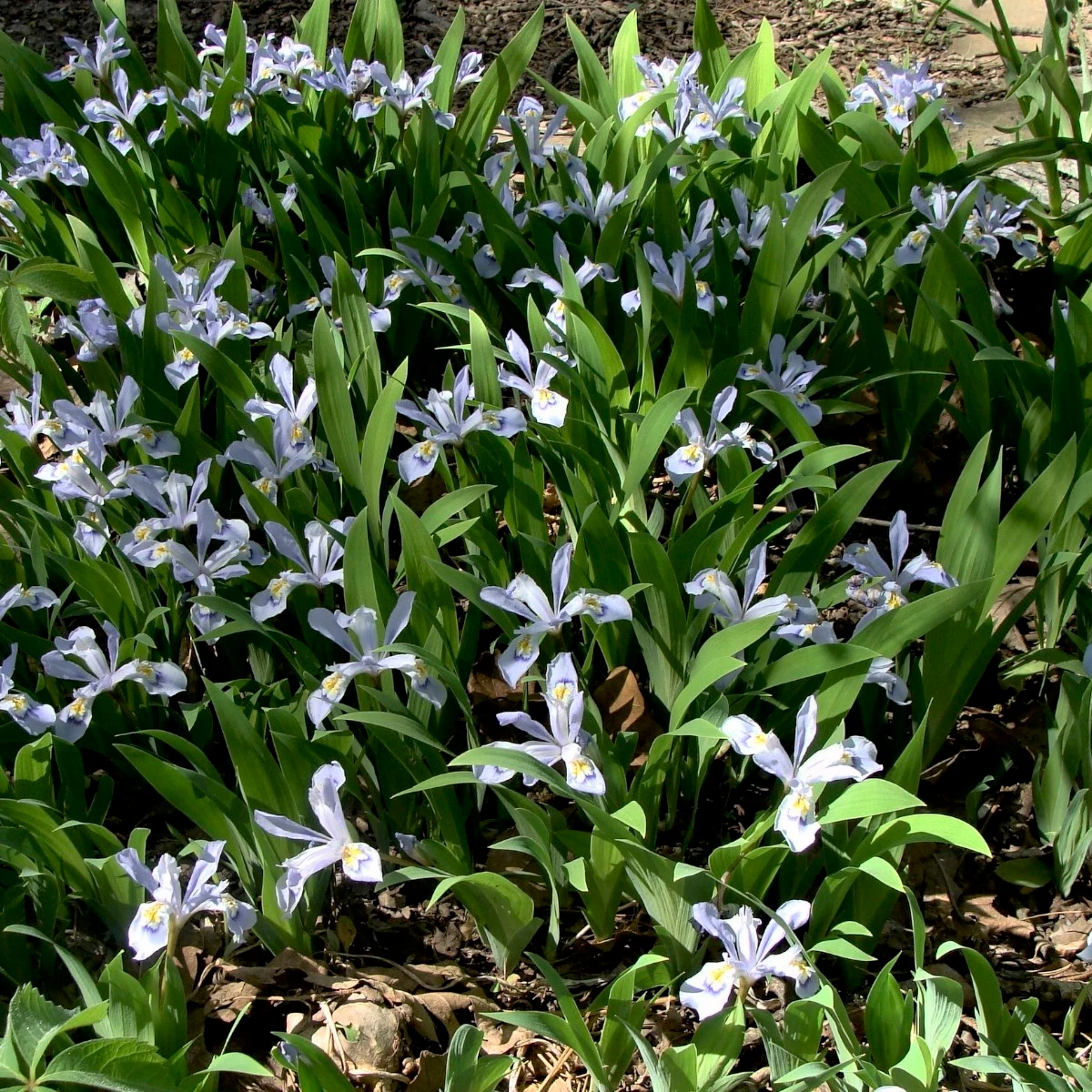
Know Your Natives – Crested Iris
Crested iris or dwarf crested iris (Iris cristata) of the Iris (Iridaceae) family is a low-growing iris that produces light blue flowers in early spring. In the U.S., it occurs from Oklahoma, Arkansas and Missouri east to Atlantic Coastal states. In Arkansas, the species occurs across the Ozark Plateaus, Arkansas Valley and Ouachita Mountains. The…

Know Your Natives – Hairy Skullcap
Hairy skullcap (Scutellaria elliptica) of the Mint (Lamiaceae) family is one of nine skullcap species known to occur in Arkansas. The genus name is from the Latin scutella, a dish, in reference to the distinctive shape of the lower portion of the fruiting calyx (see below). The specific epithet refers to the leaf shape. The…

Know Your Natives – Ernest’s Spidewort
Ernest’s spiderwort (Tradescantia ernestiana) of the Commelinaceae (Spiderwort) family is an early-blooming, low-growing species, one of the 12 spiderworts that occur in Arkansas. The genus name honors John Tradescant, gardener to Charles I of England, while the specific epithet honors American botanist Ernest Jesse Palmer. This spiderwort occurs in Missouri, Oklahoma, Arkansas, Mississippi and Alabama.…
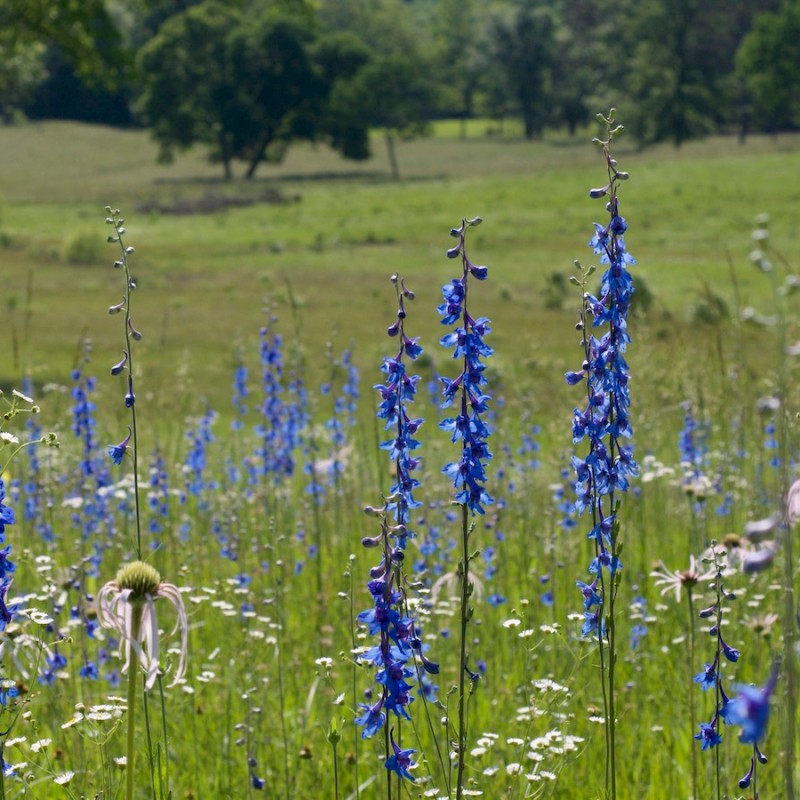
Know Your Natives – Carolina Larkspur
Carolina larkspur (Delphinium carolinianum subsp. carolinianum) of the Buttercup (Ranunculaceae) family has irregular (bilaterally symmetrical) springtime flowers that are typically deep blue. The genus name is based on a Greek word for “dolphin”, in reference to the shape of flower buds (when viewed from the side). The specific epithet is a reference to one of…
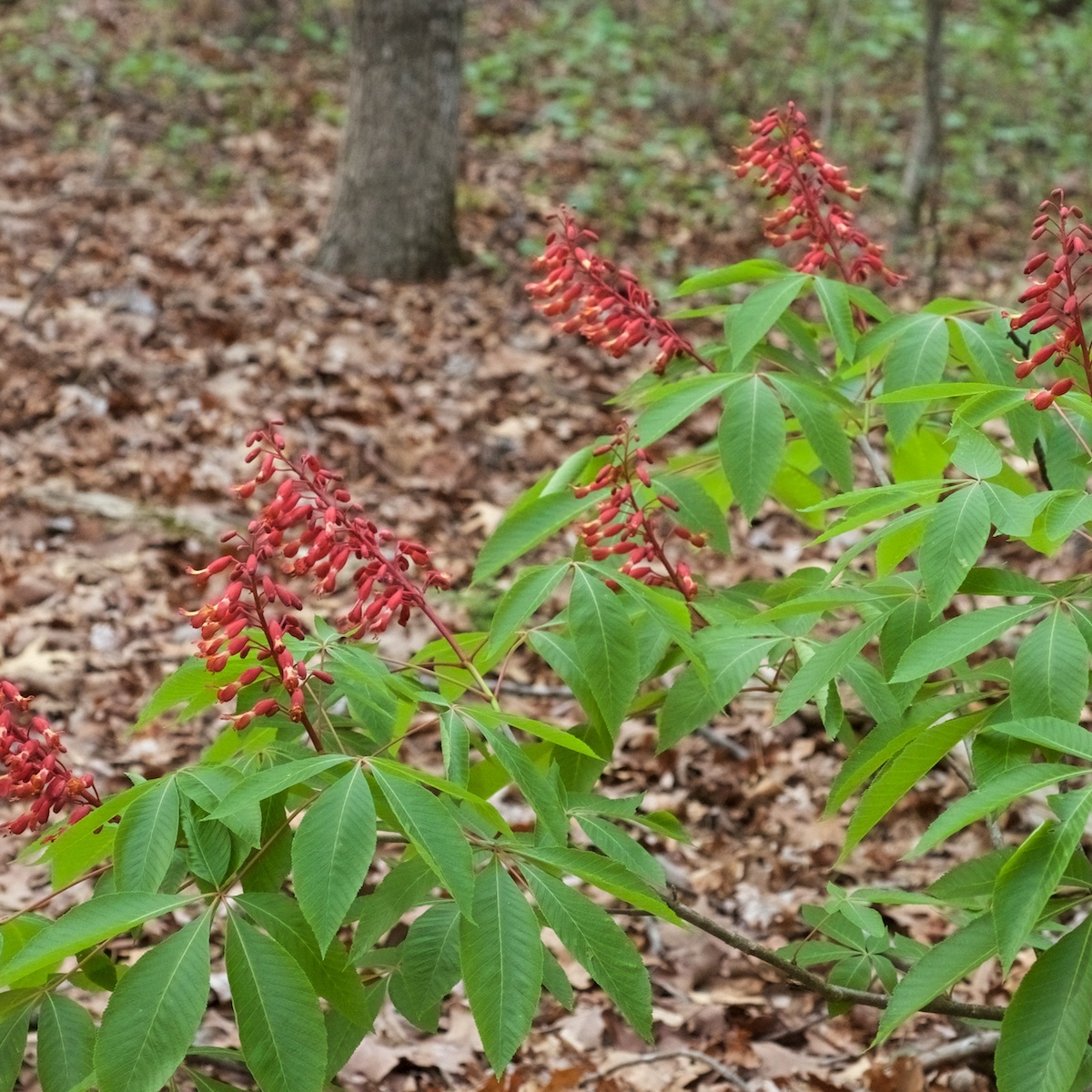
Know Your Natives – Red Buckeye
Red buckeye (Aesculus pavia var. pavia*) of the recently expanded Soapberry (Sapindaceae) family–it now includes the maples from the former Aceraceae as well as the buckeyes and horse-chestnuts previously classified in the Hippocastanaceae–has large, showy red inflorescences in early spring. The genus name, a classical name for an oak tree, is based on the Latin…

Know Your Natives – Celandine Poppy
Celandine poppy or wood poppy (Stylophorum diphyllum) of the Poppy (Papaveraceae) family is a herbaceous perennial that bears bright yellow flowers in early spring. The genus name is from the Greek for “style” and “bearing” in reference to the flower’s distinctively long style. The specific epithet is also from the Greek, for “two leaves,” in…
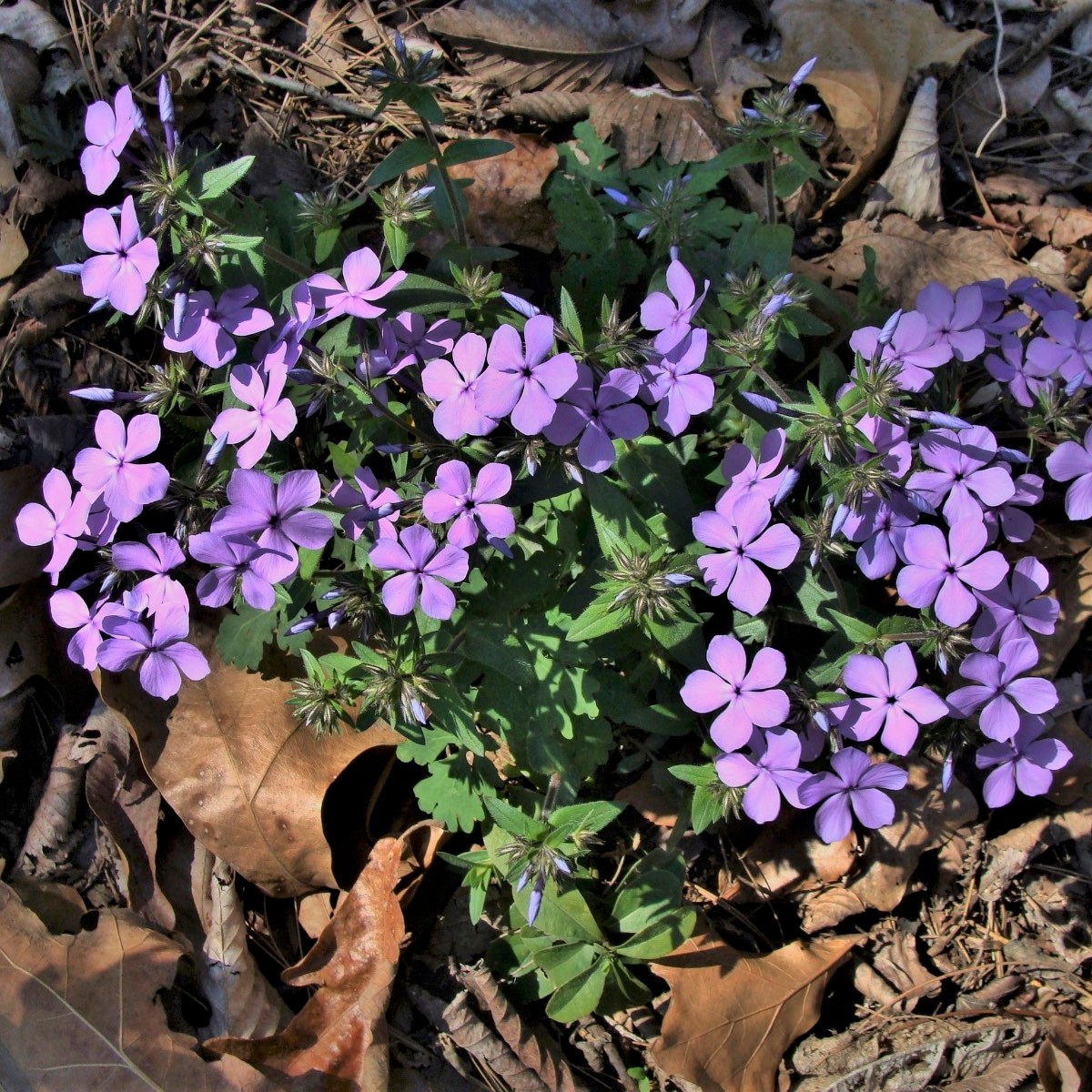
Know Your Natives – Woodland Phlox
Woodland phlox, blue phlox or wild sweet William (Phlox divaricata ssp. laphamii) of the Phlox (Polemoniaceae) family is the first phlox to bloom in the spring in Arkansas. The genus name is Greek for “flame,” in reference to many species of the genus with strongly colored corollas. The specific epithet, from the Latin, refers to…
Loading…
Something went wrong. Please refresh the page and/or try again.

